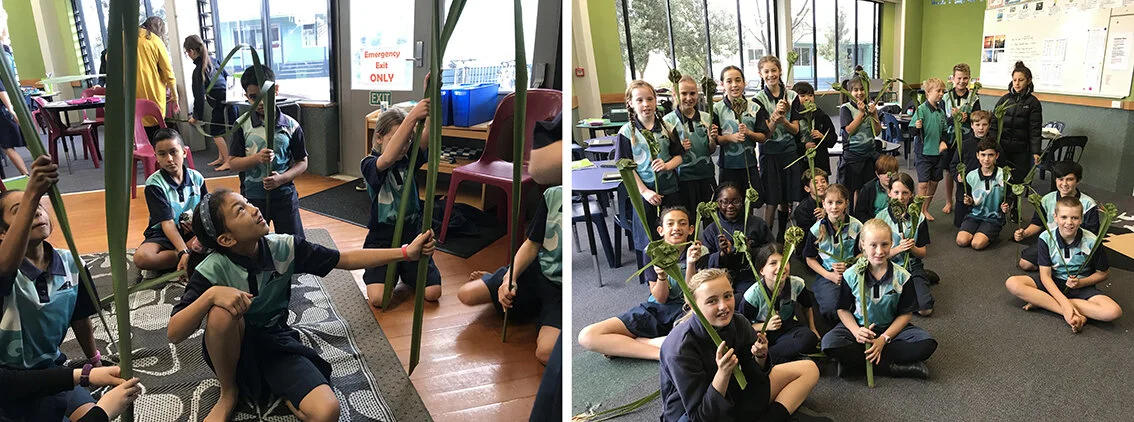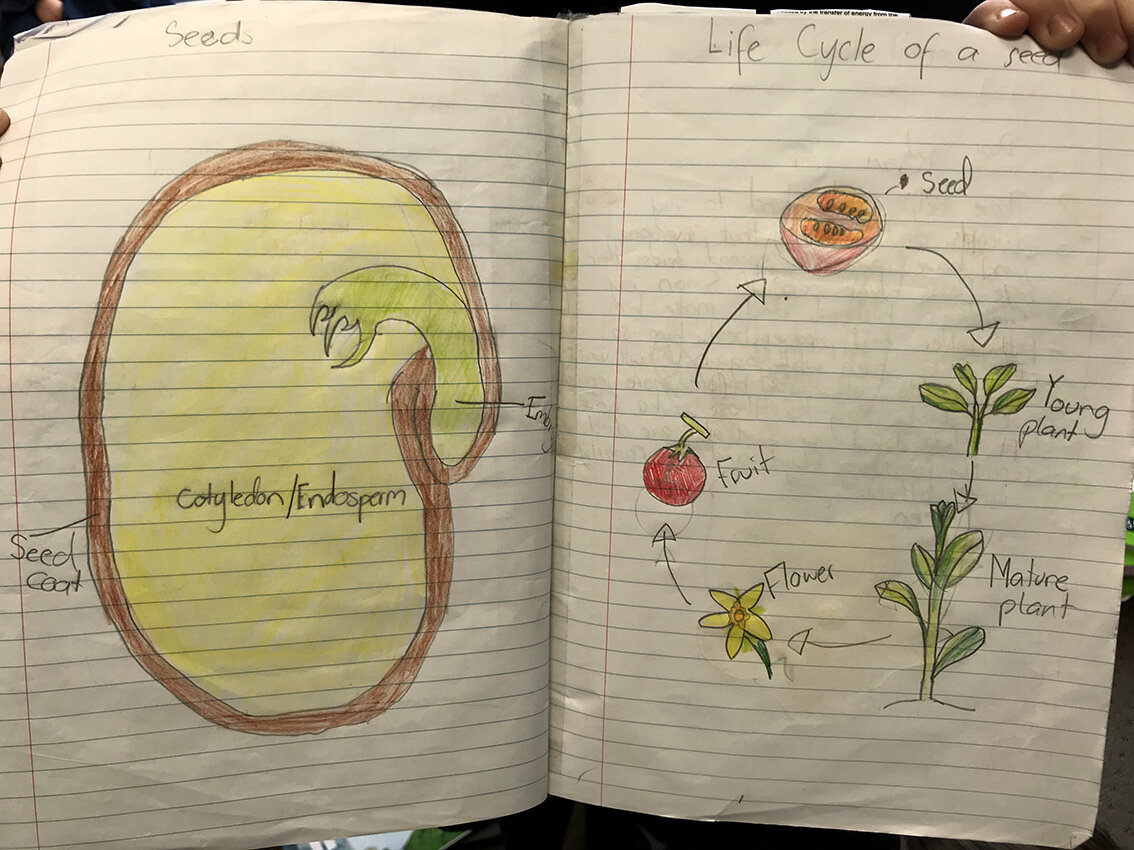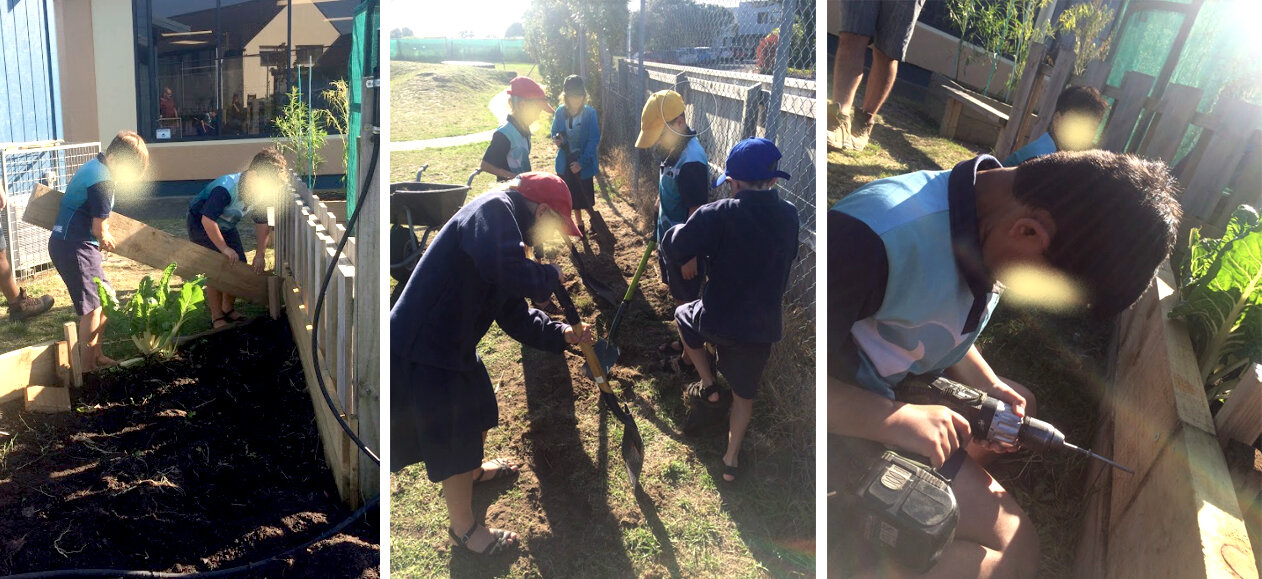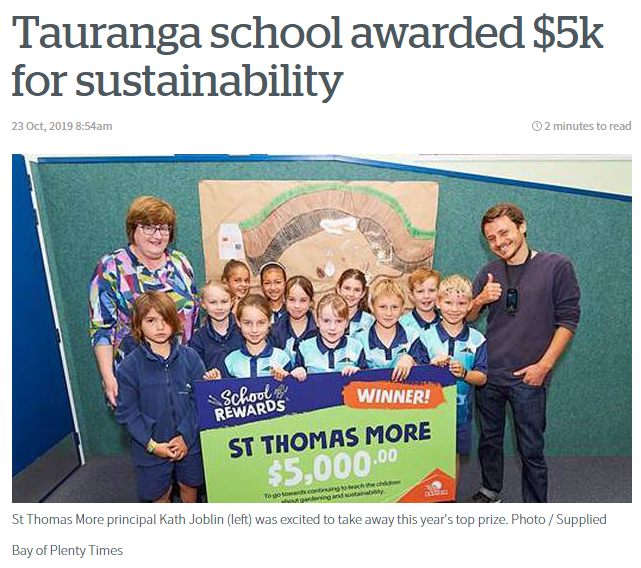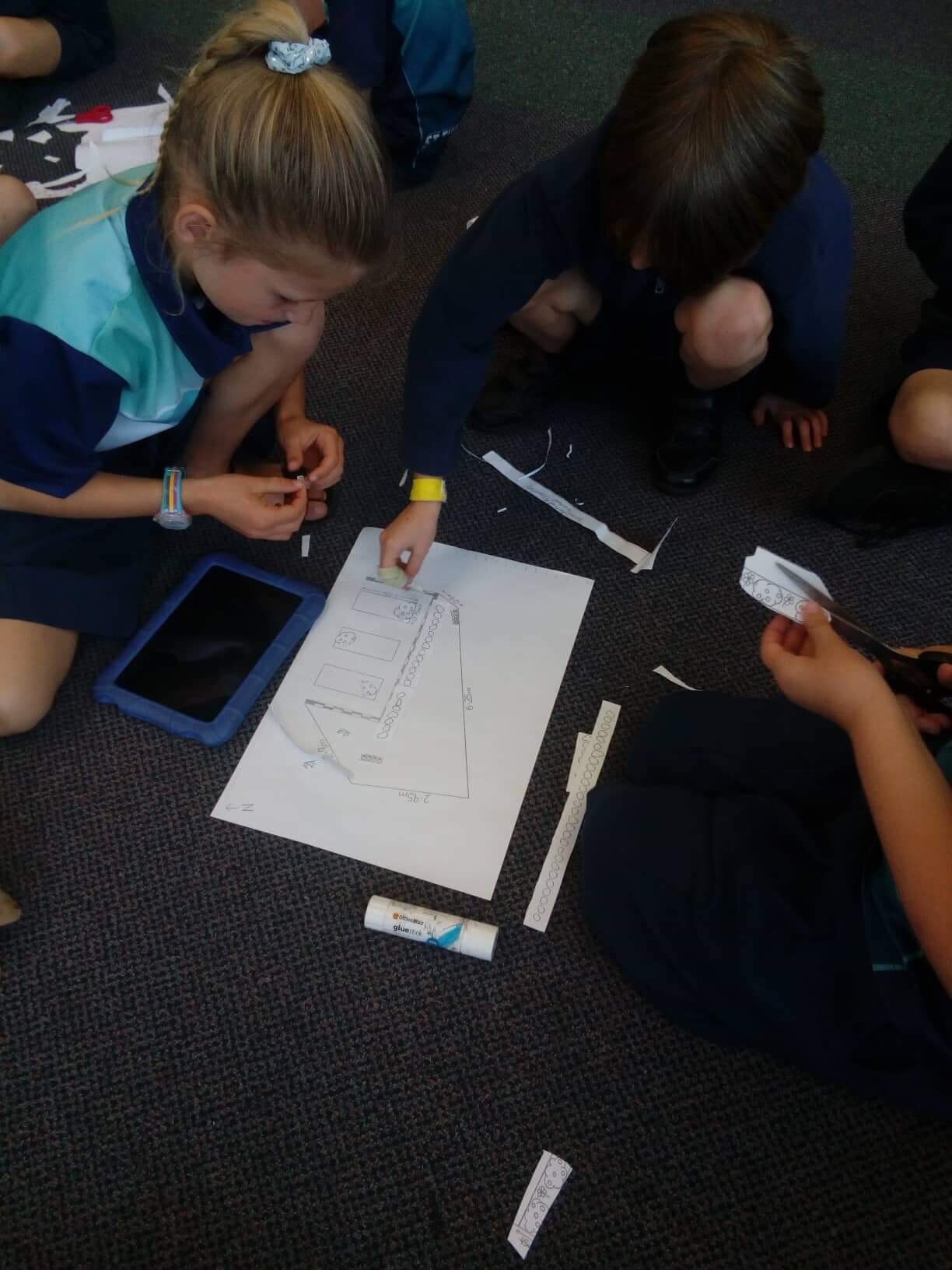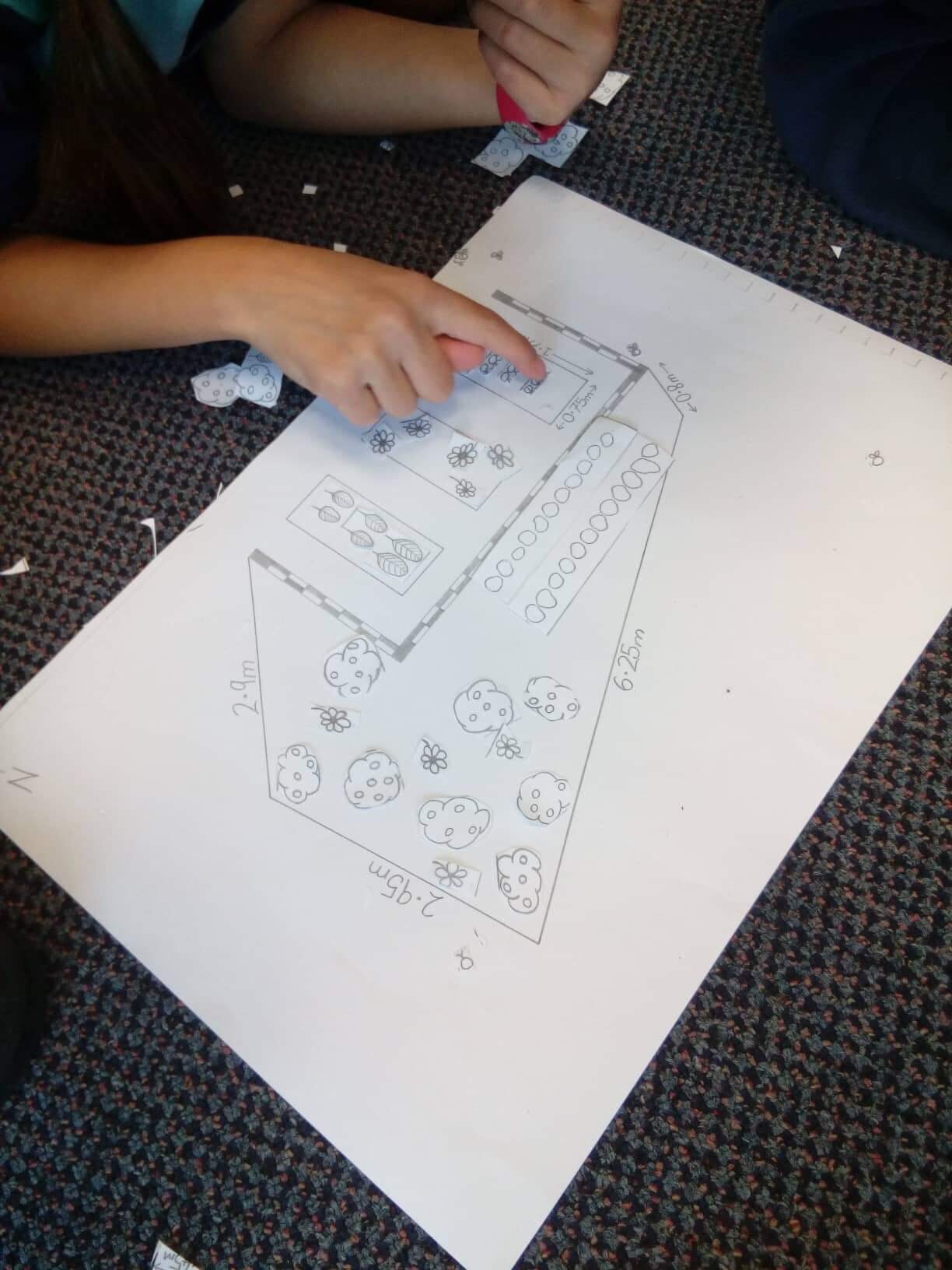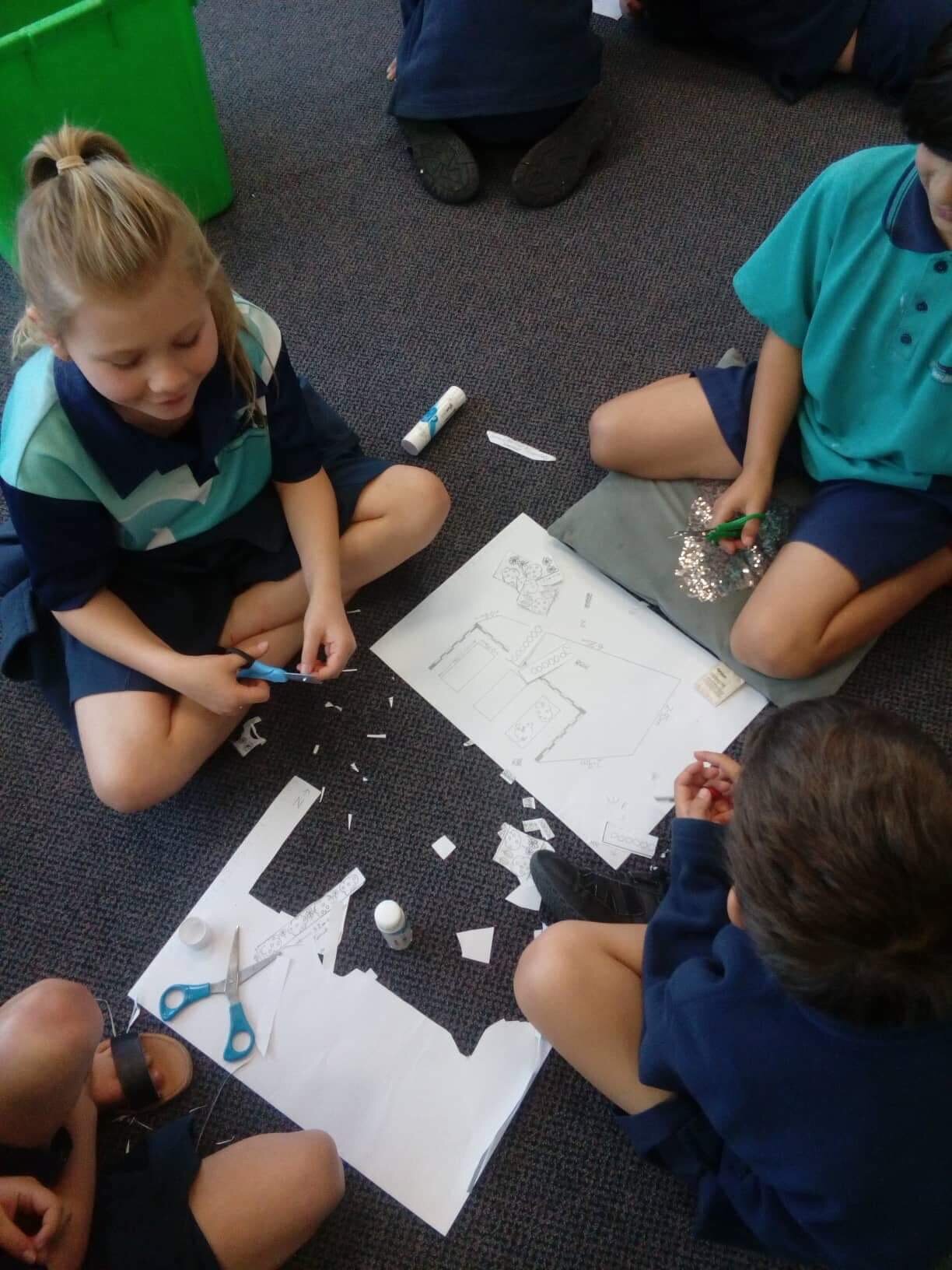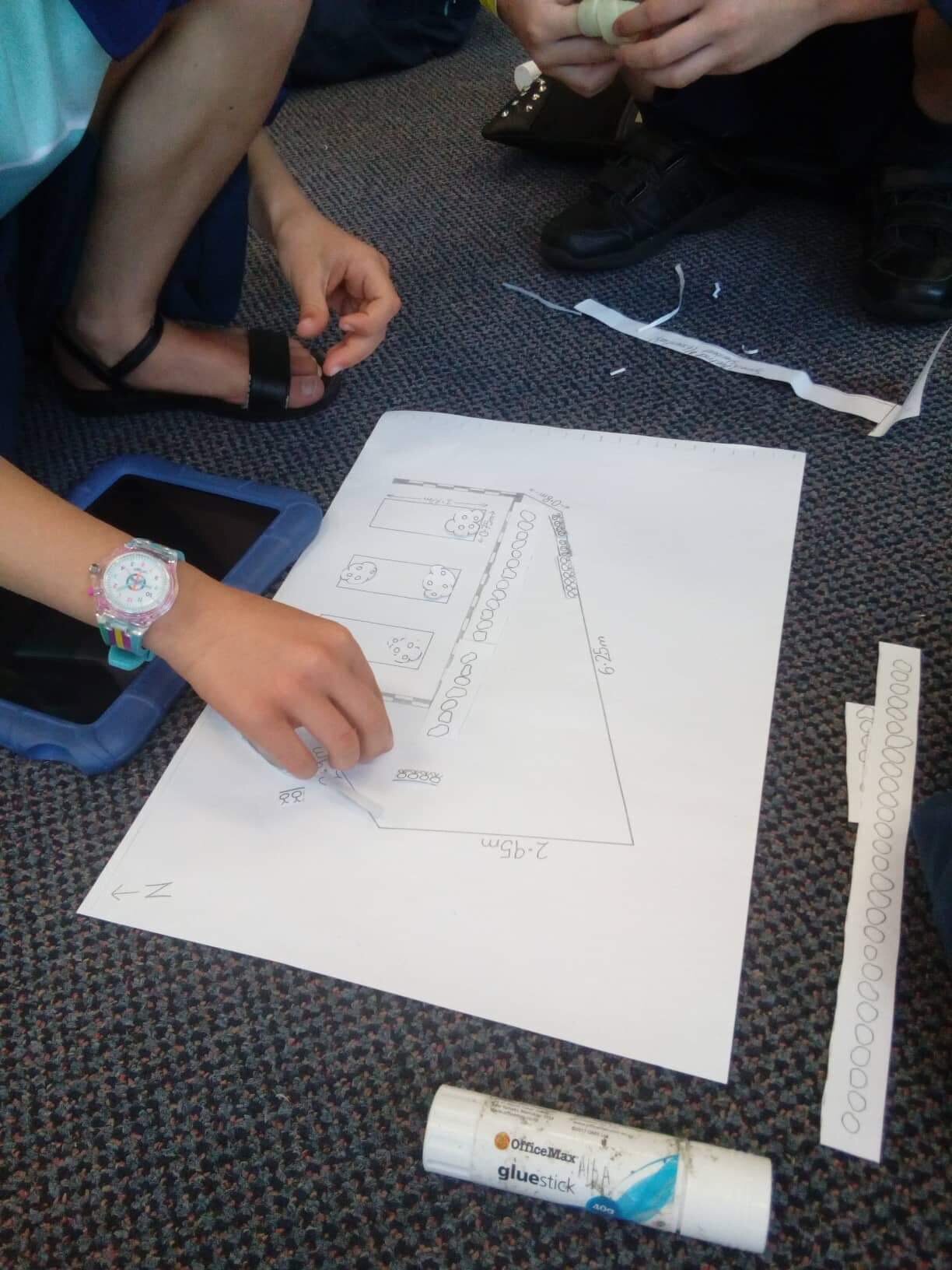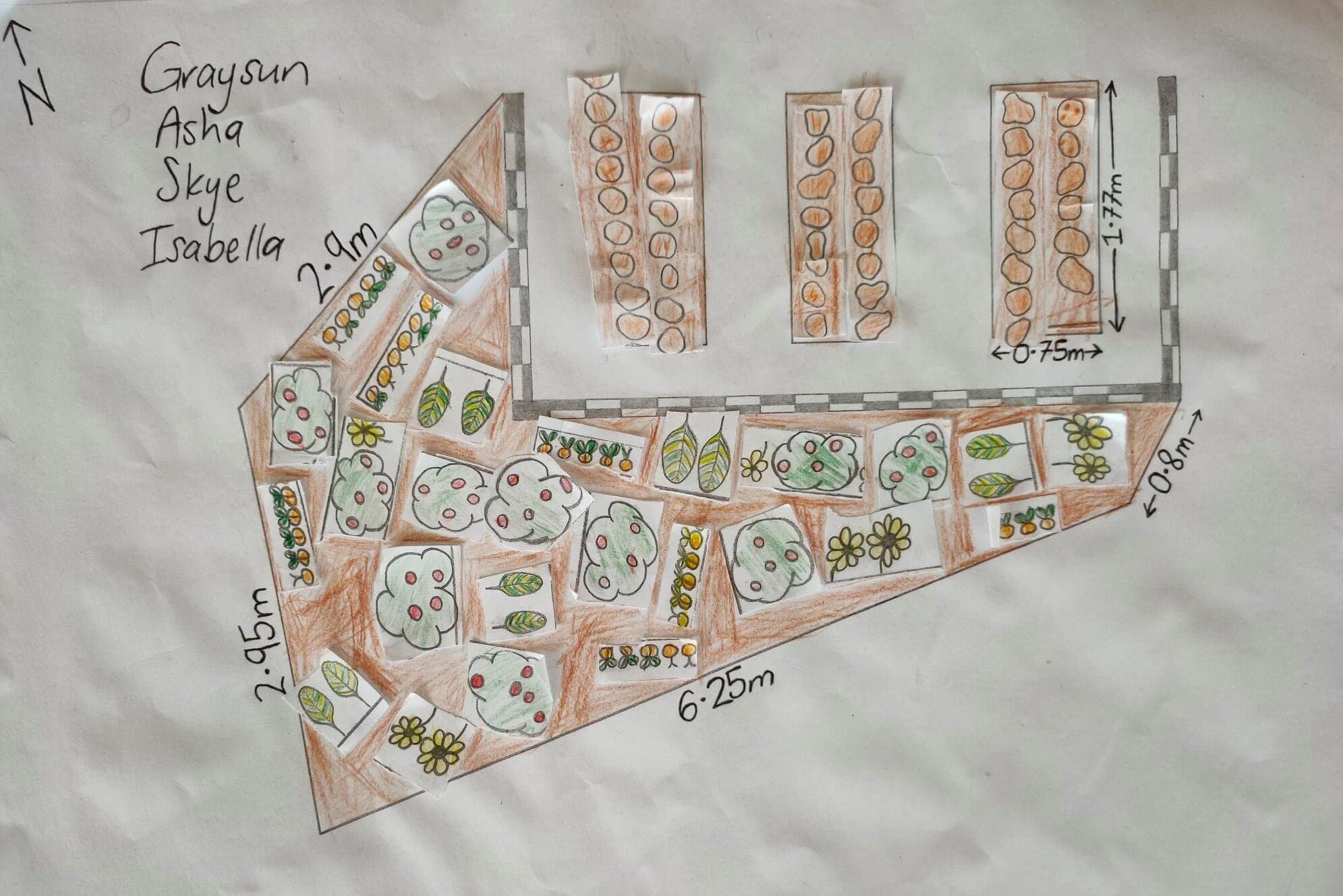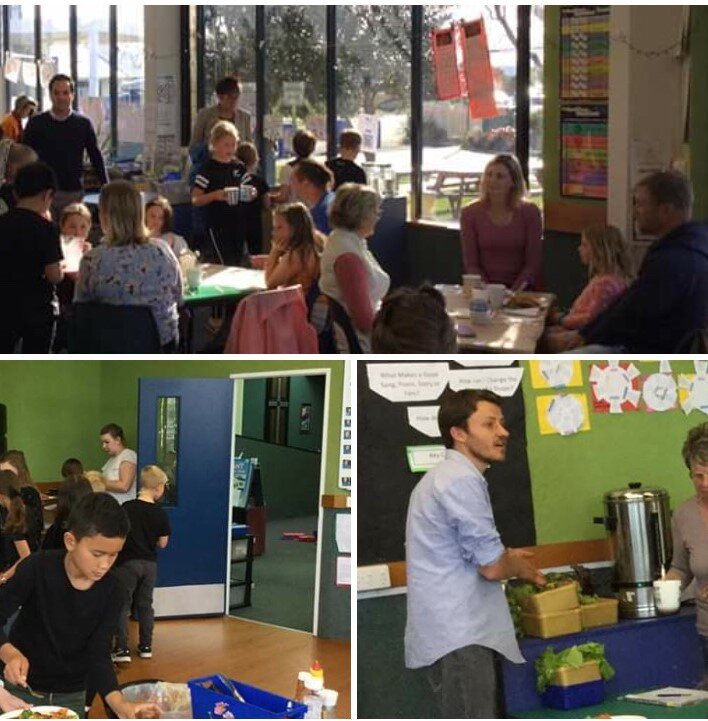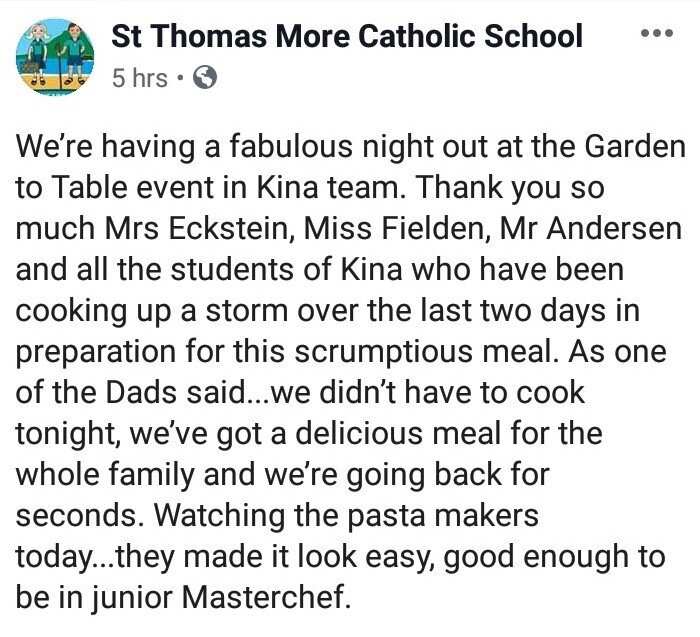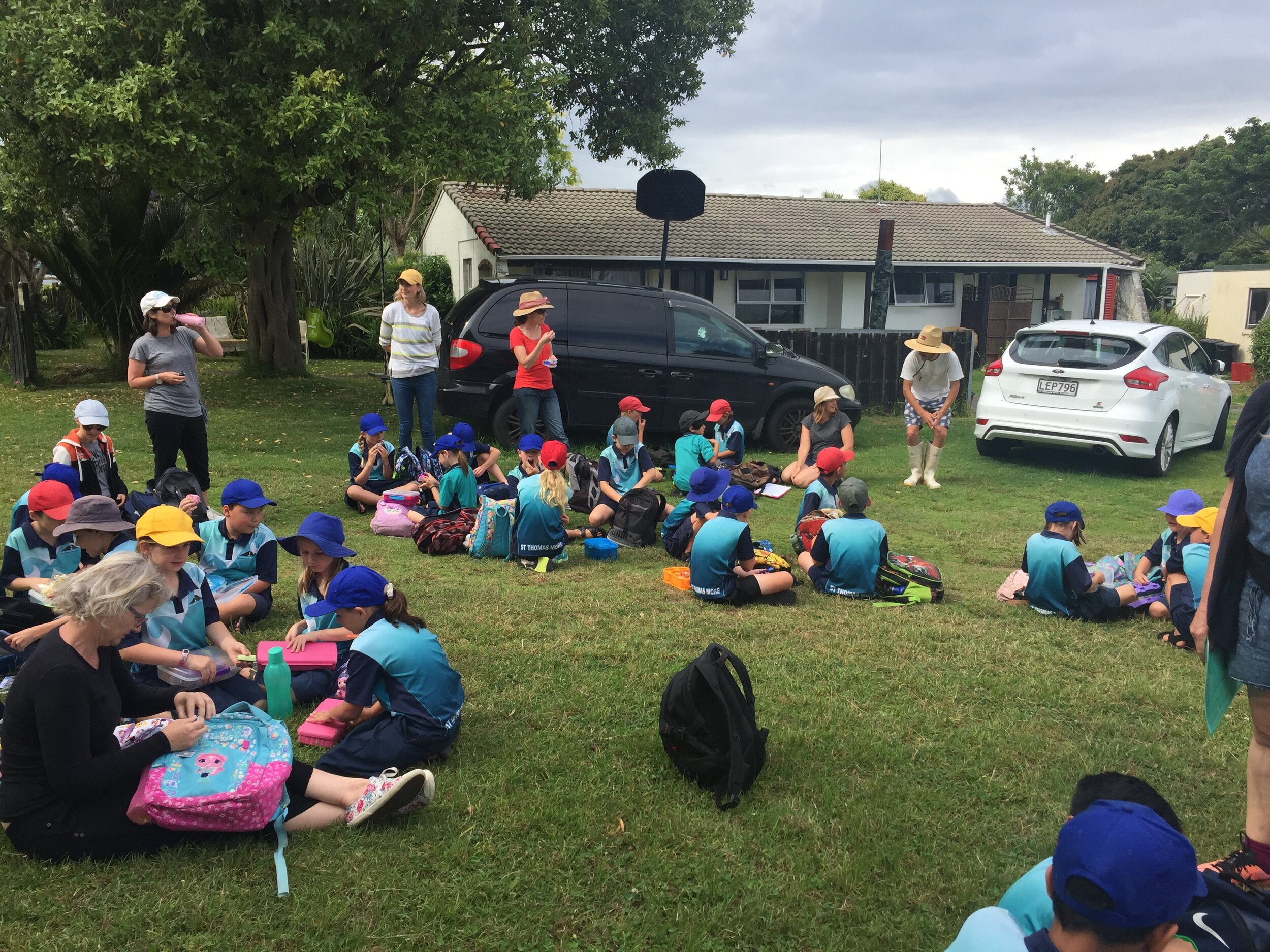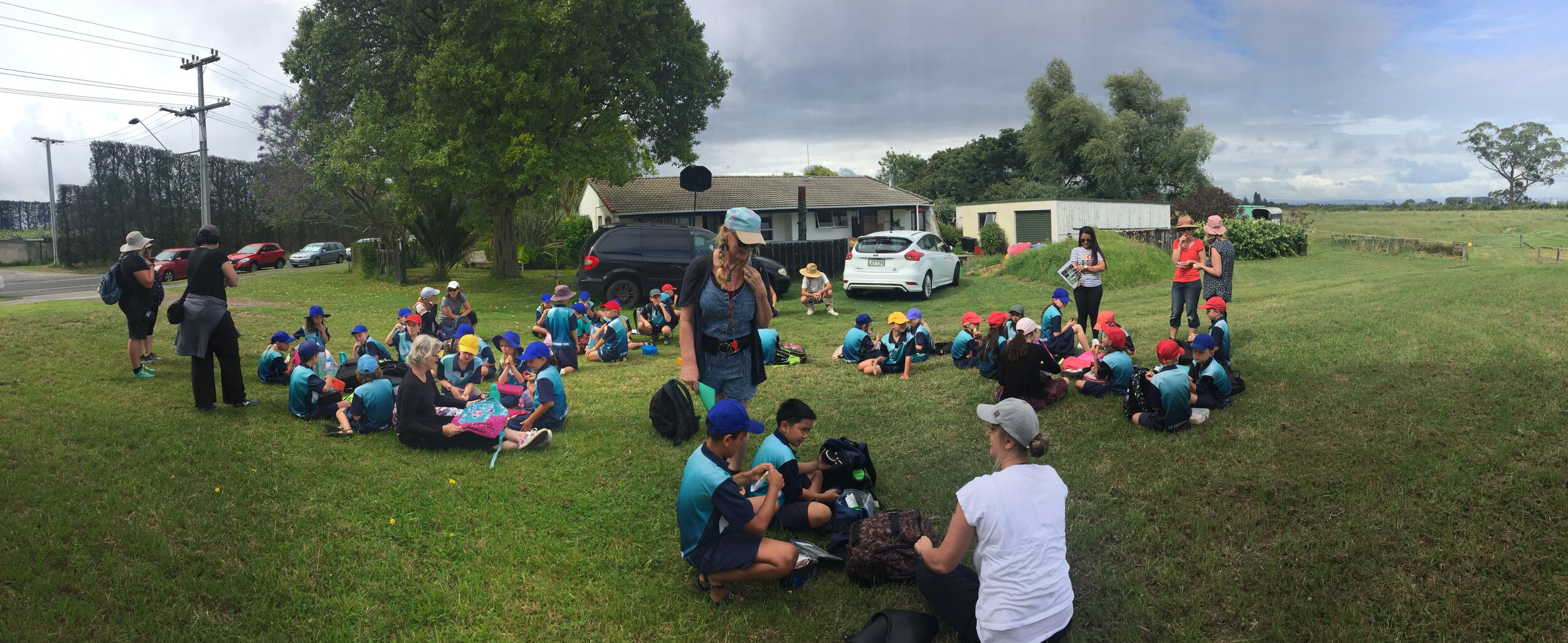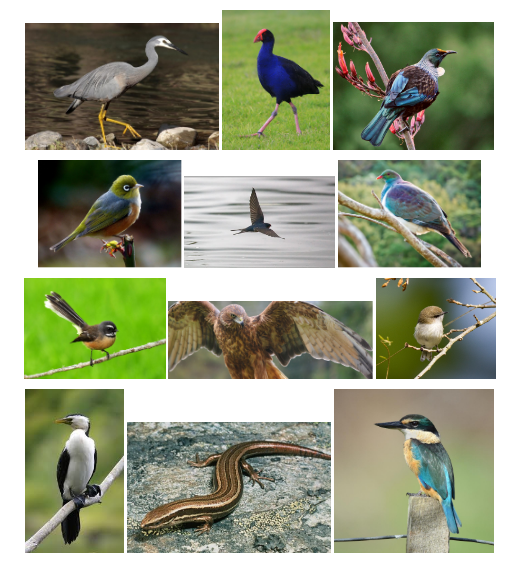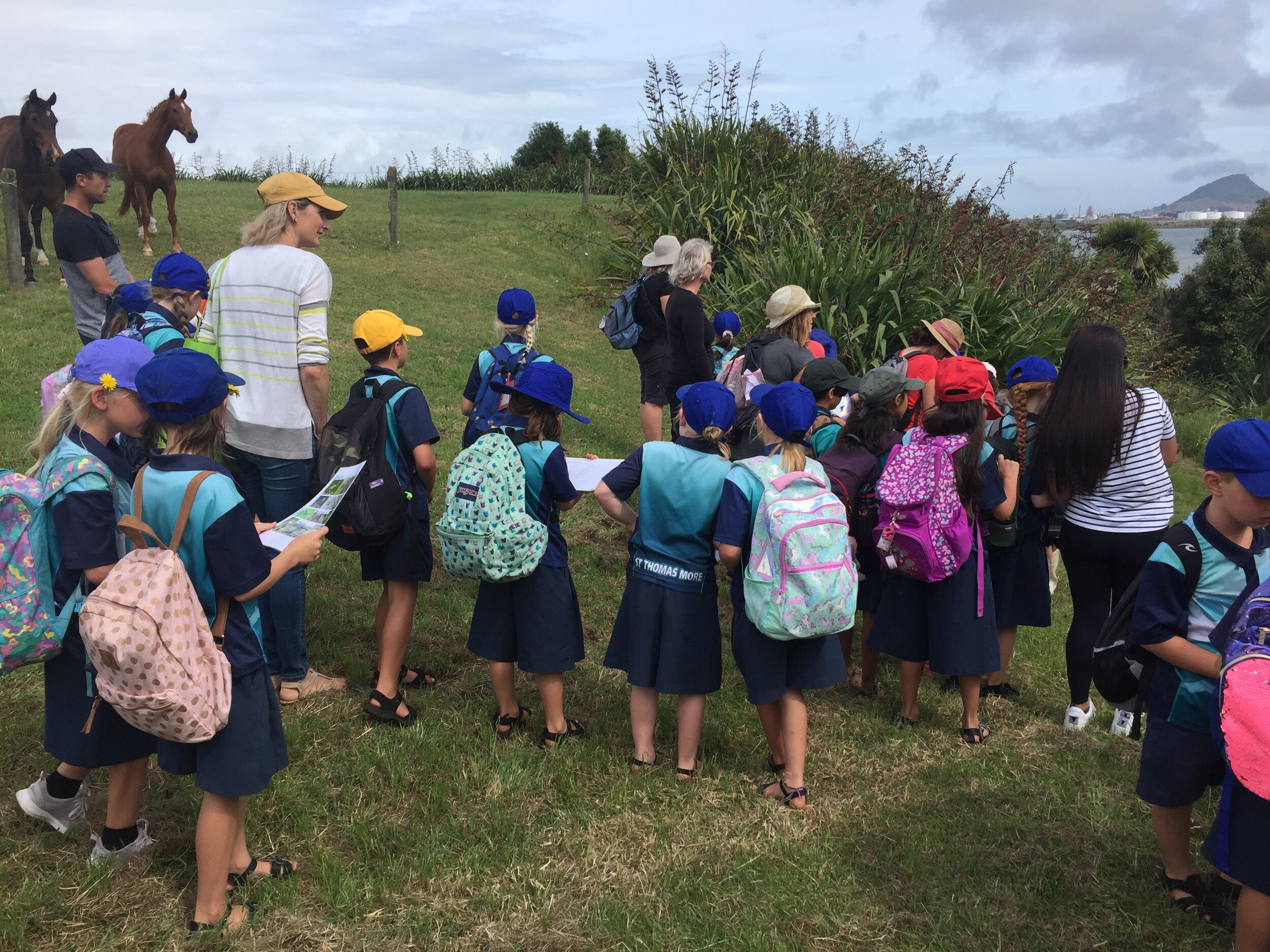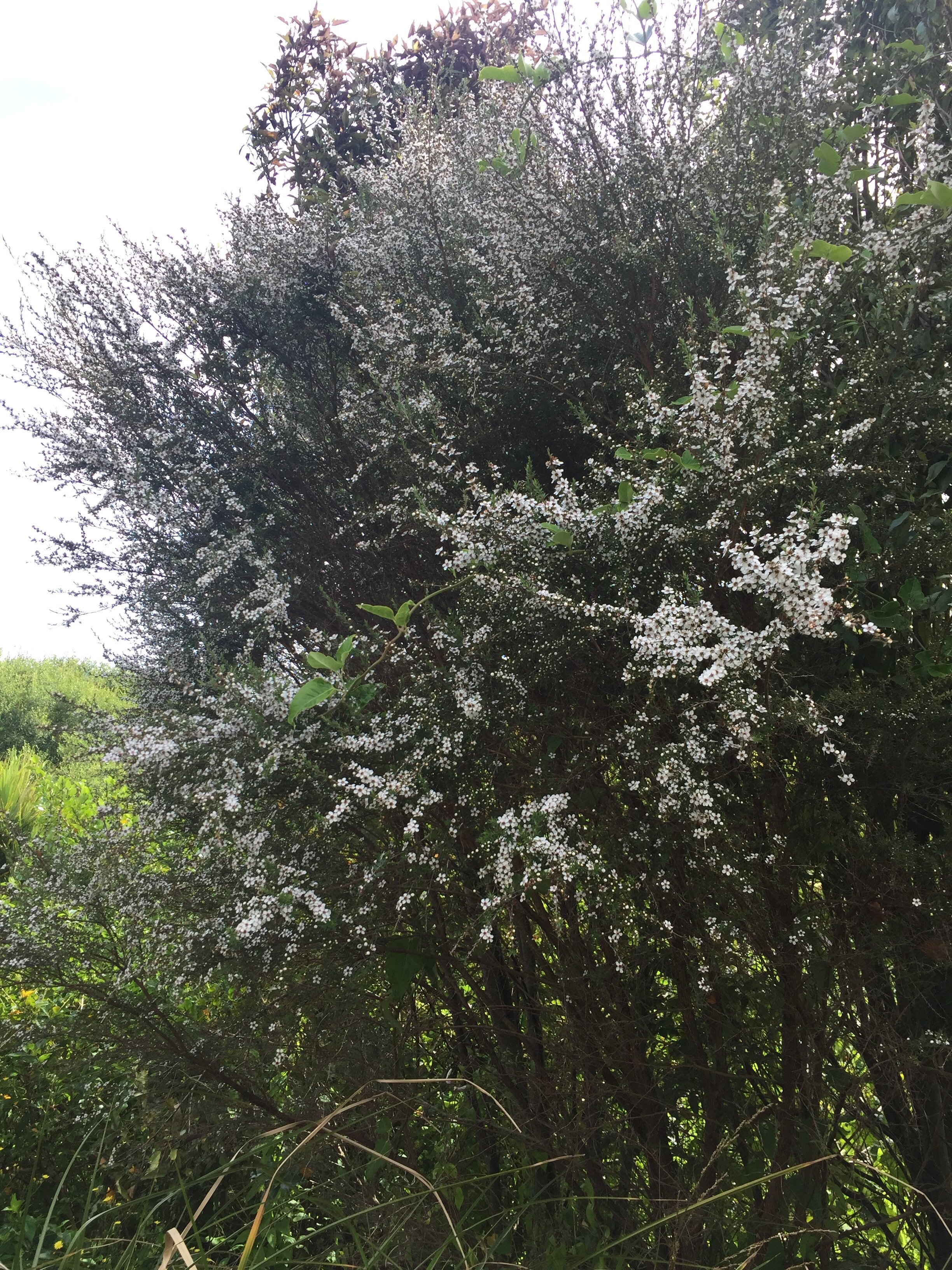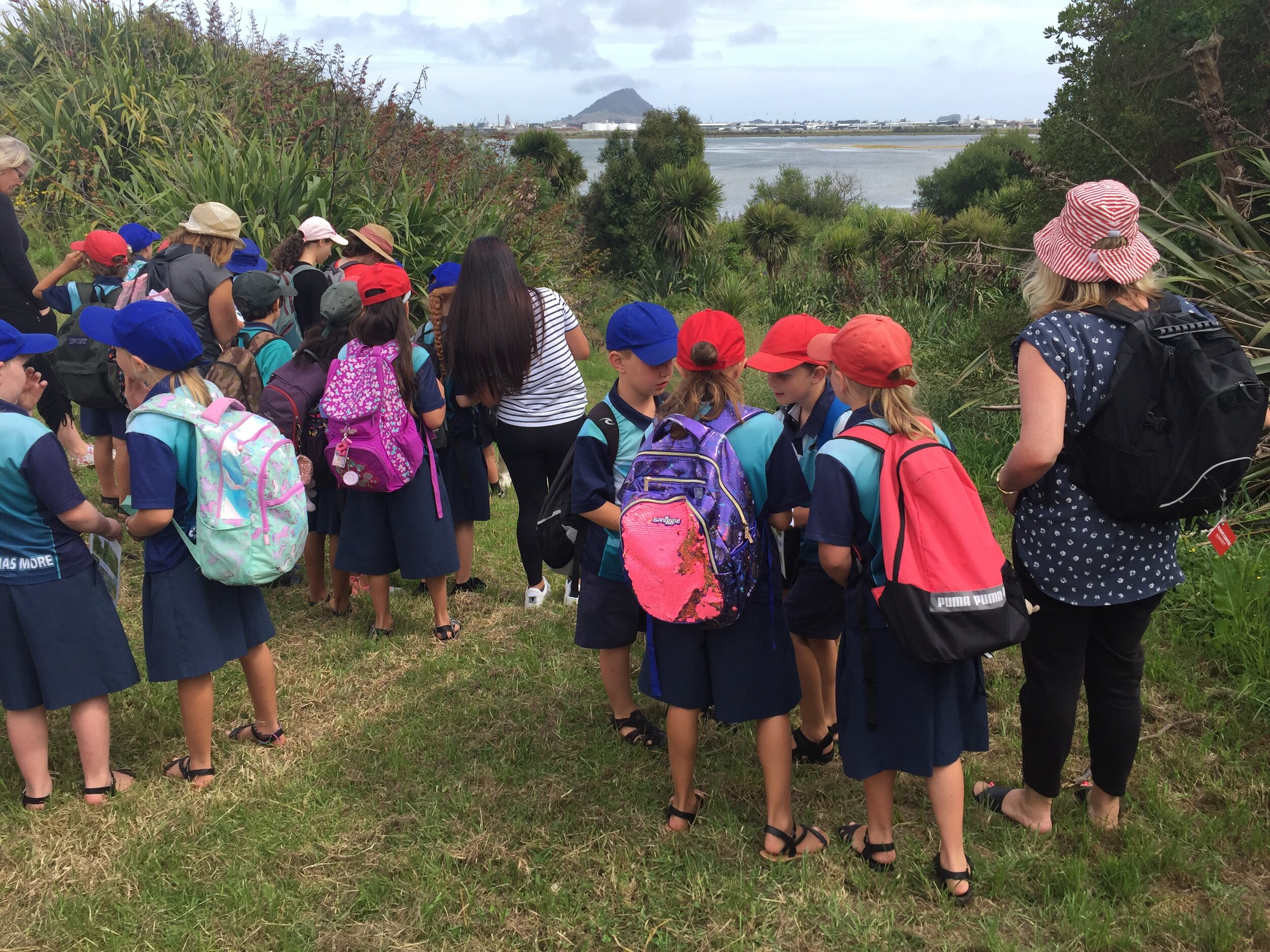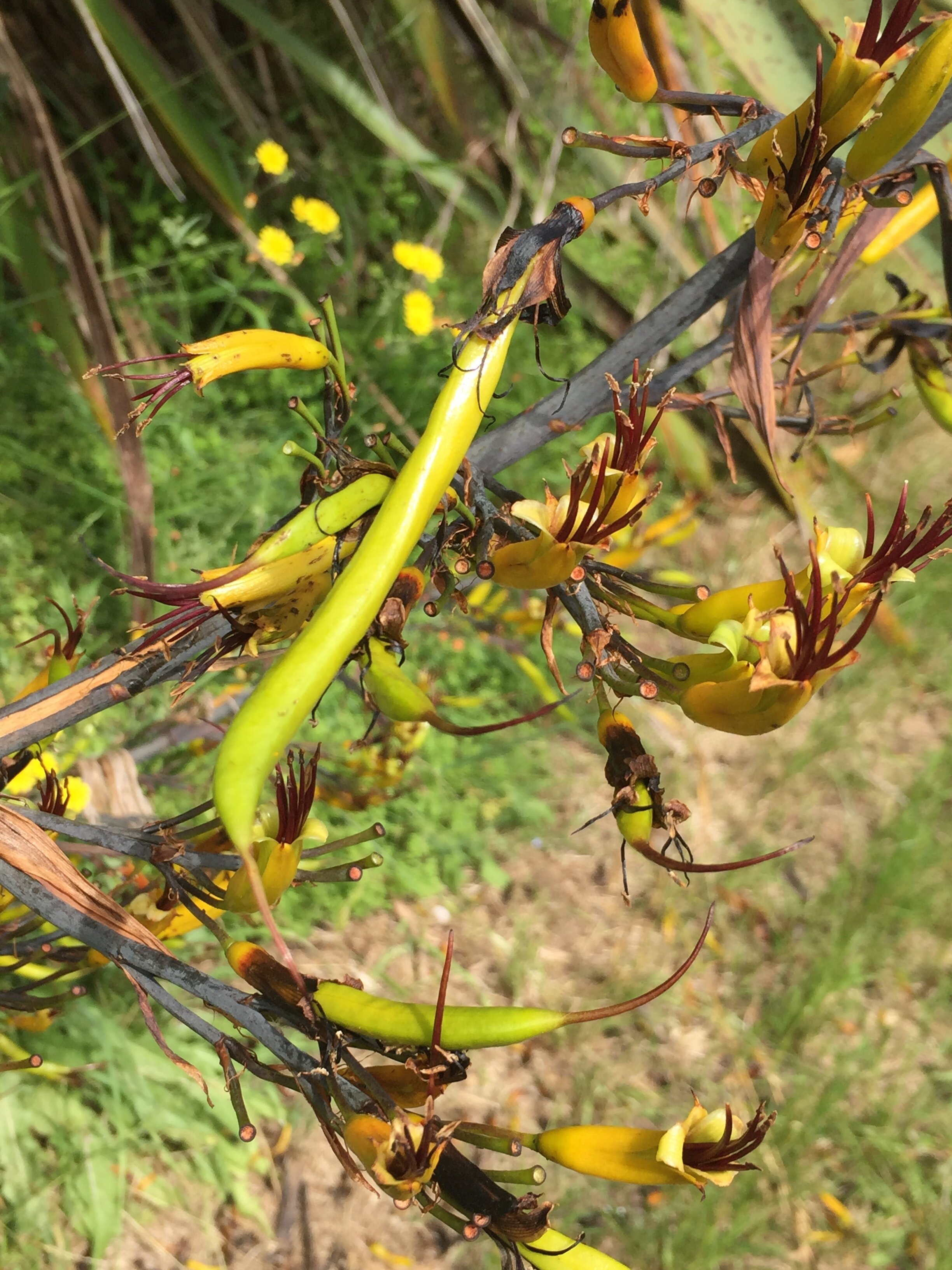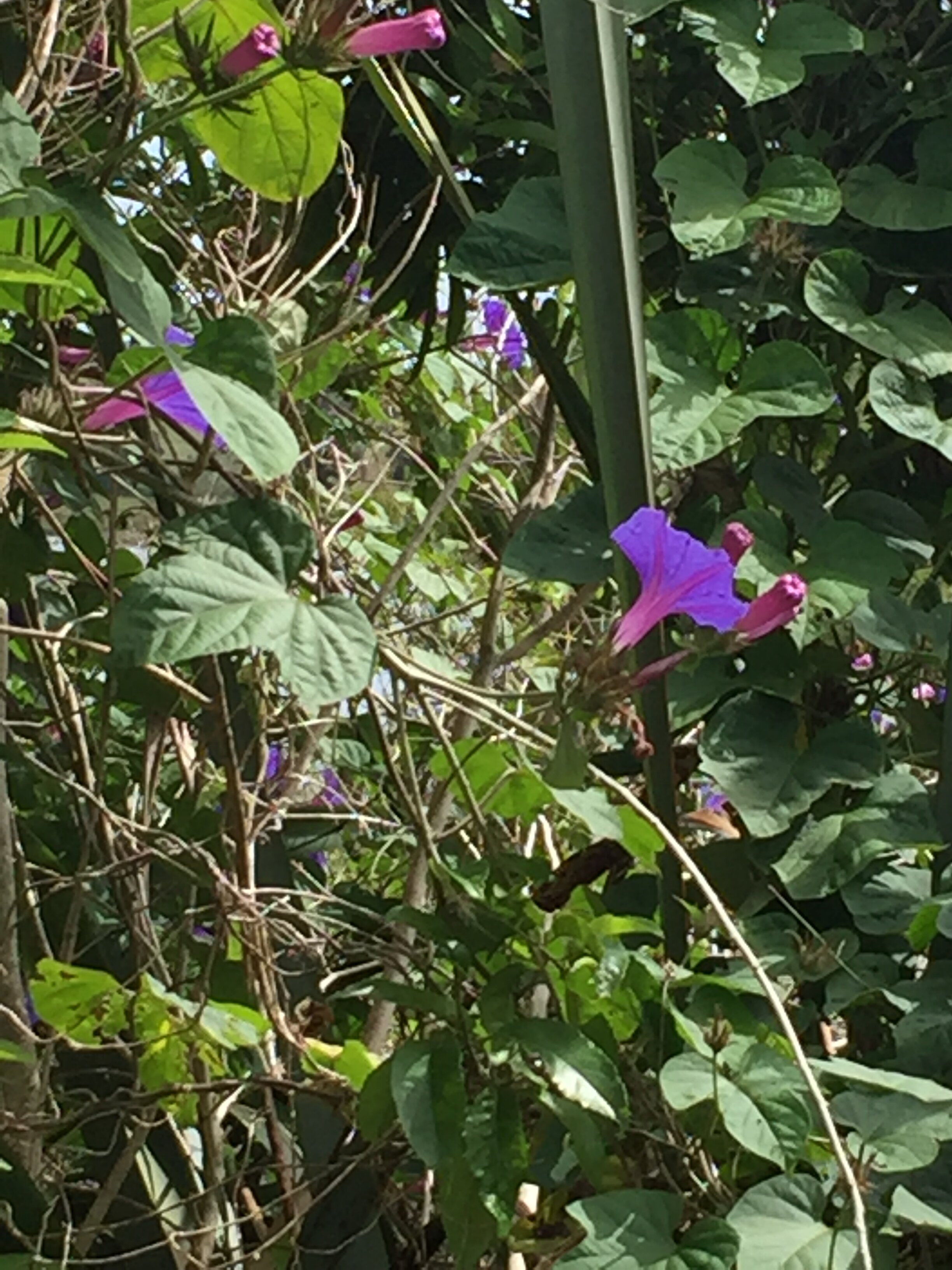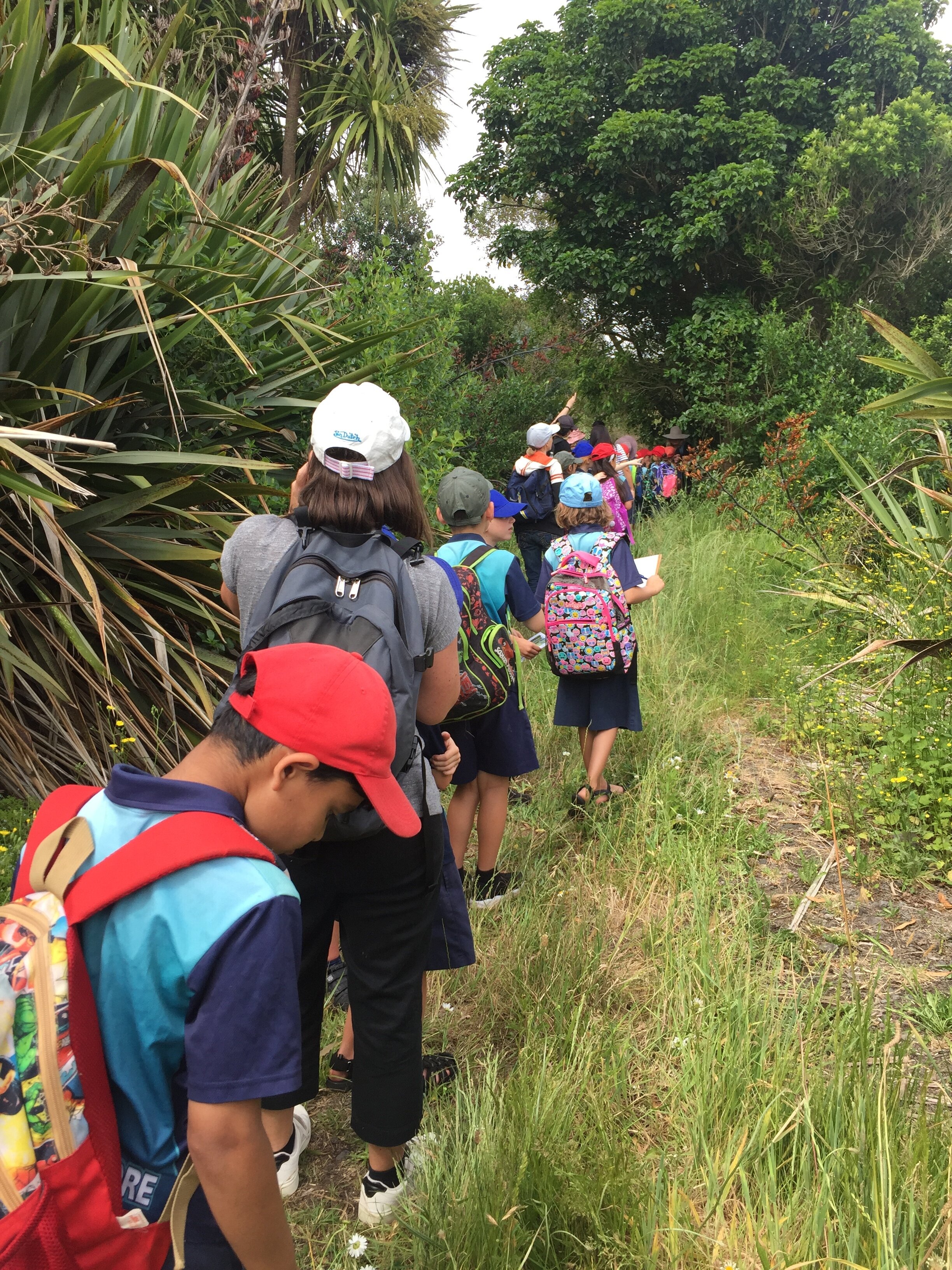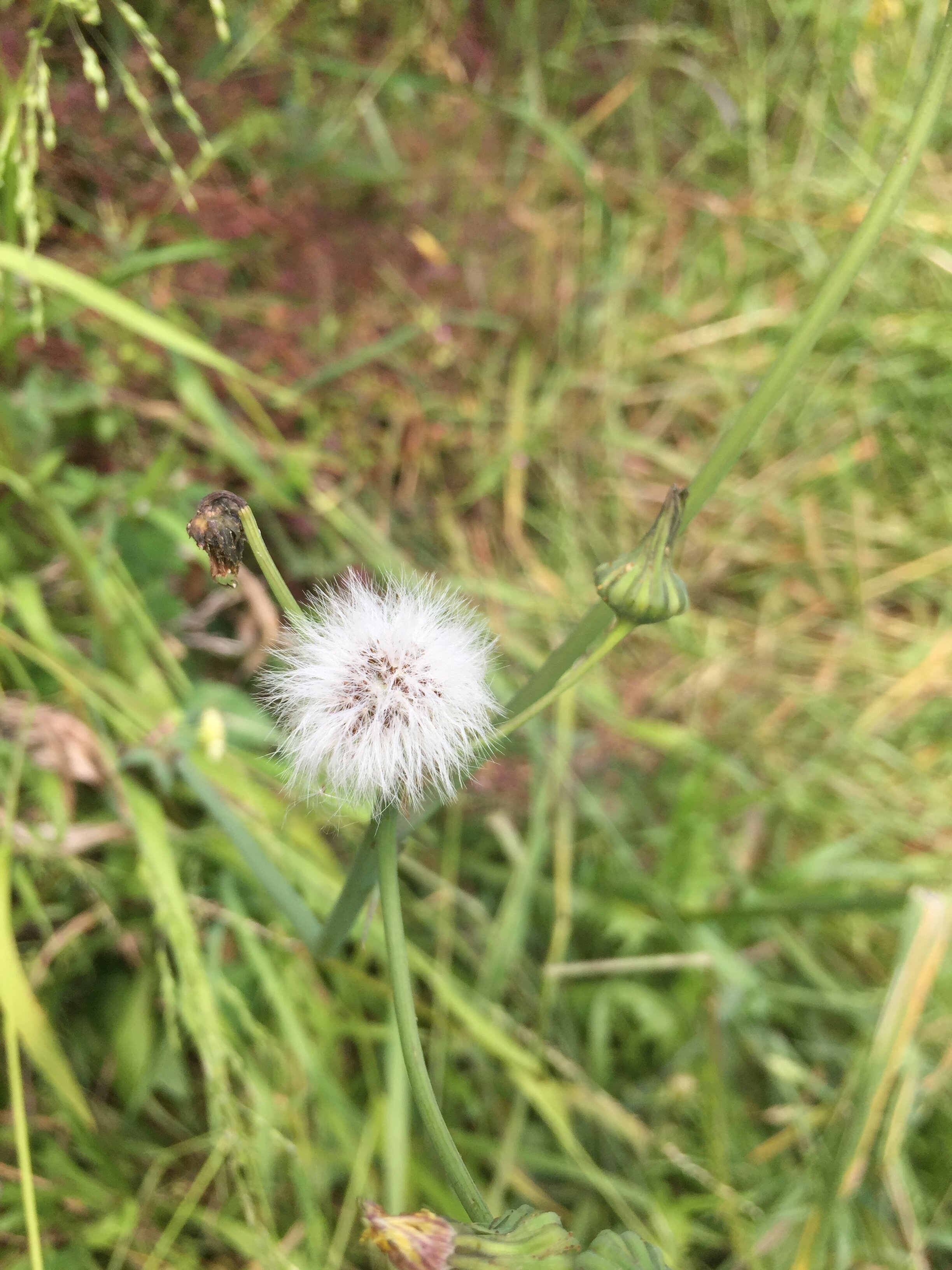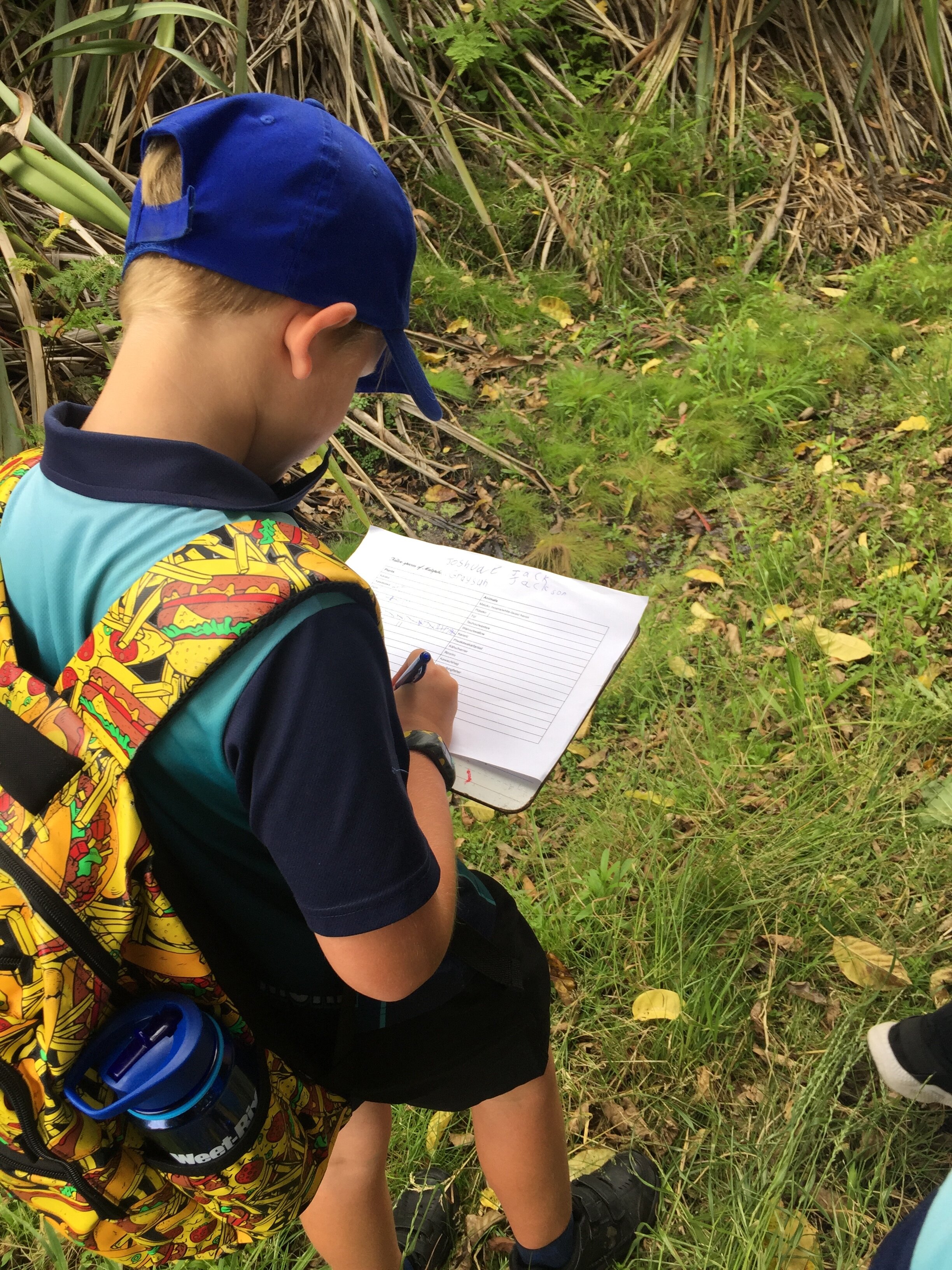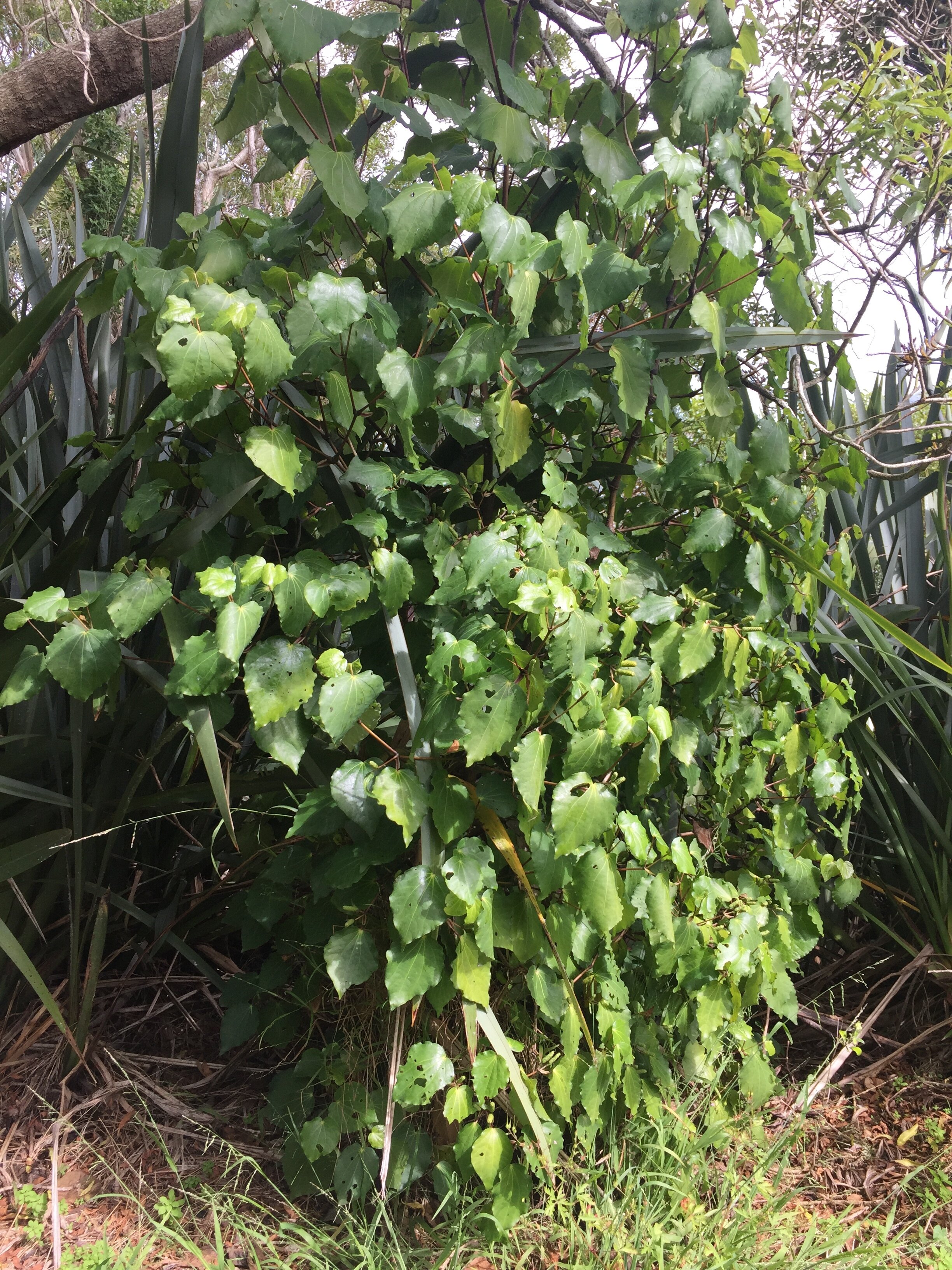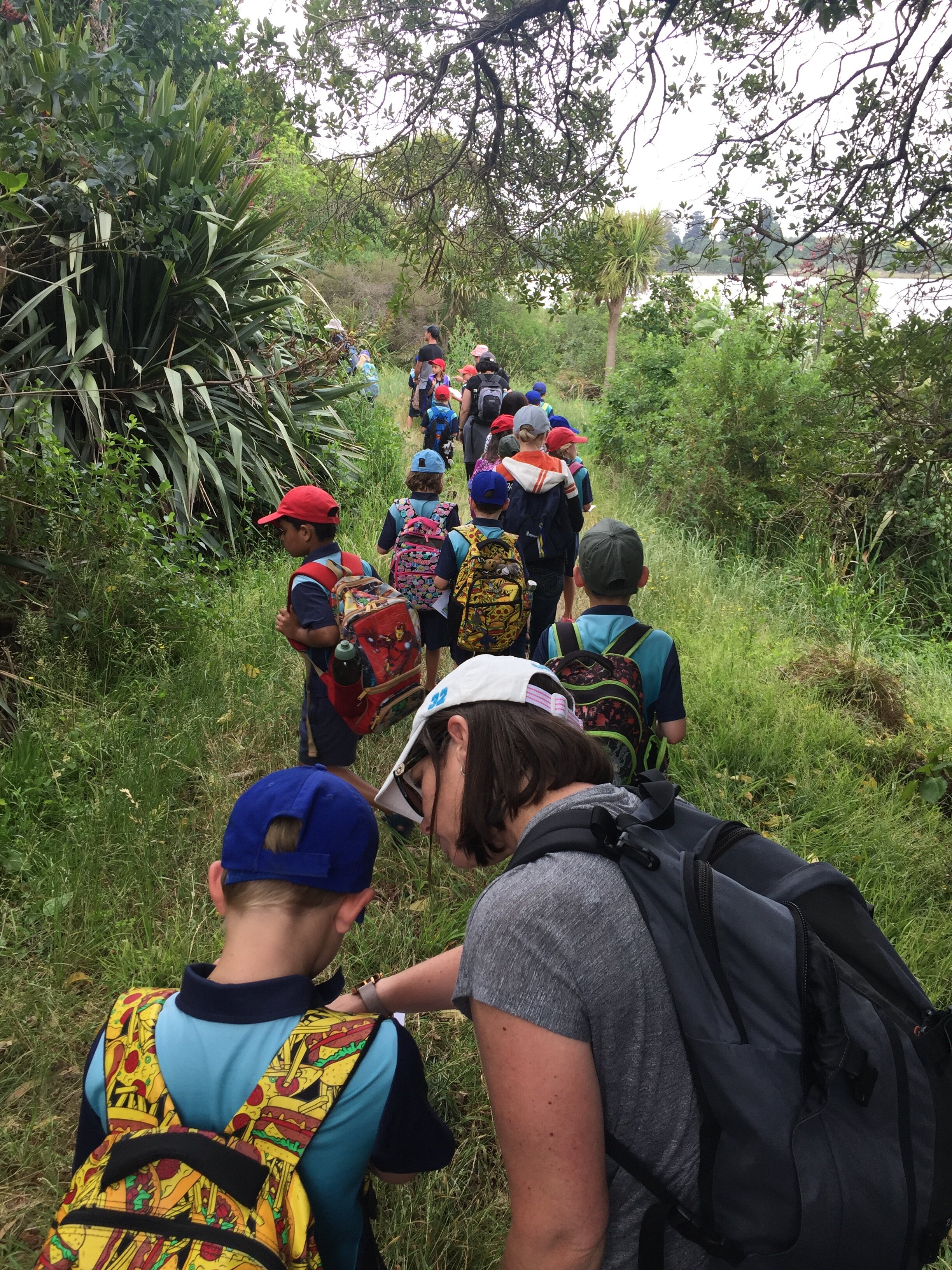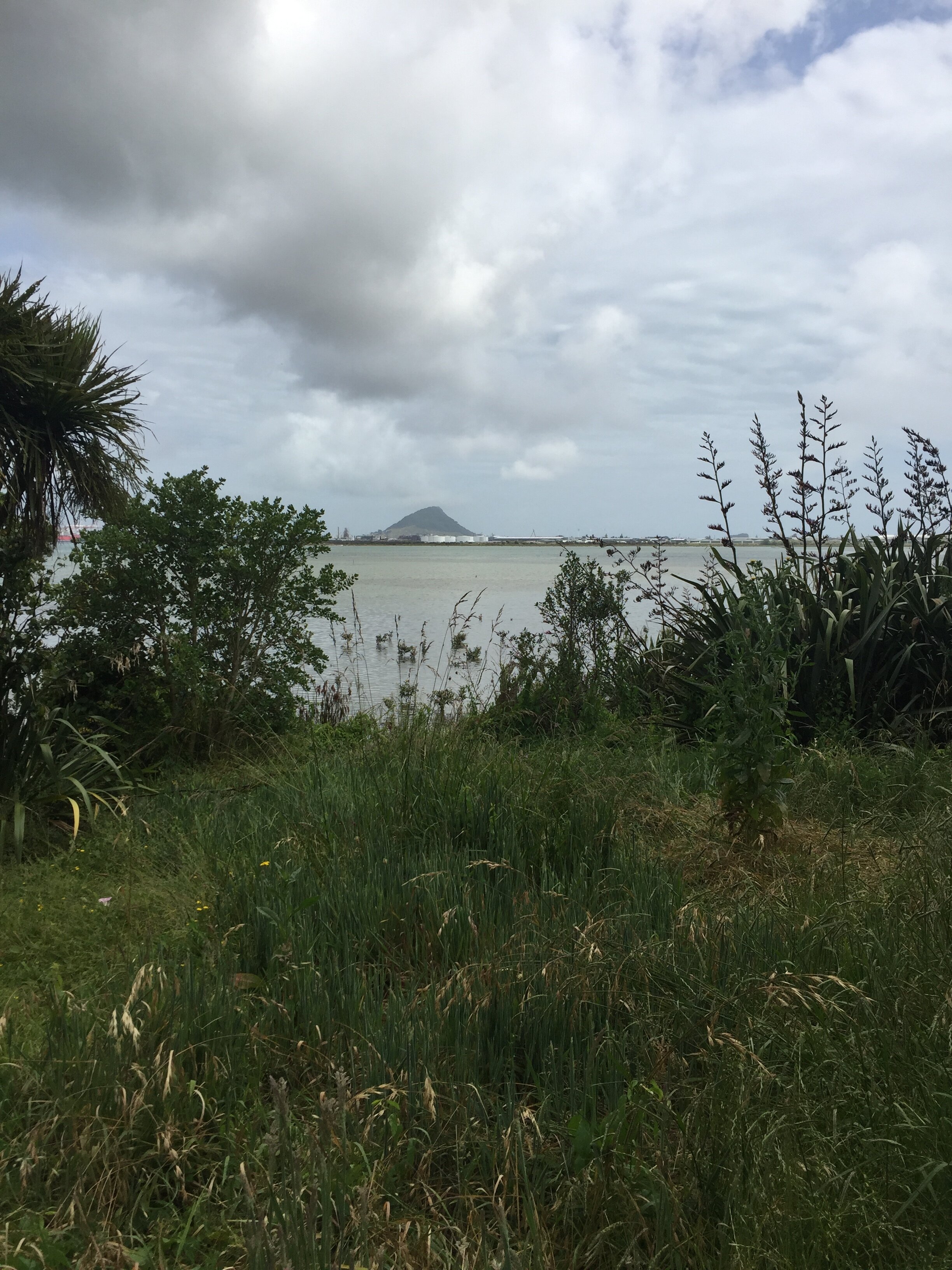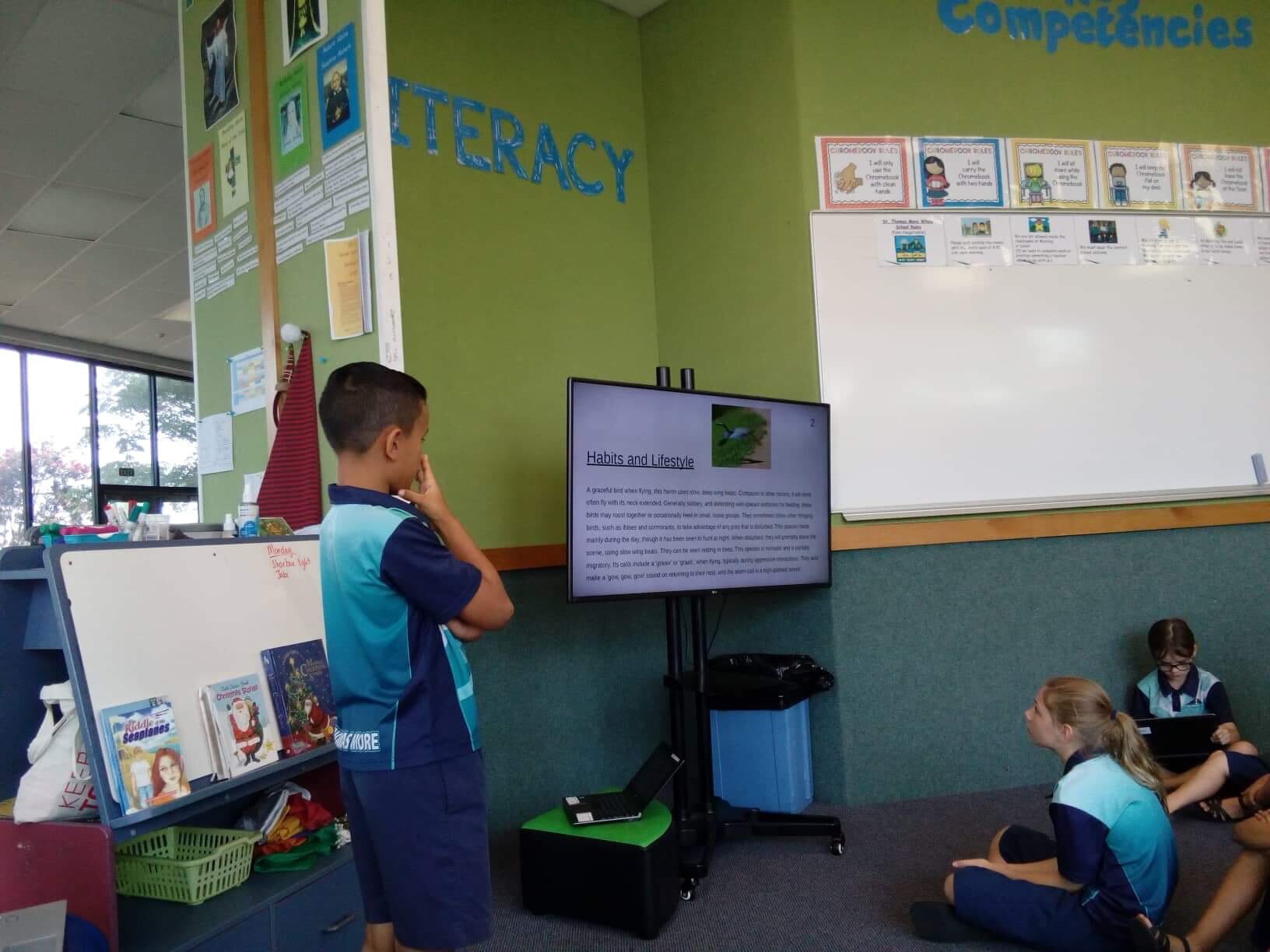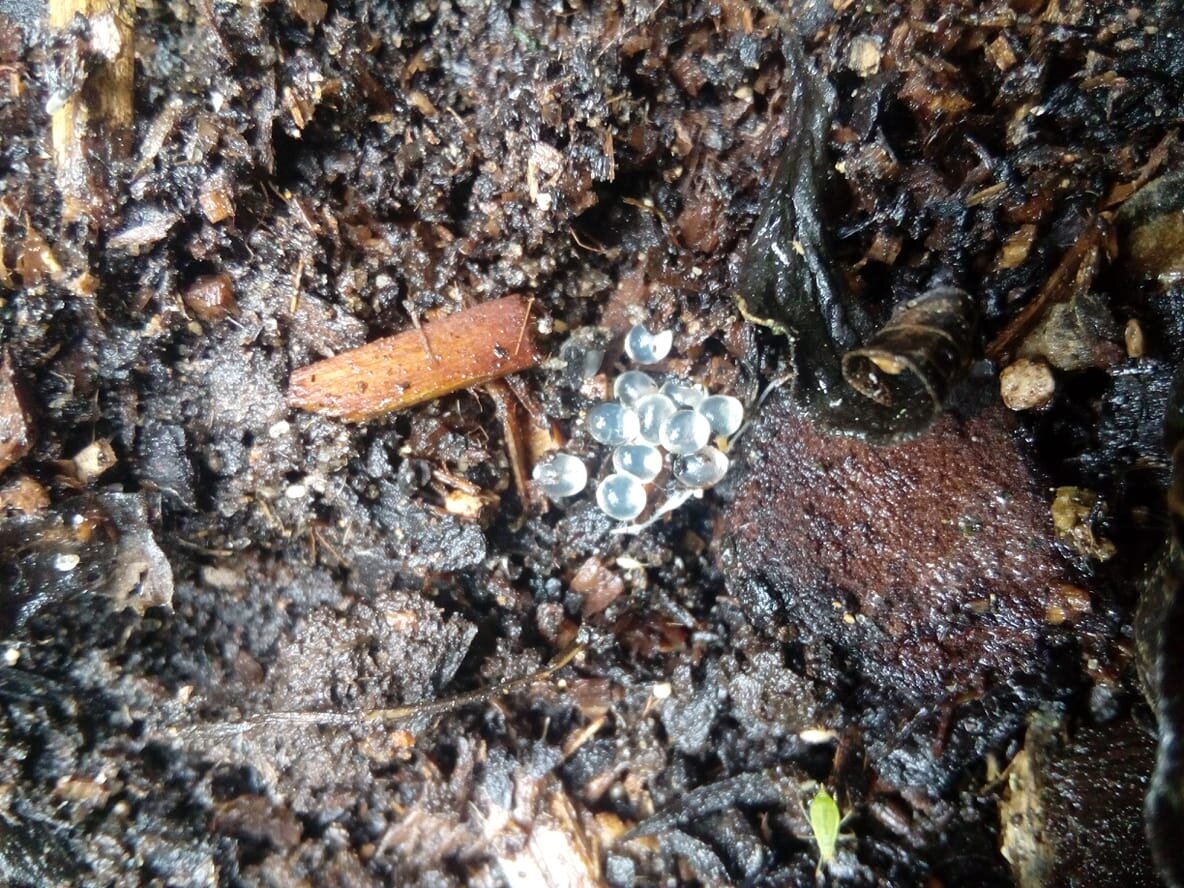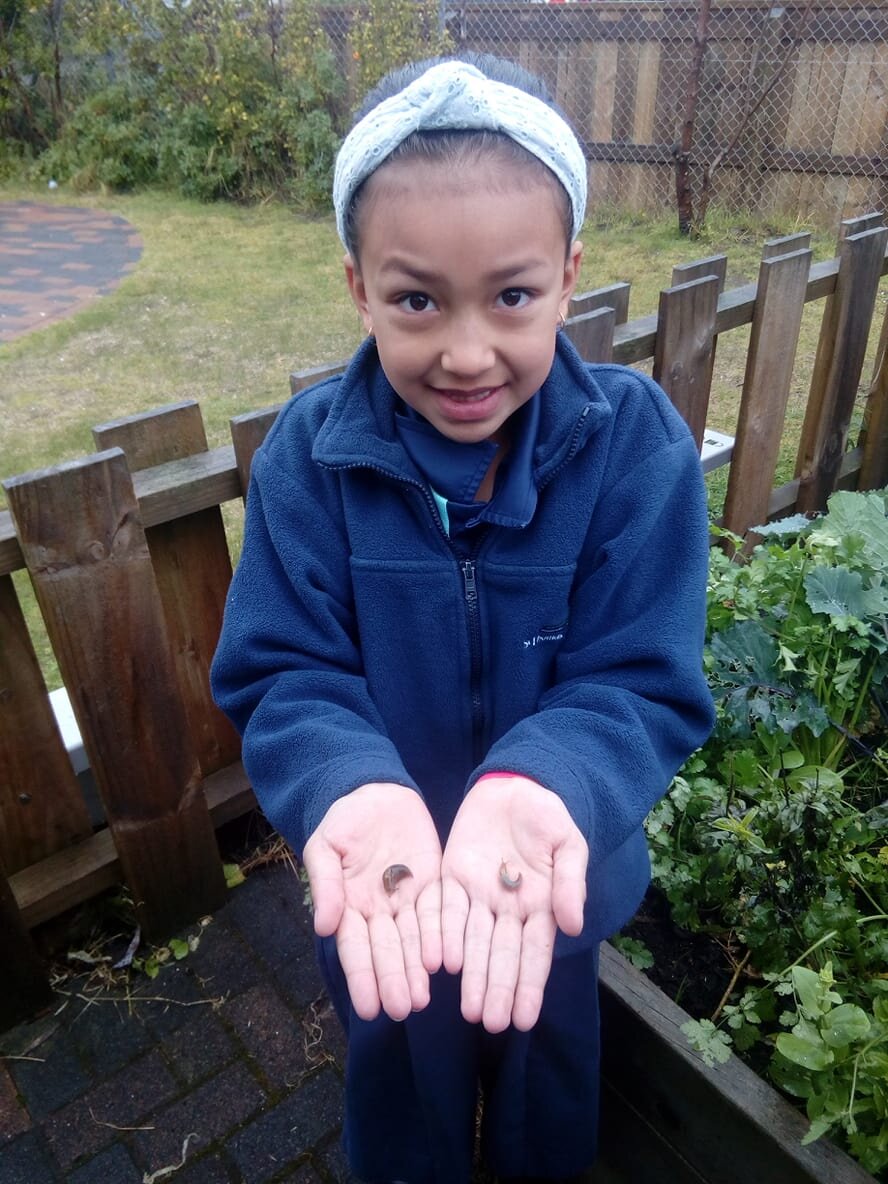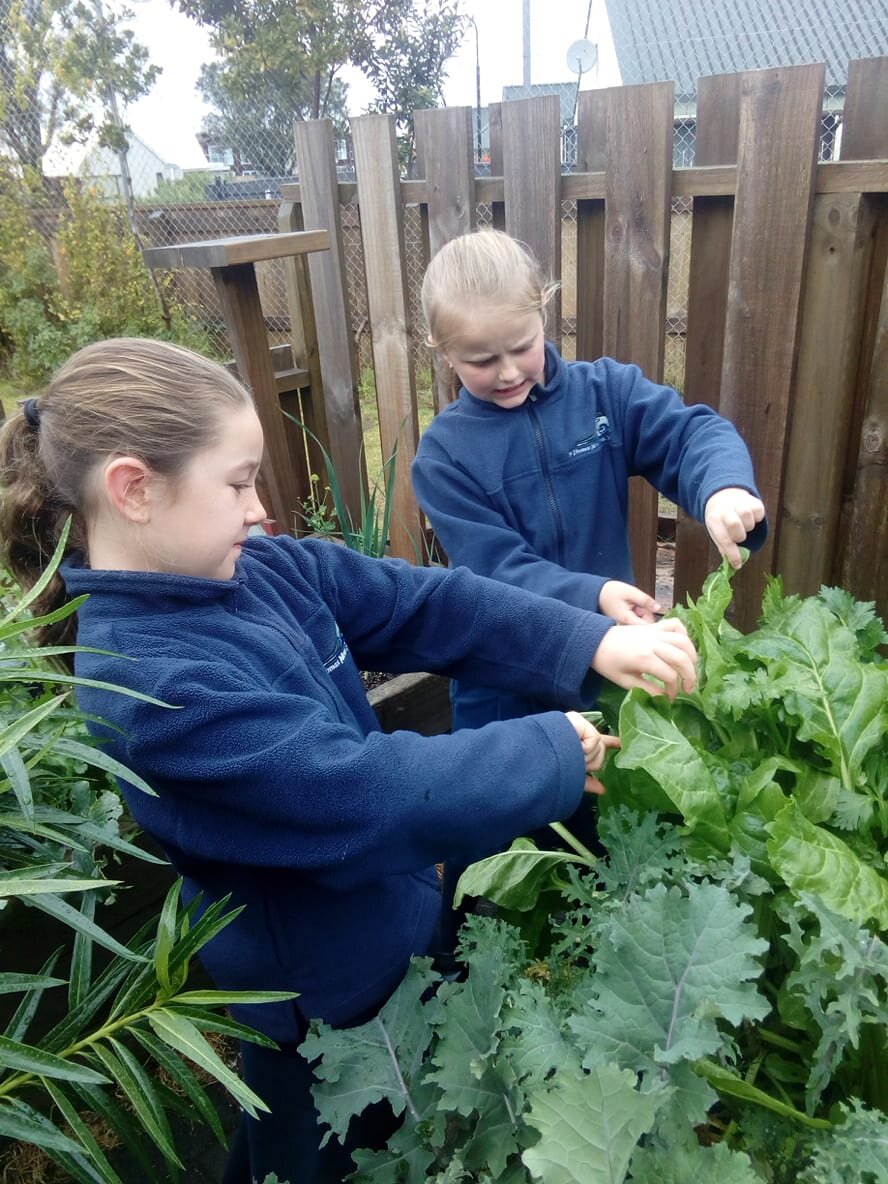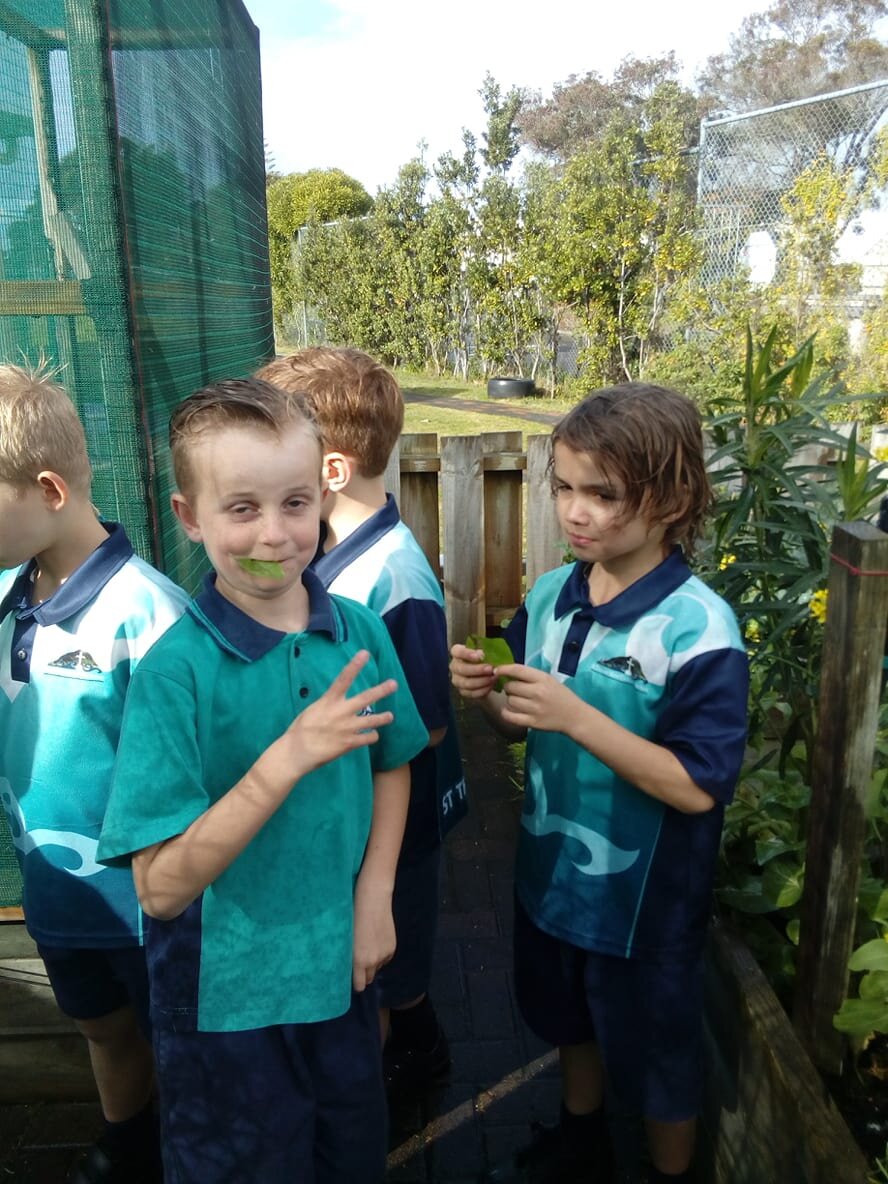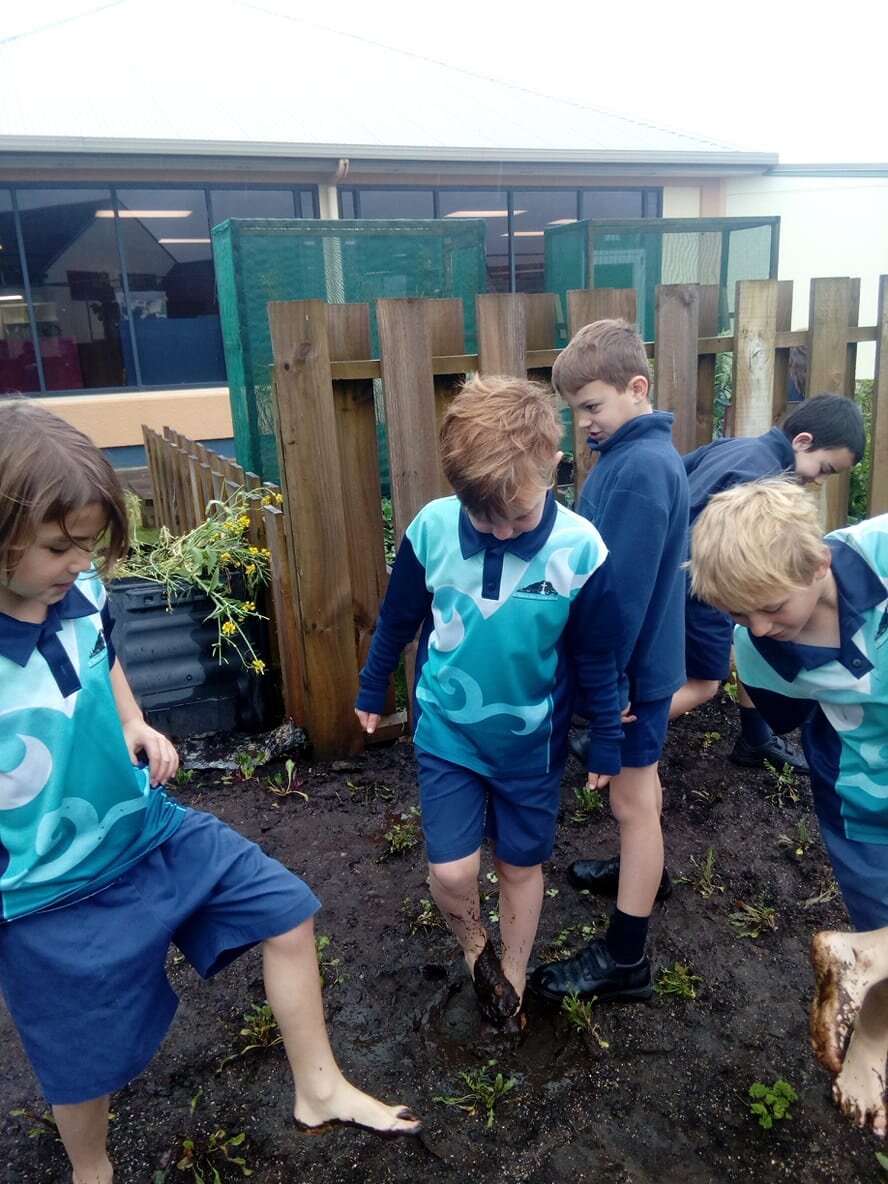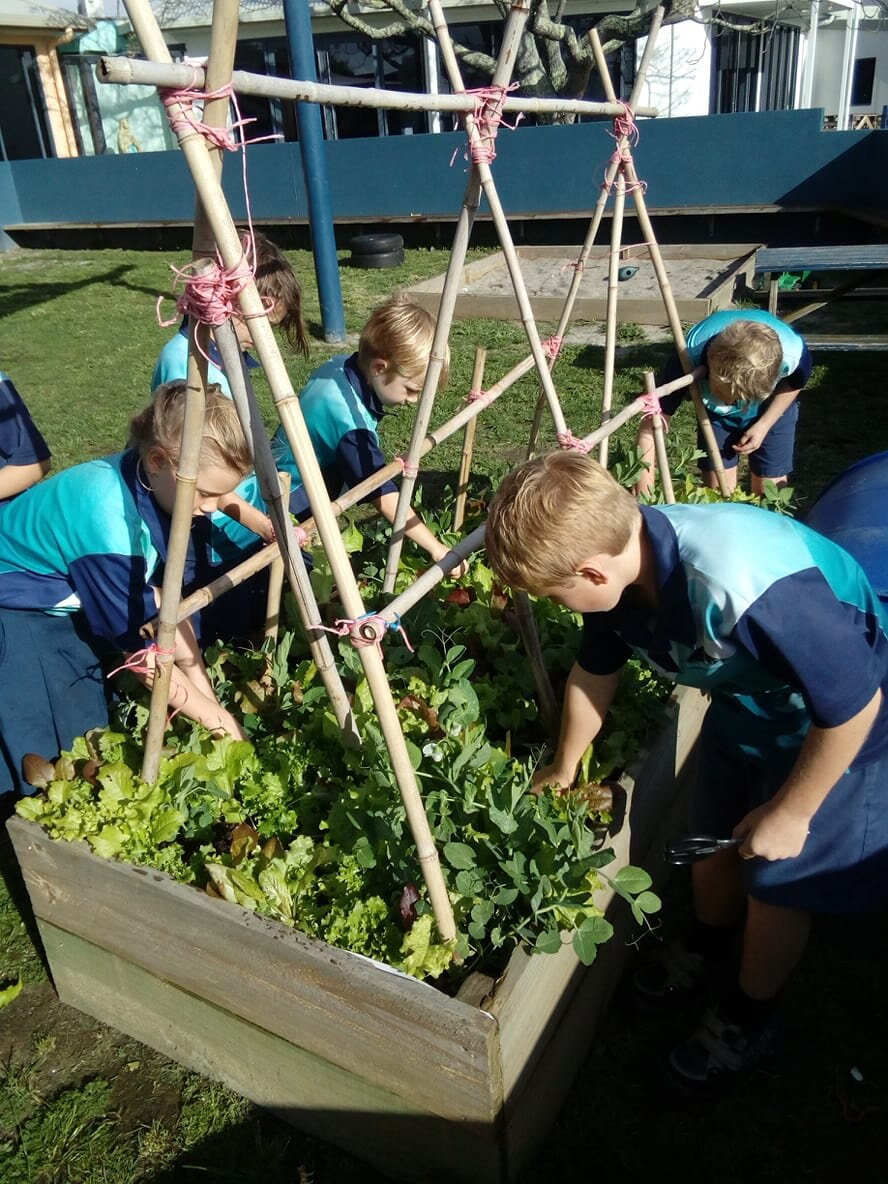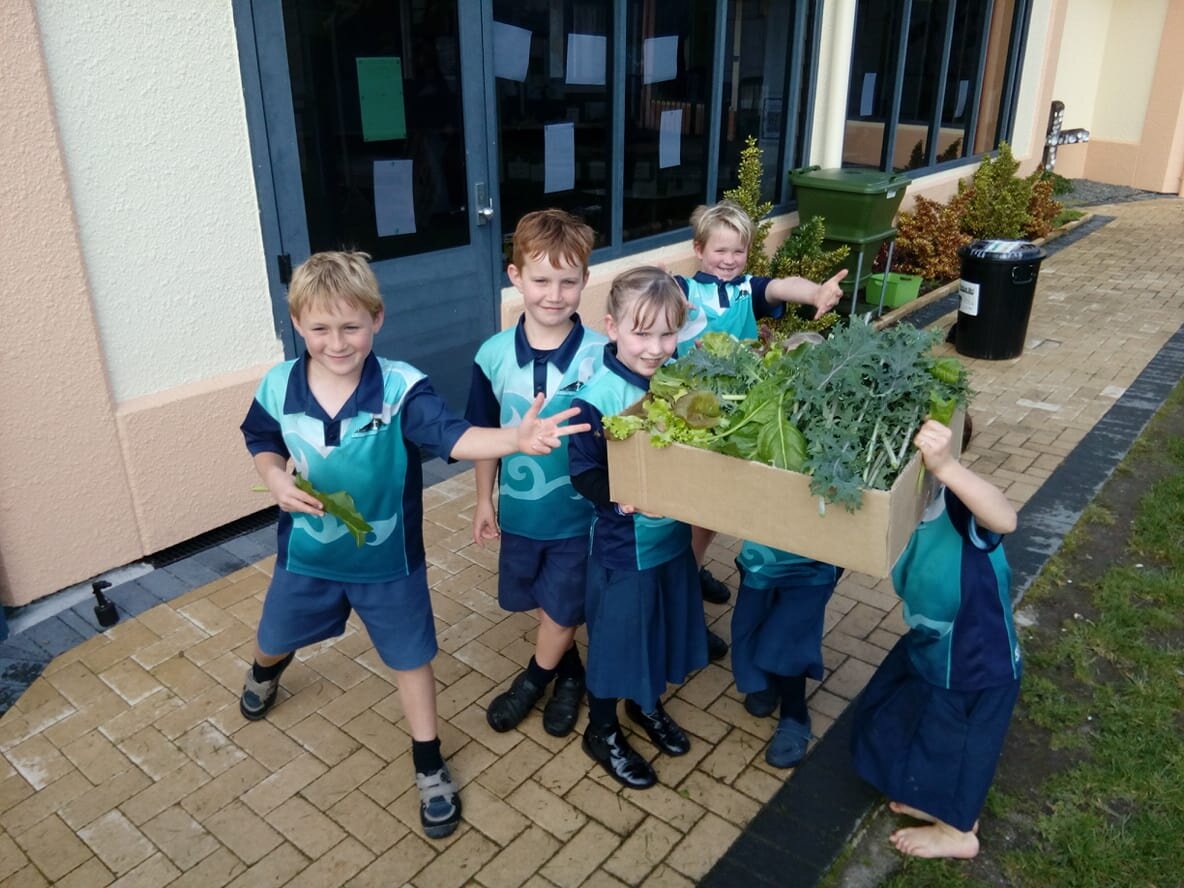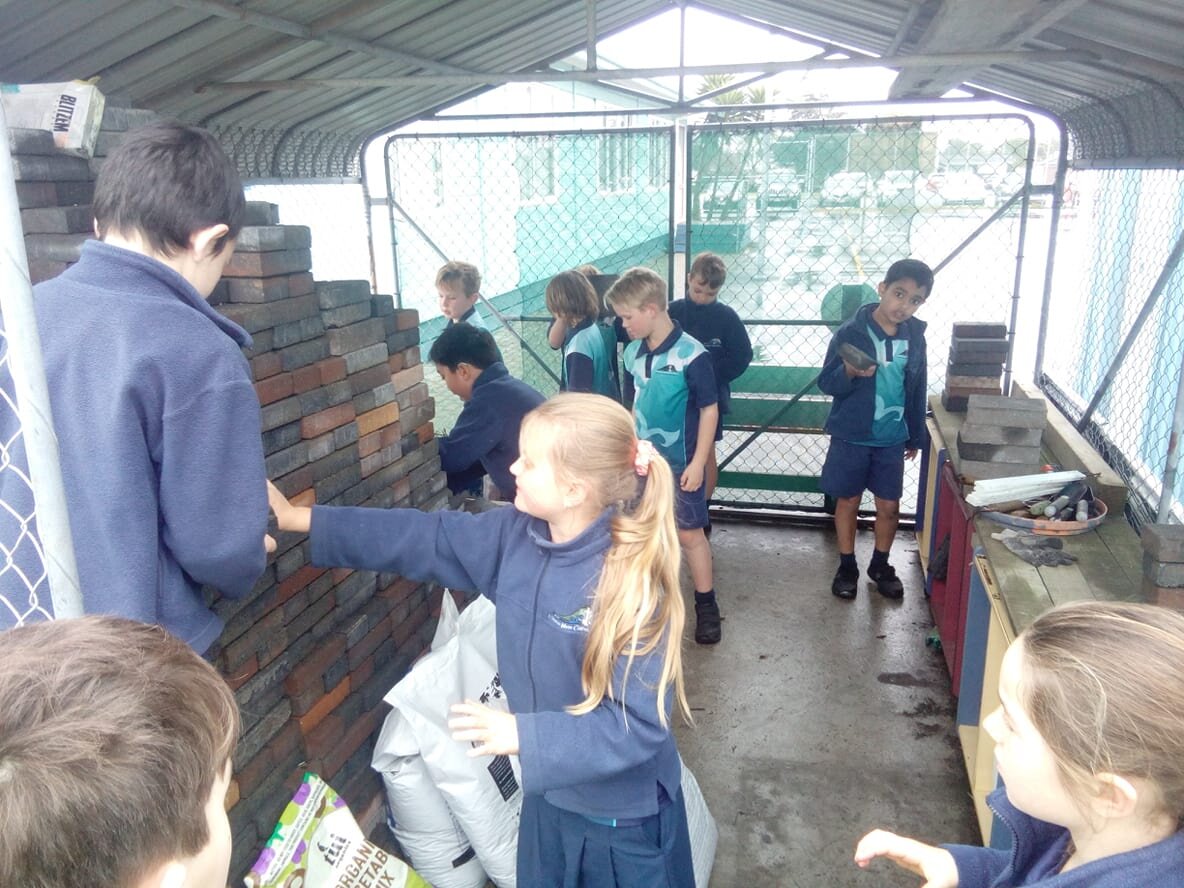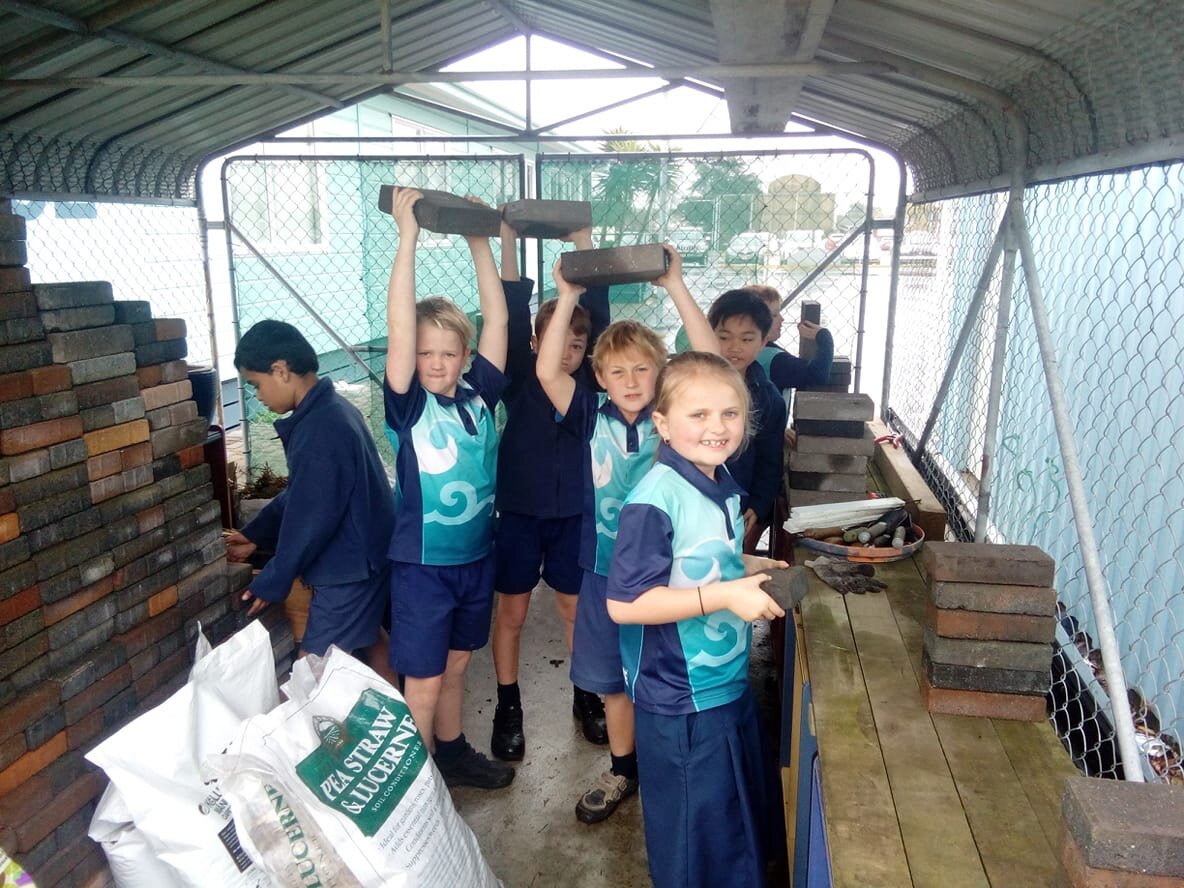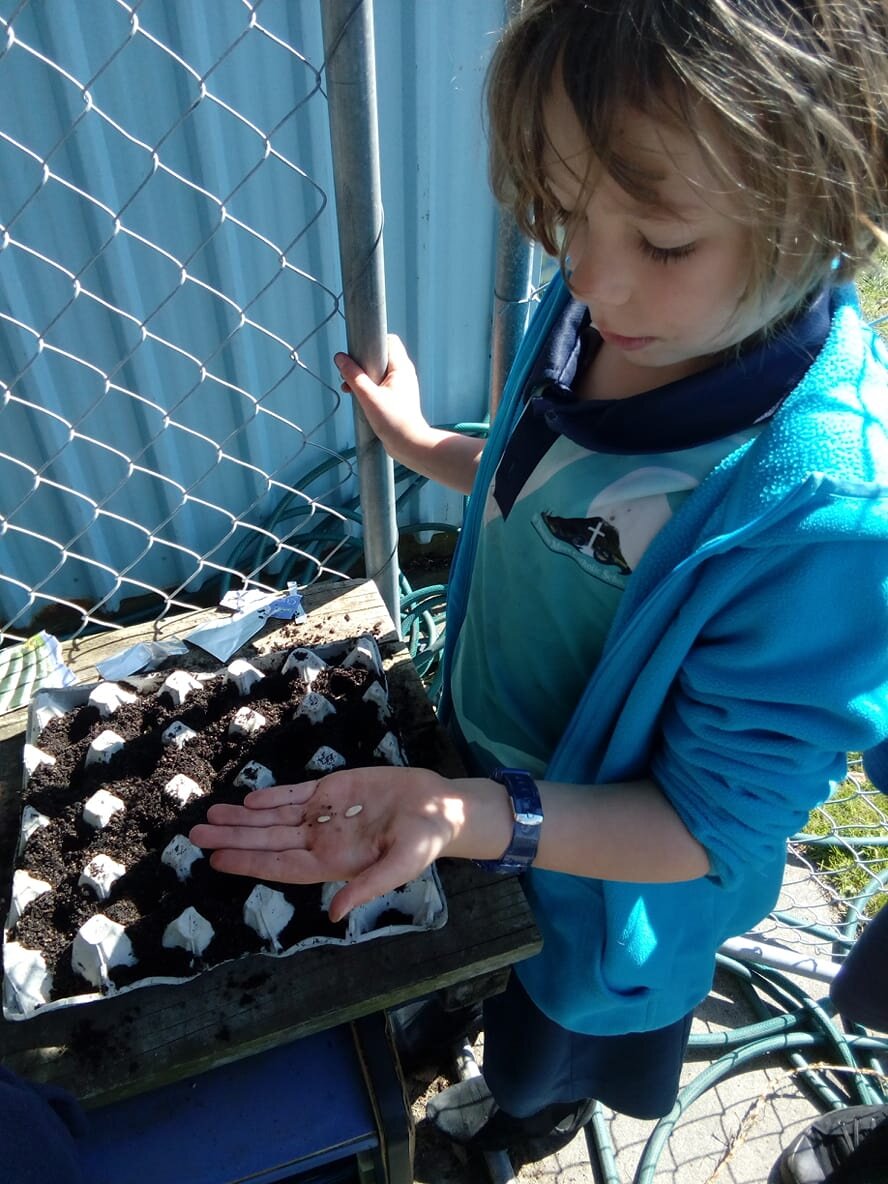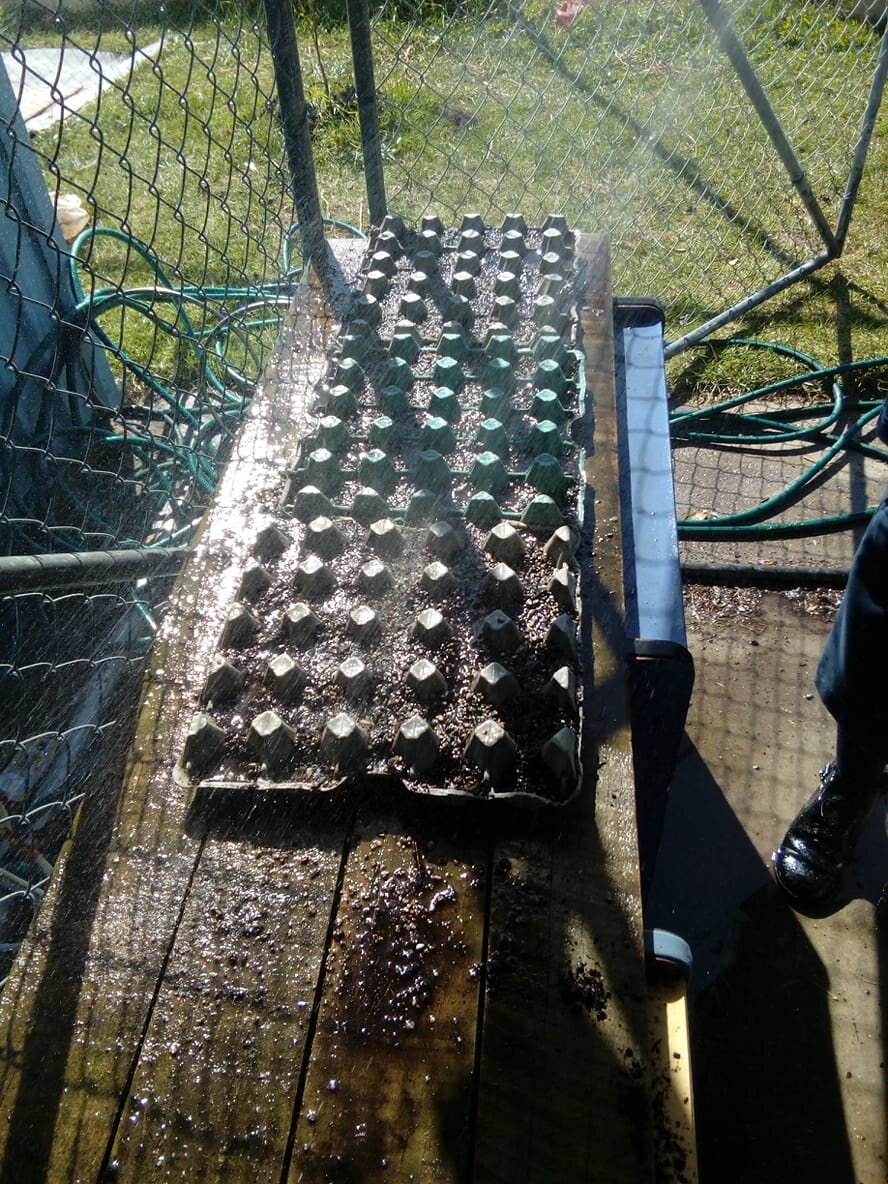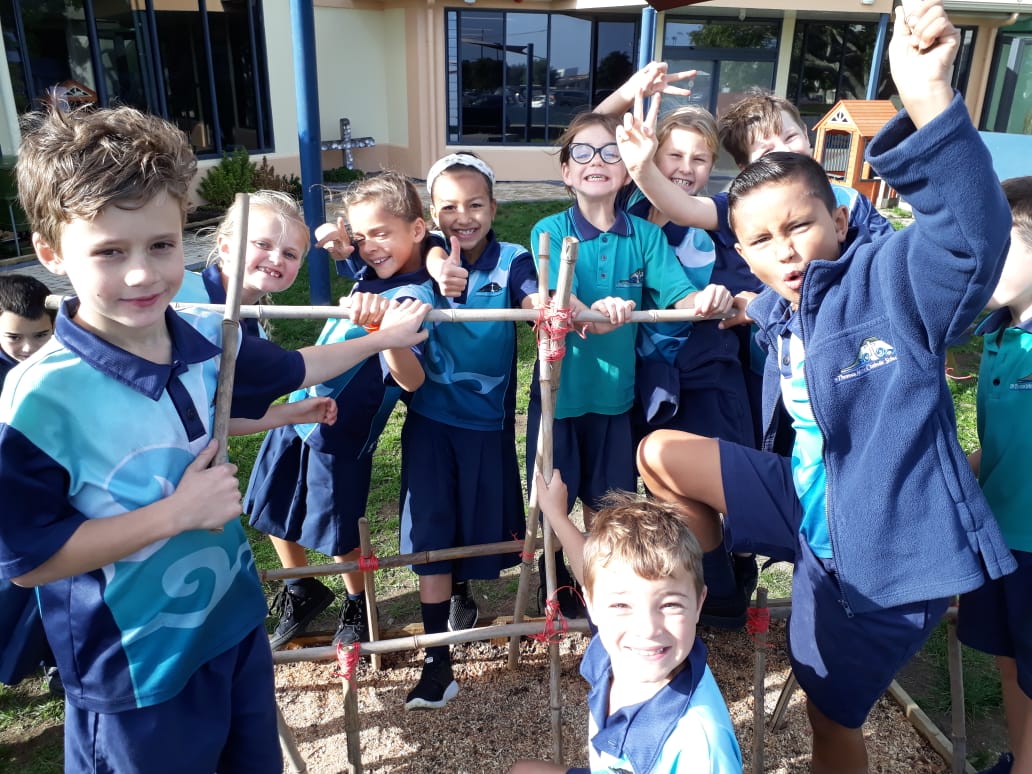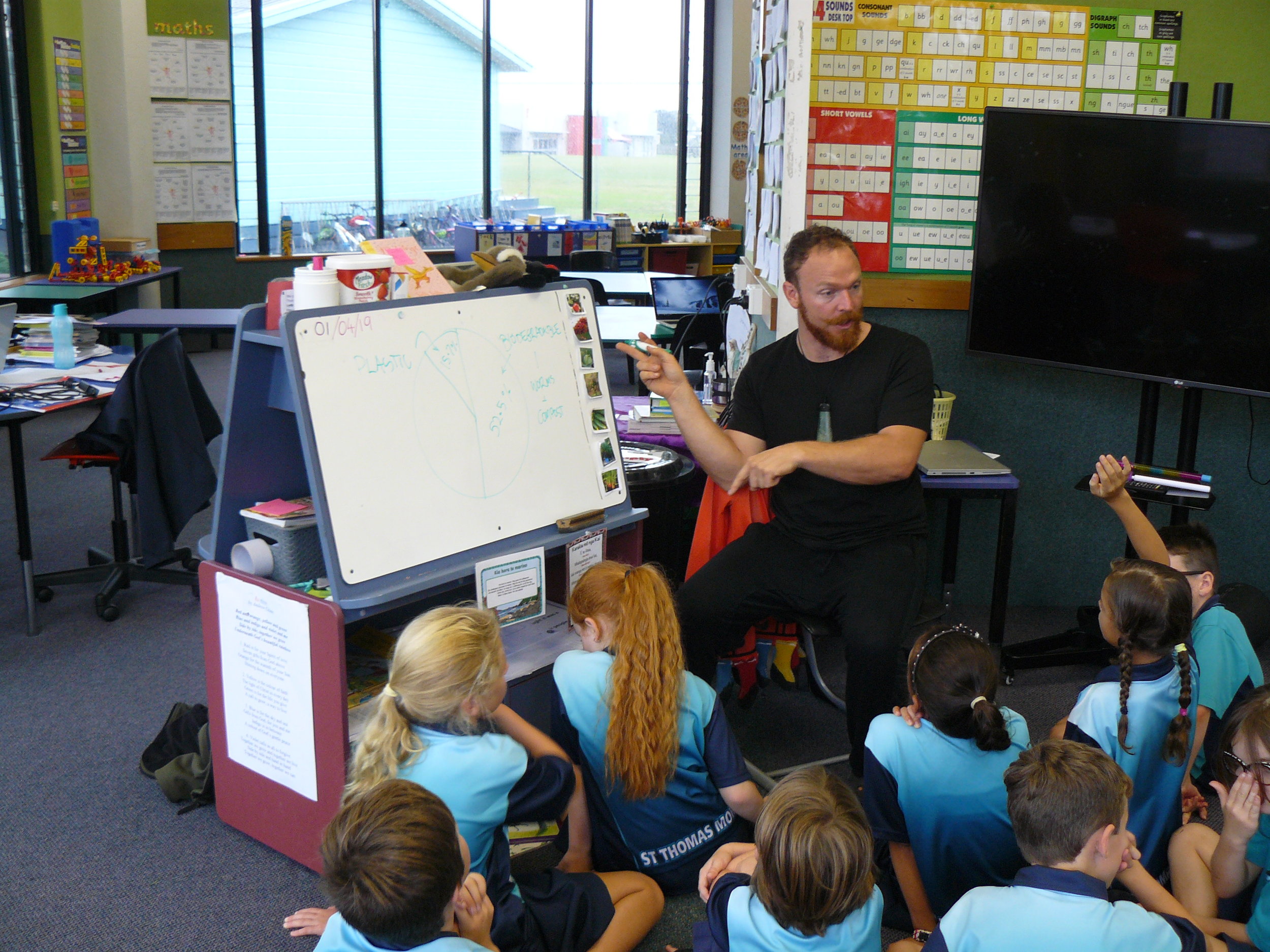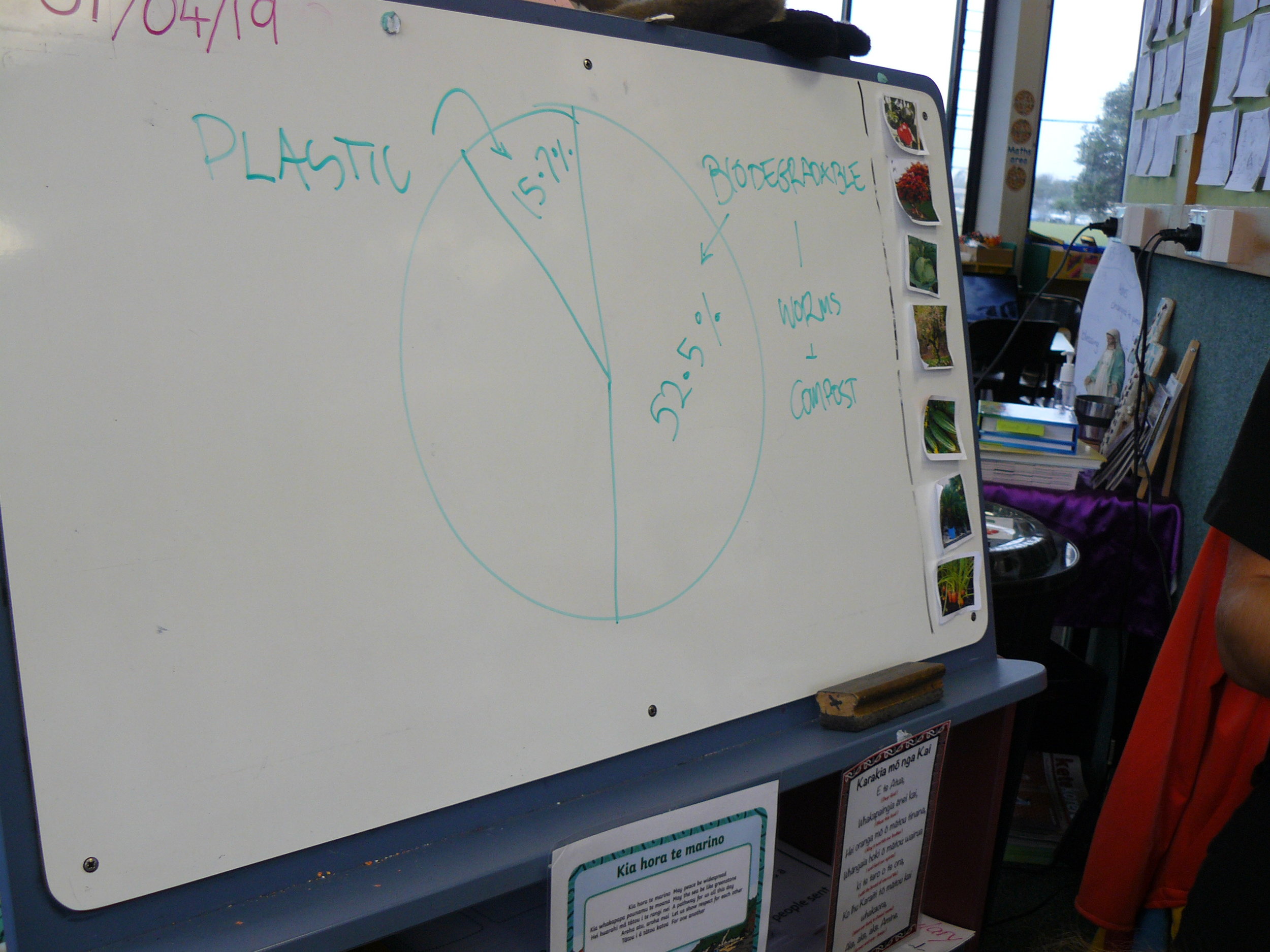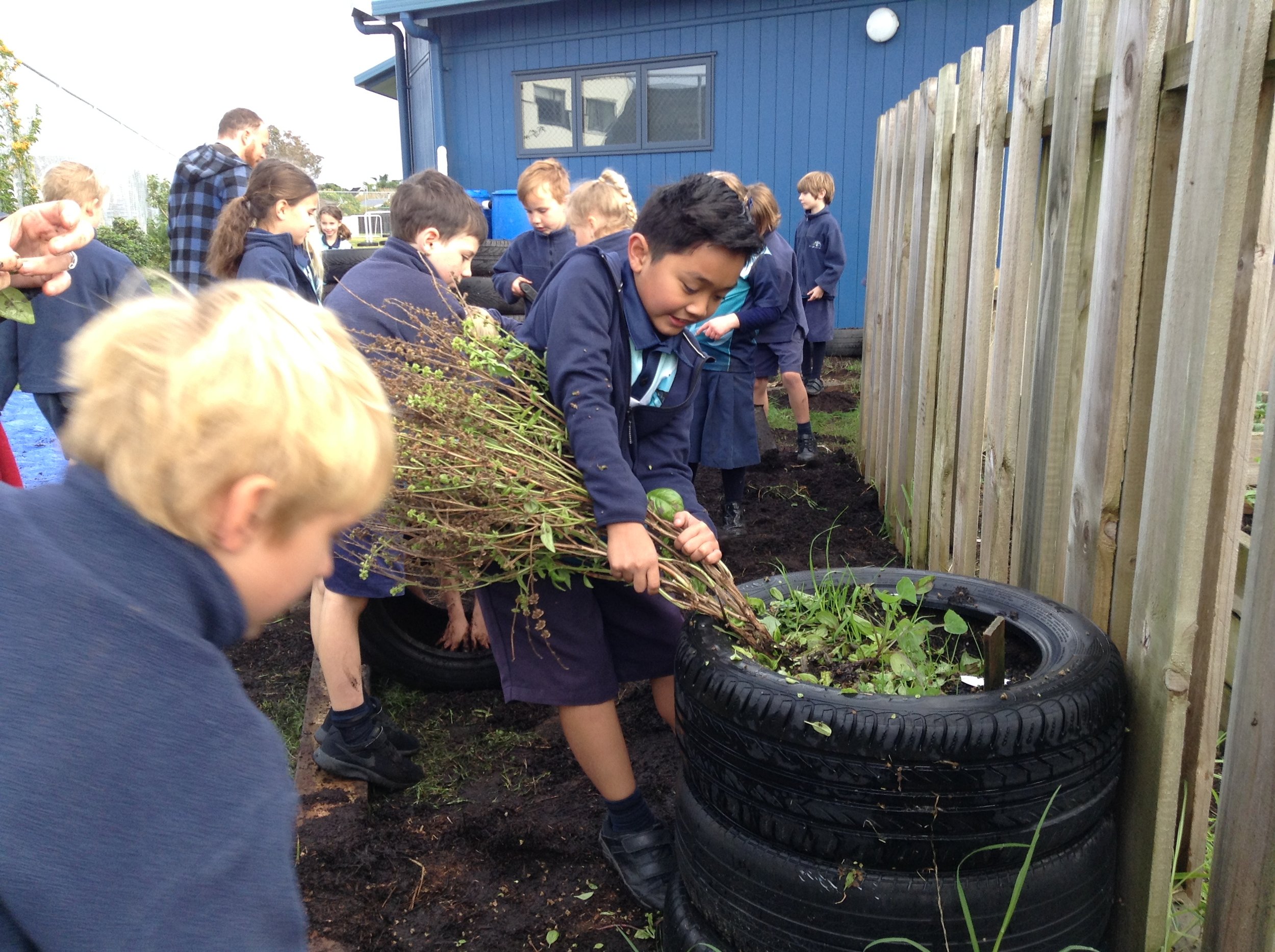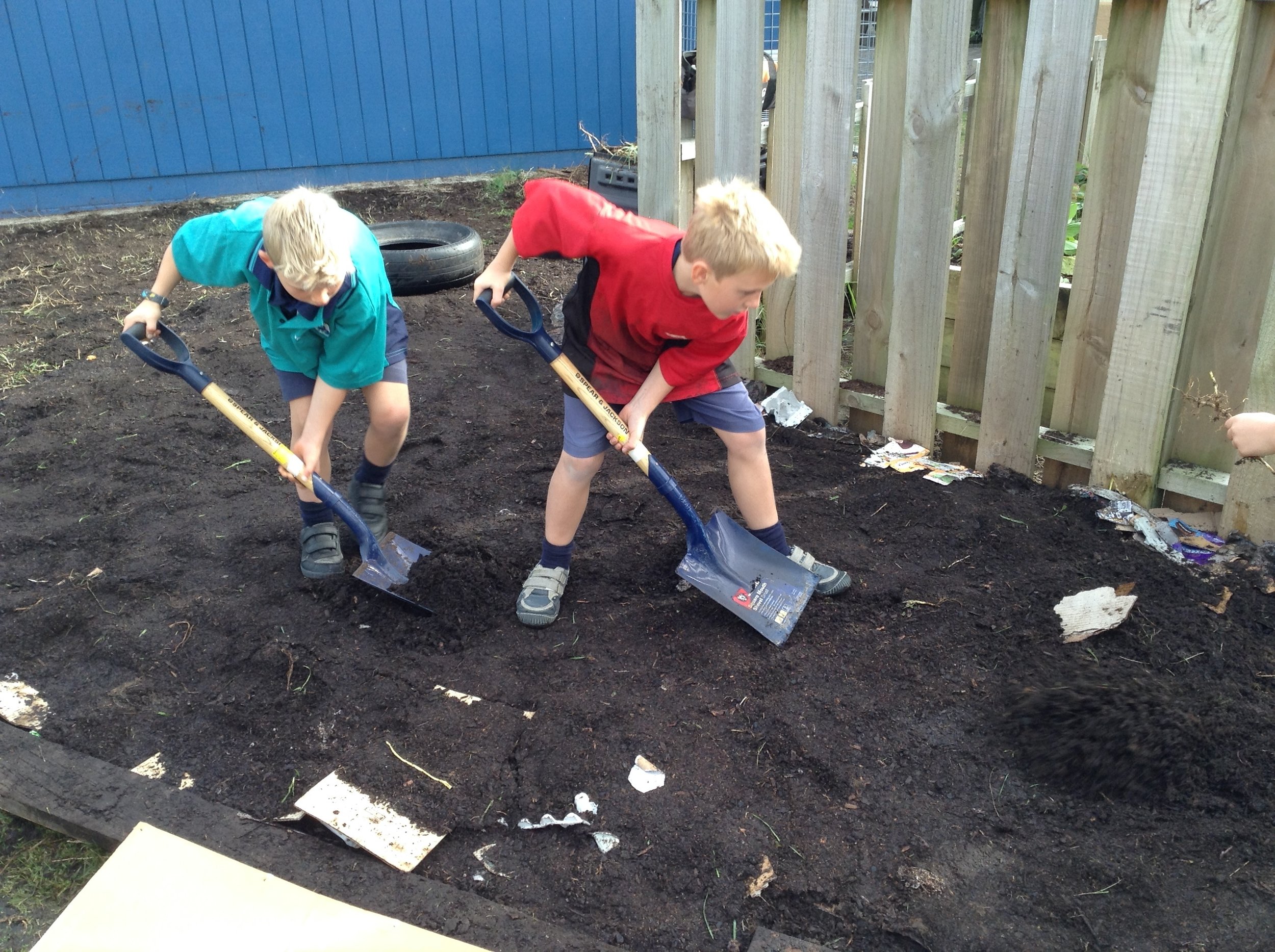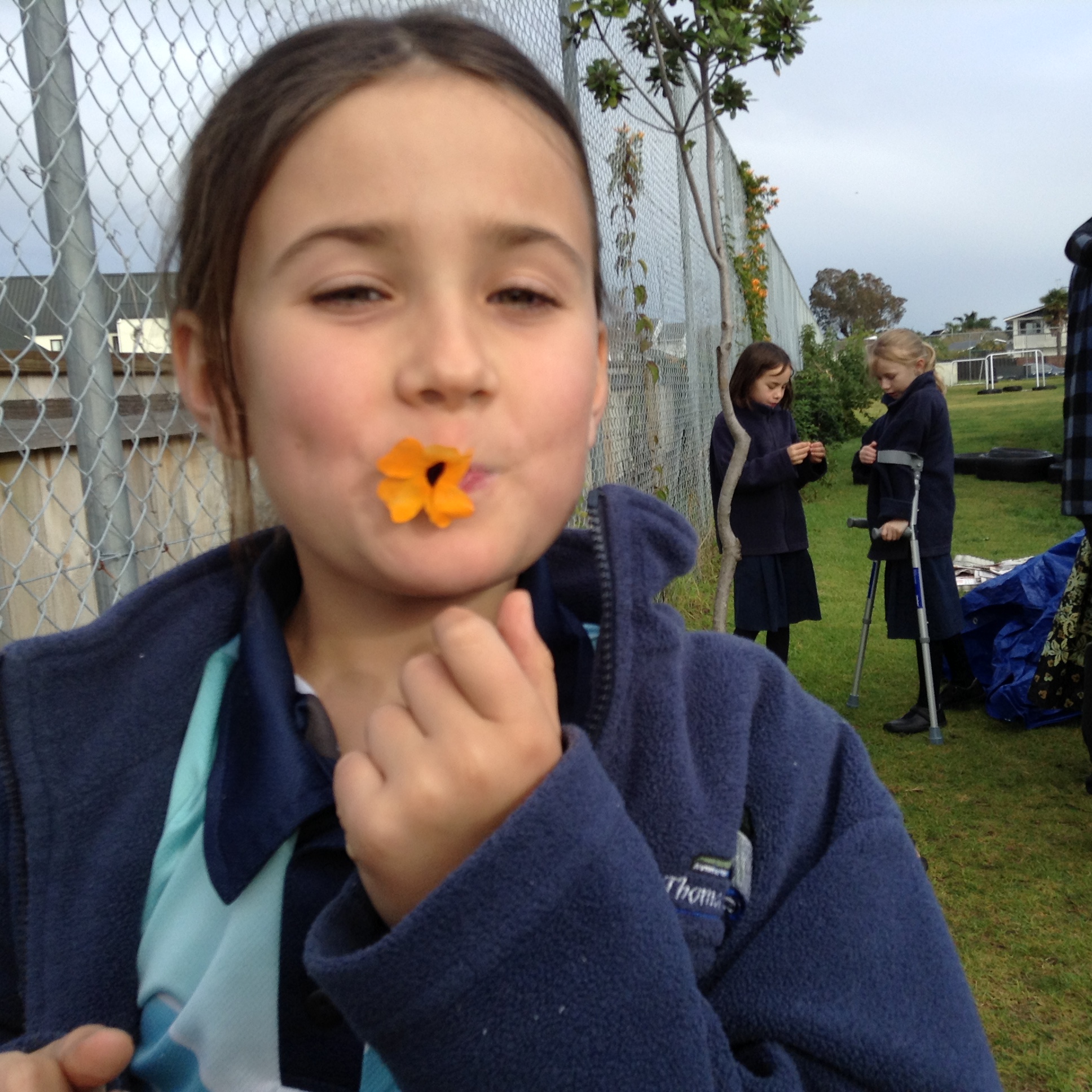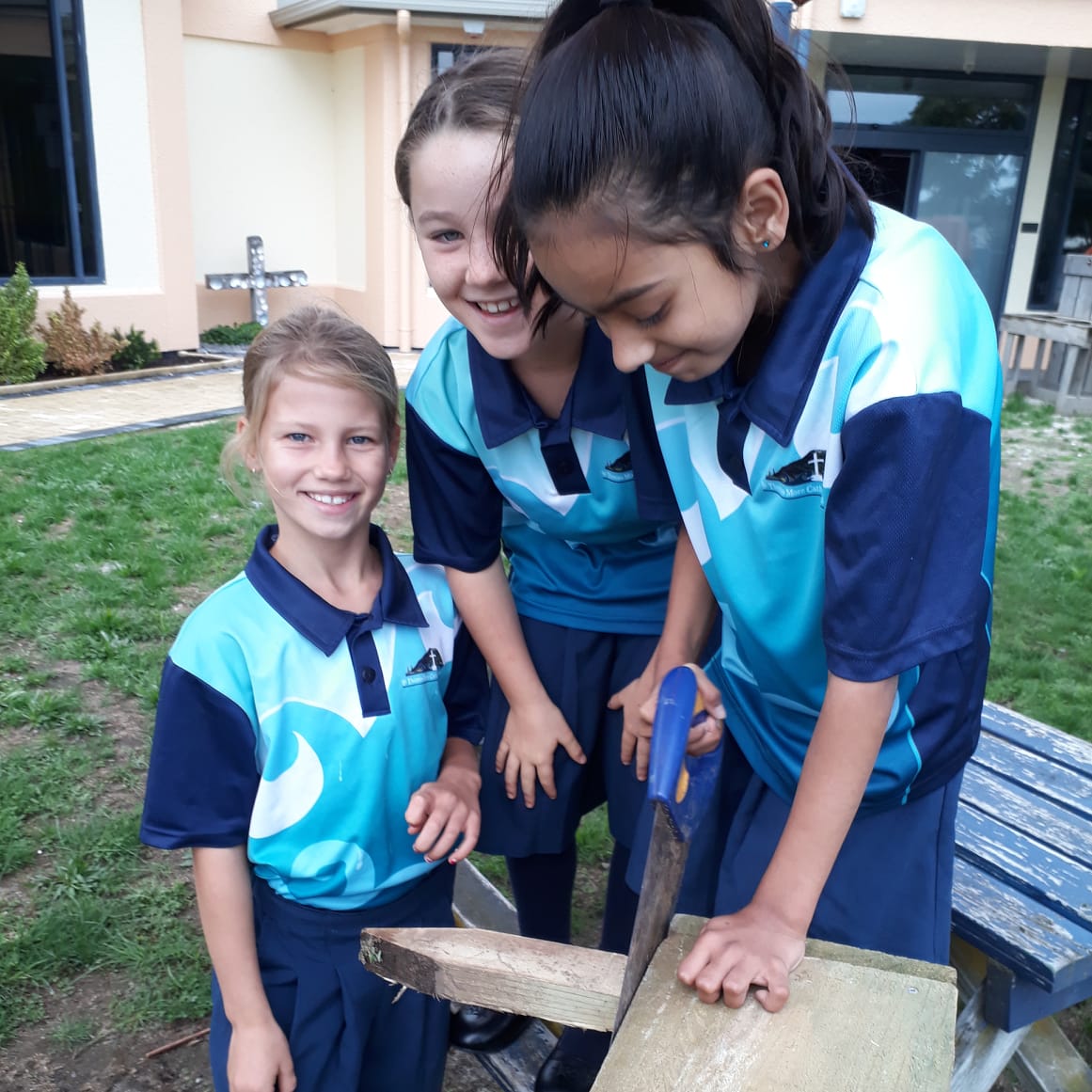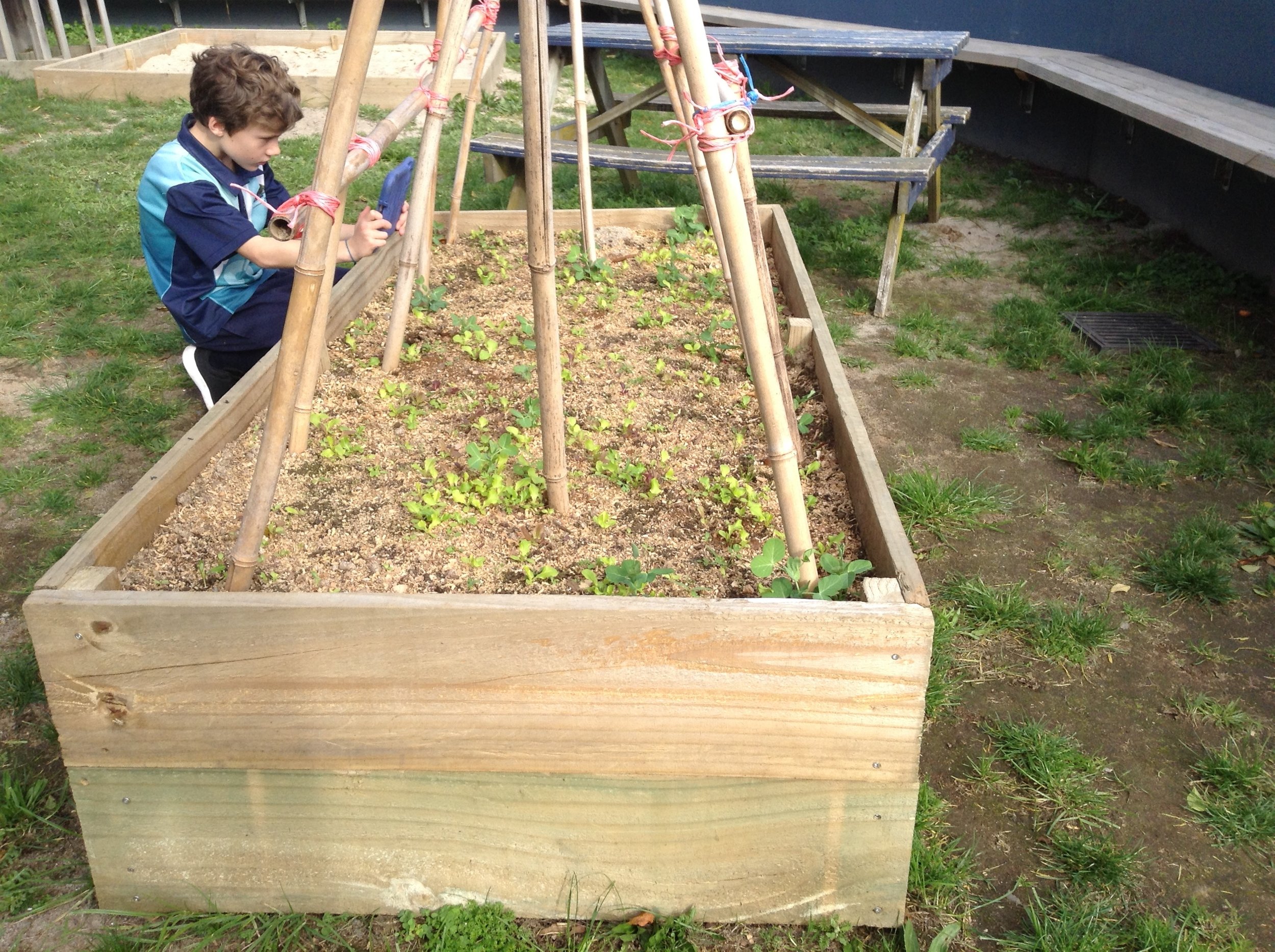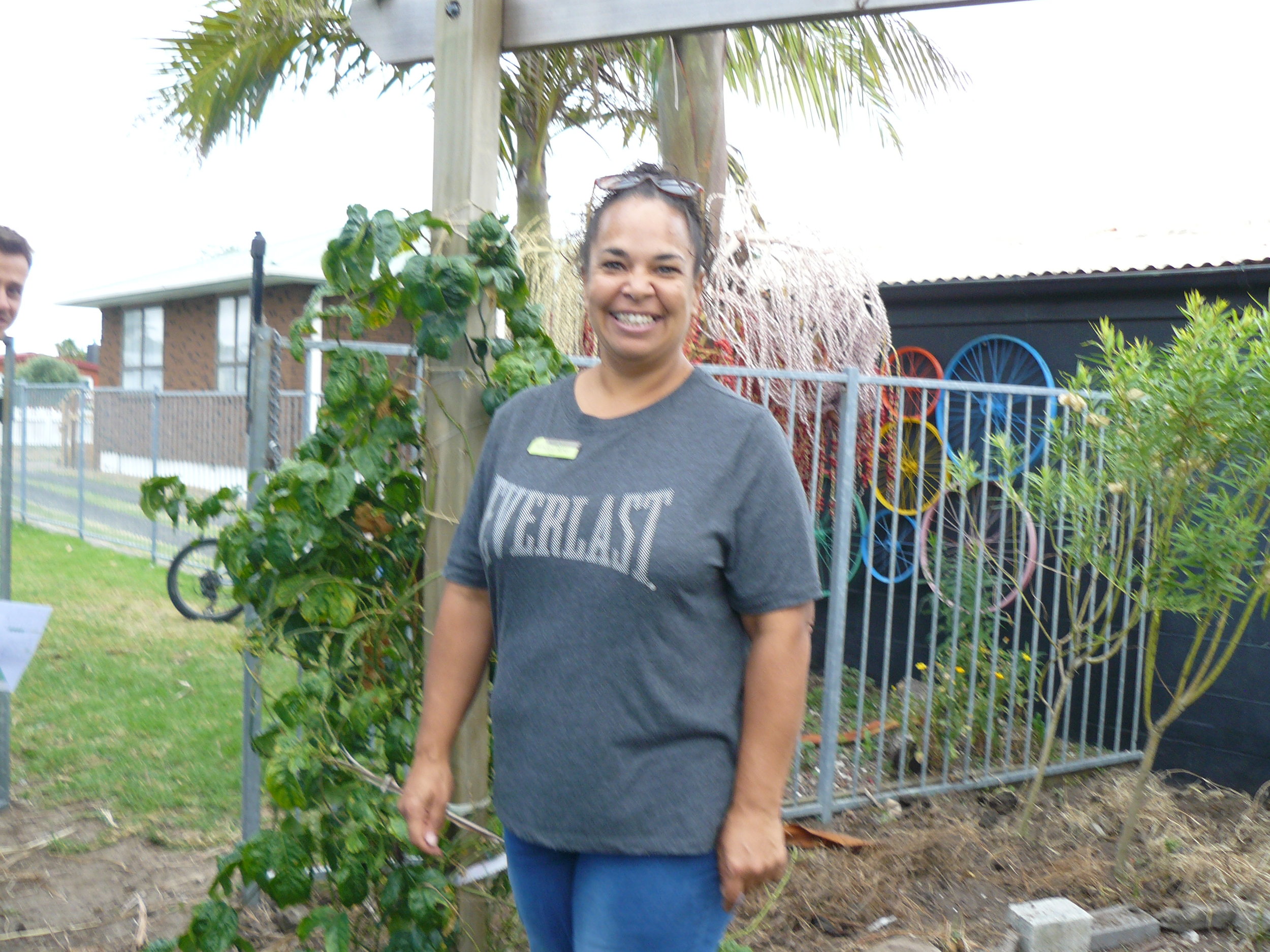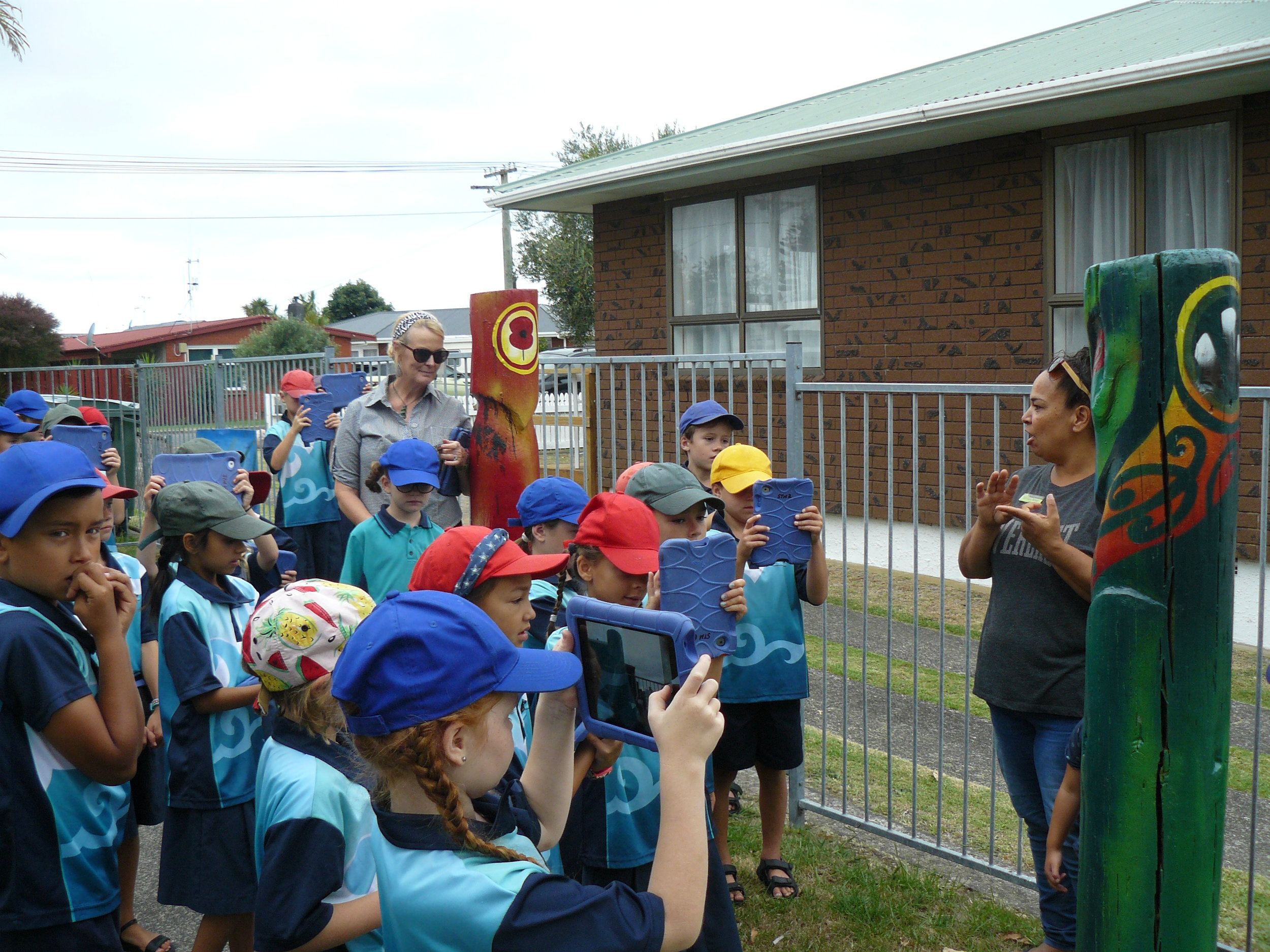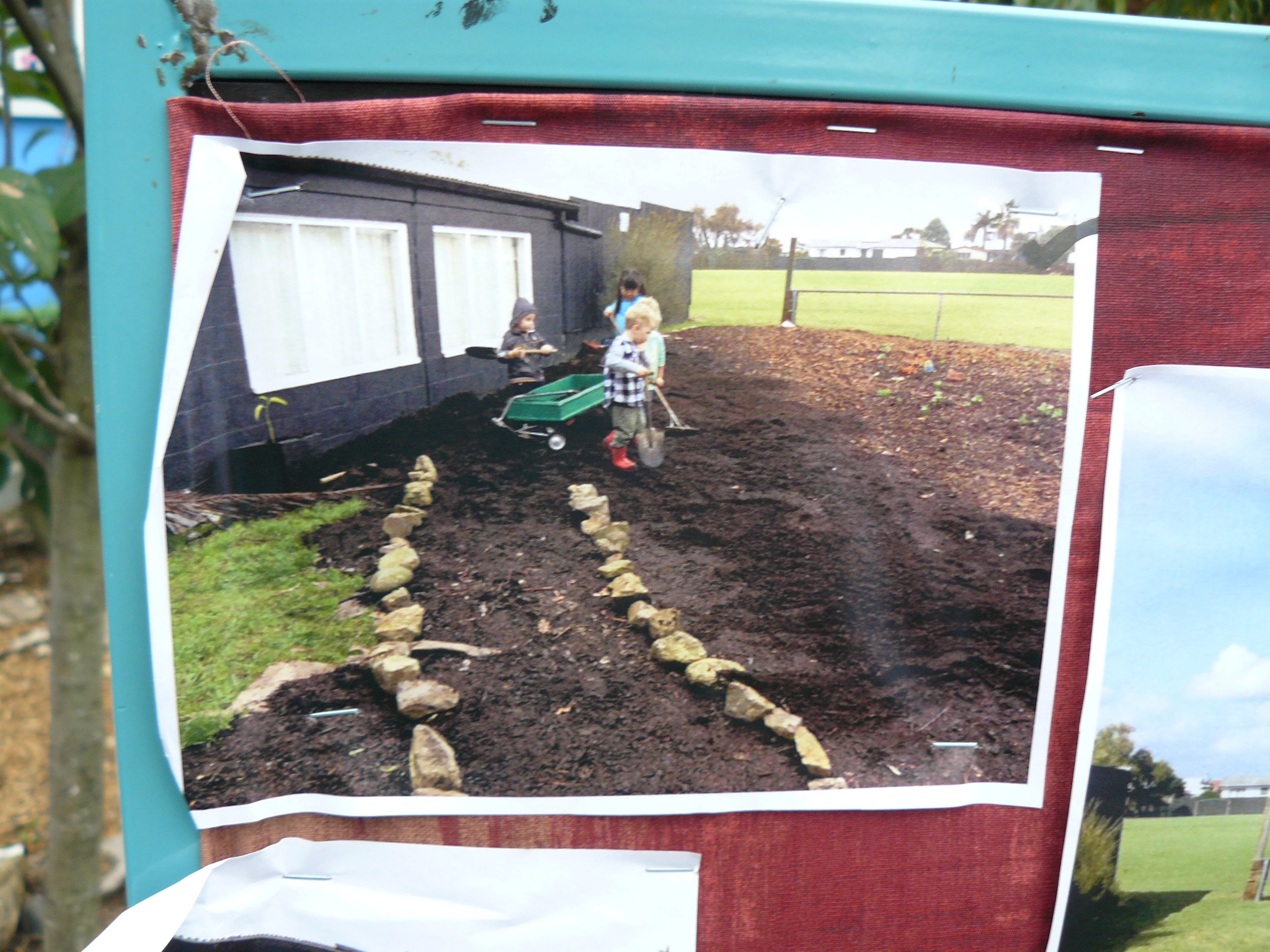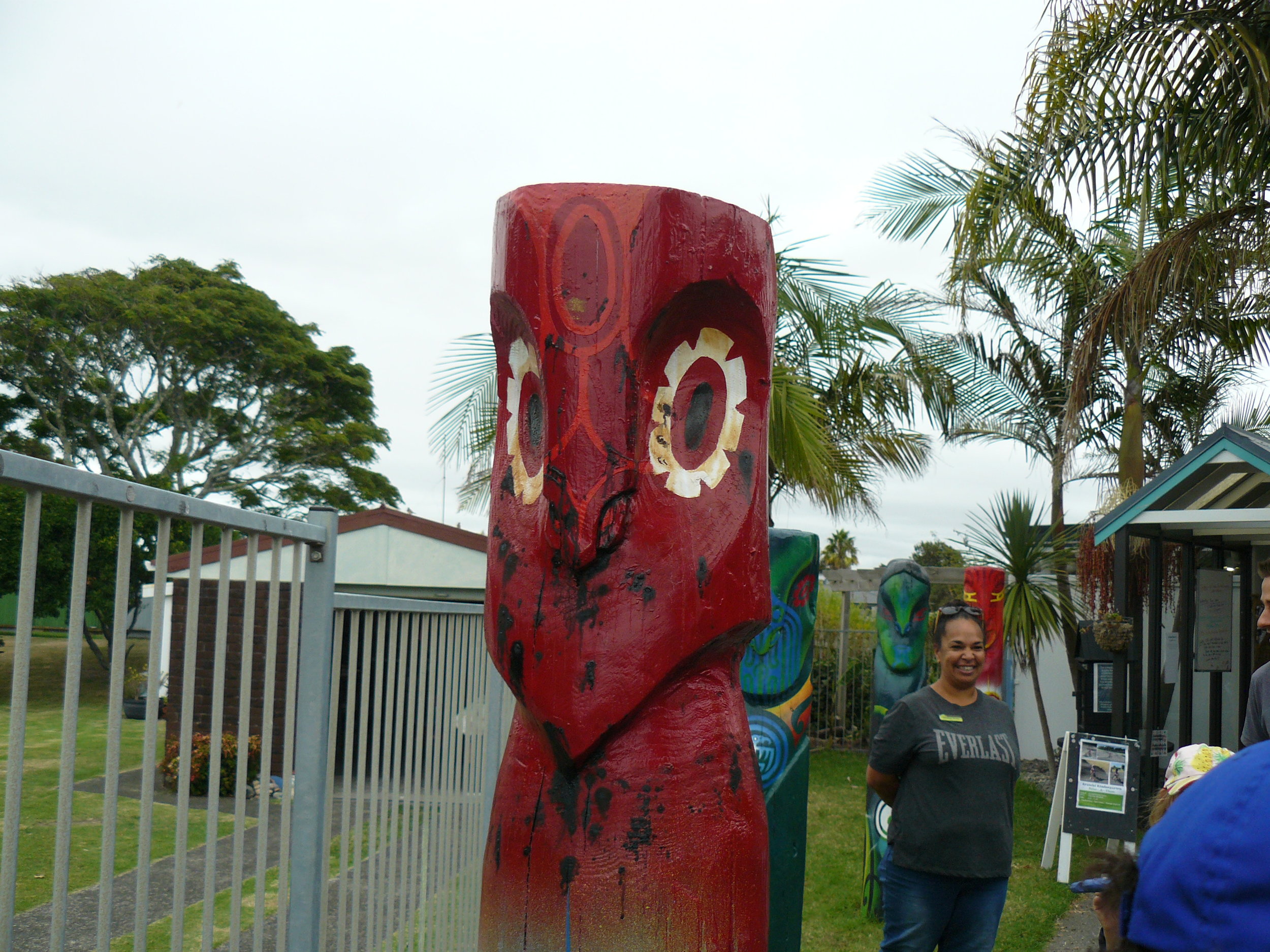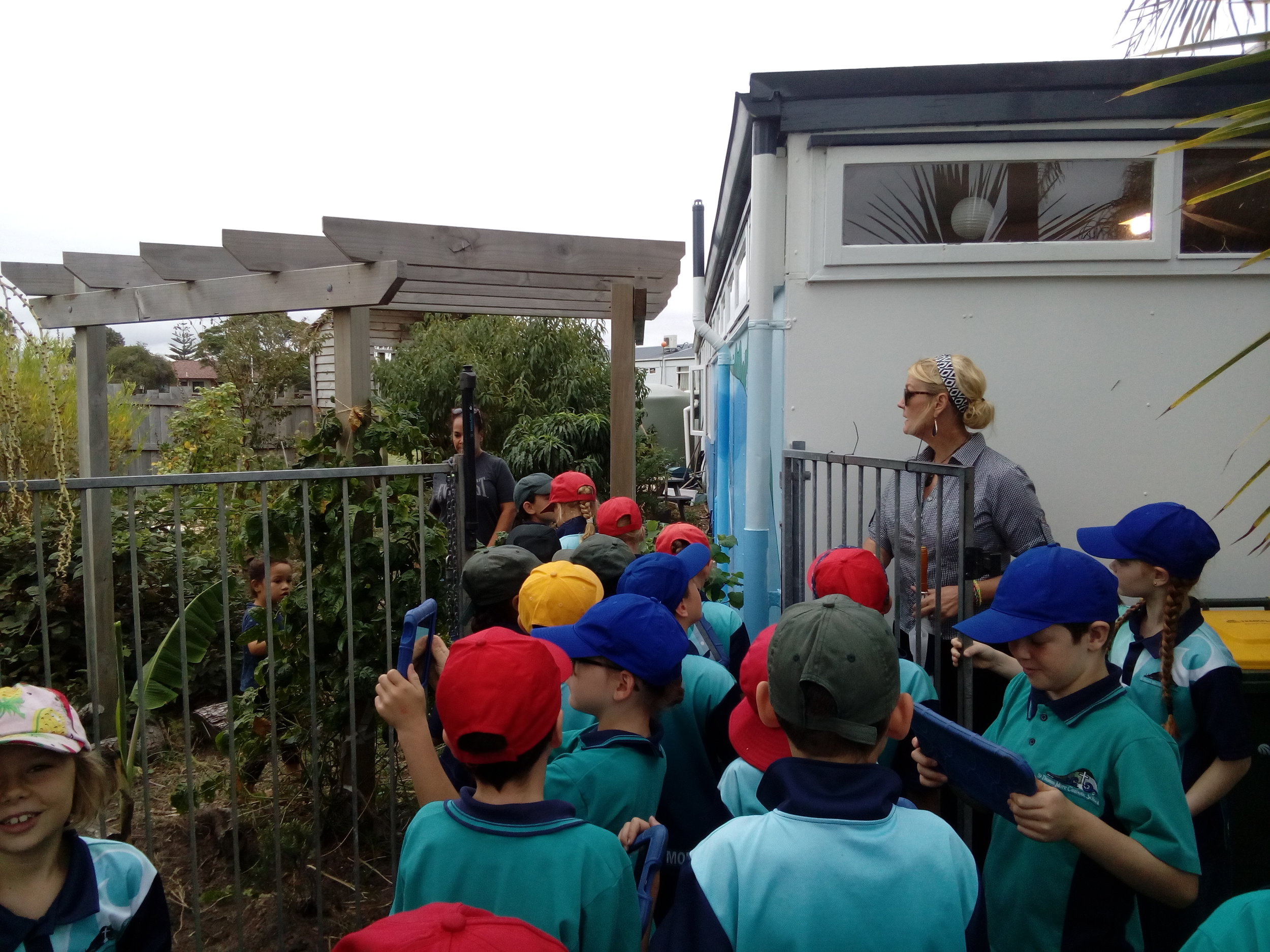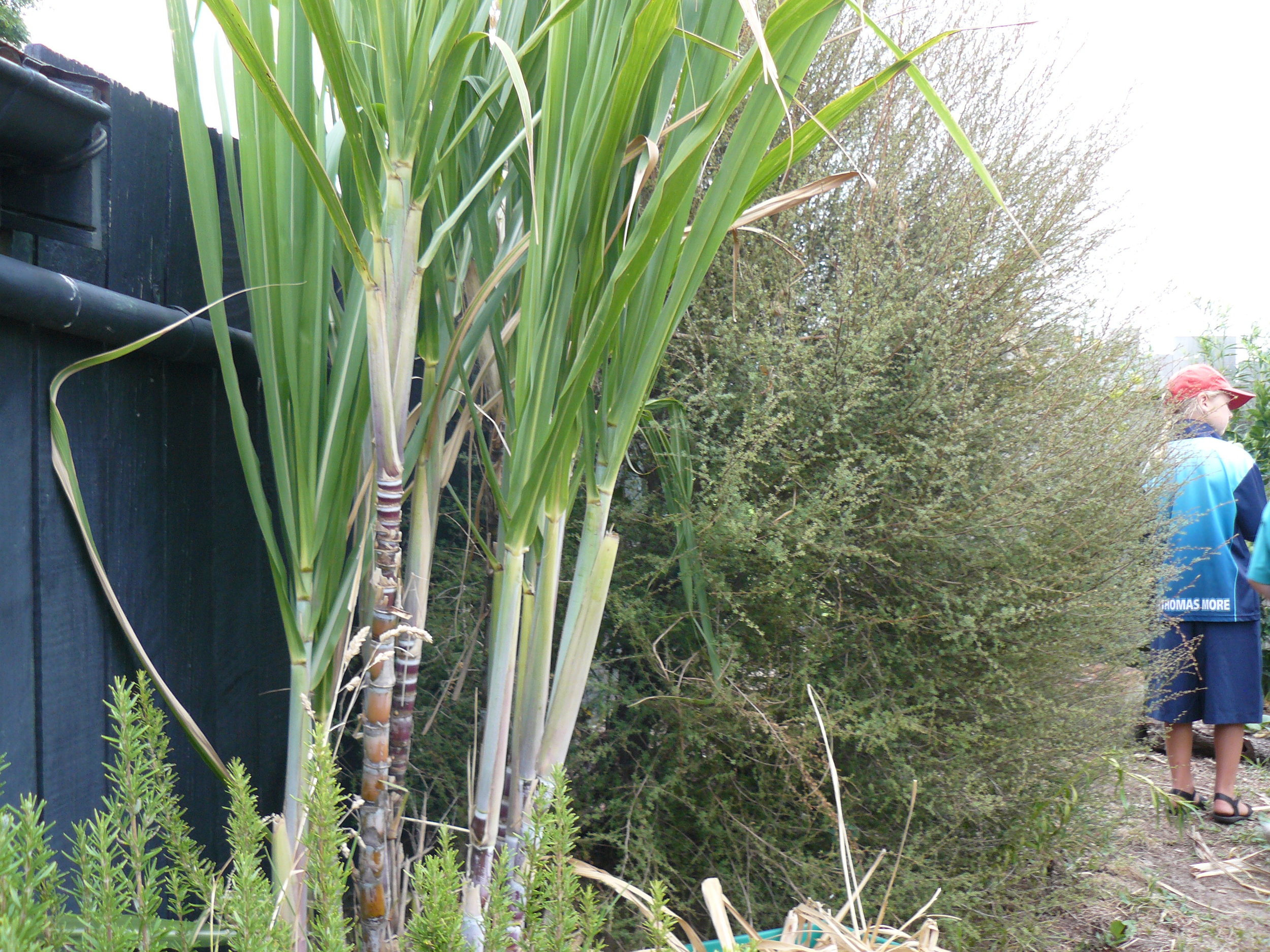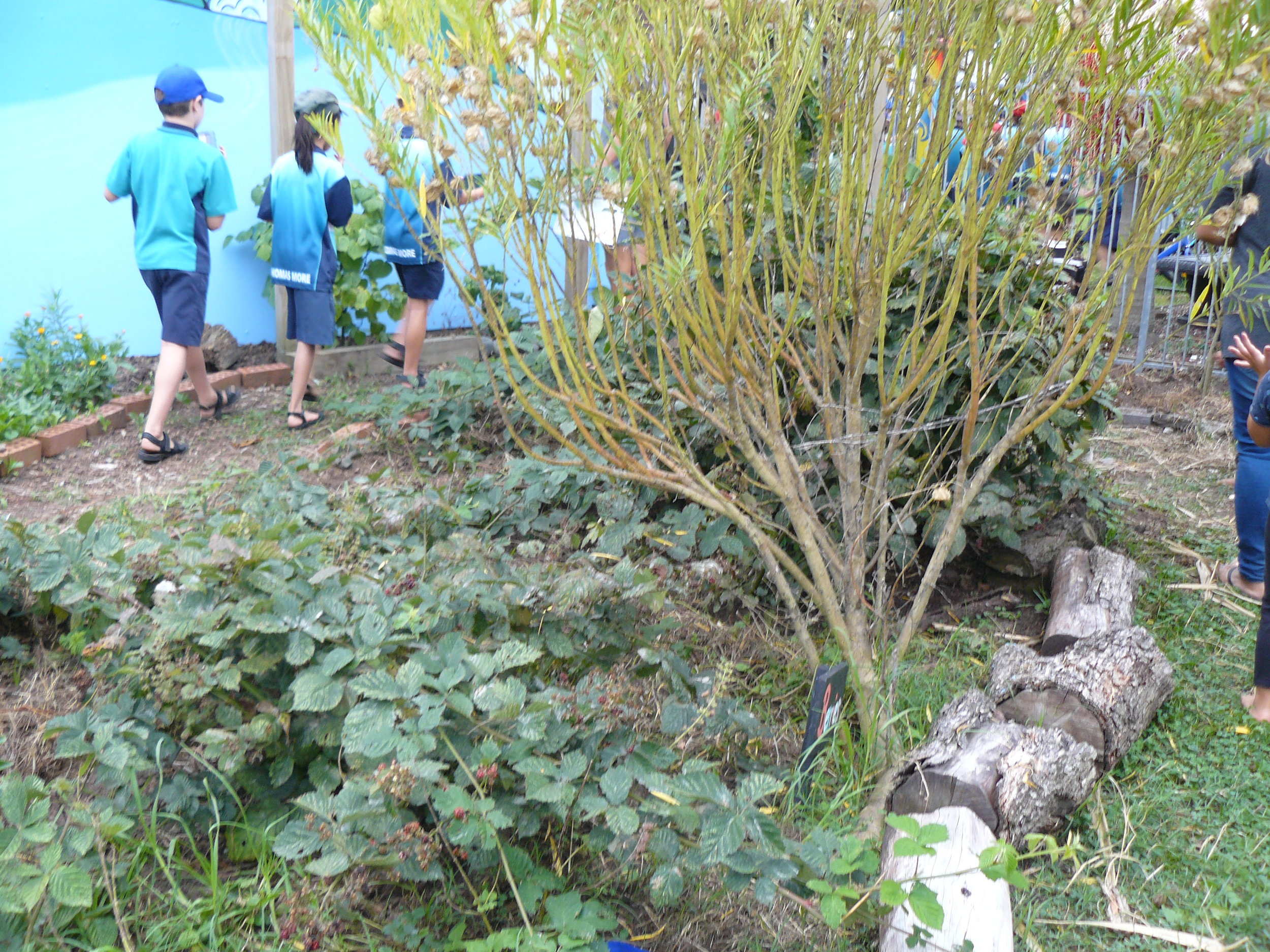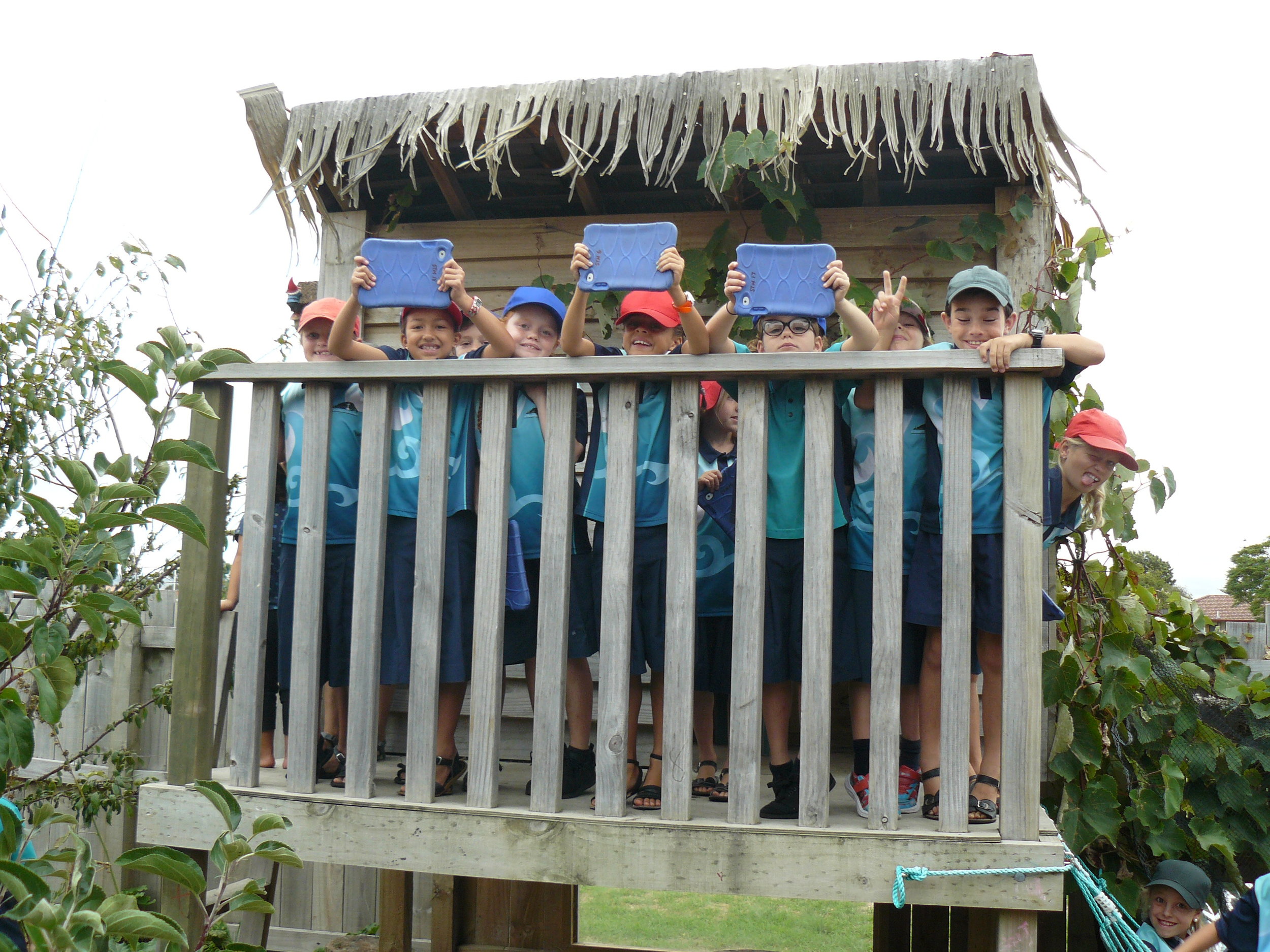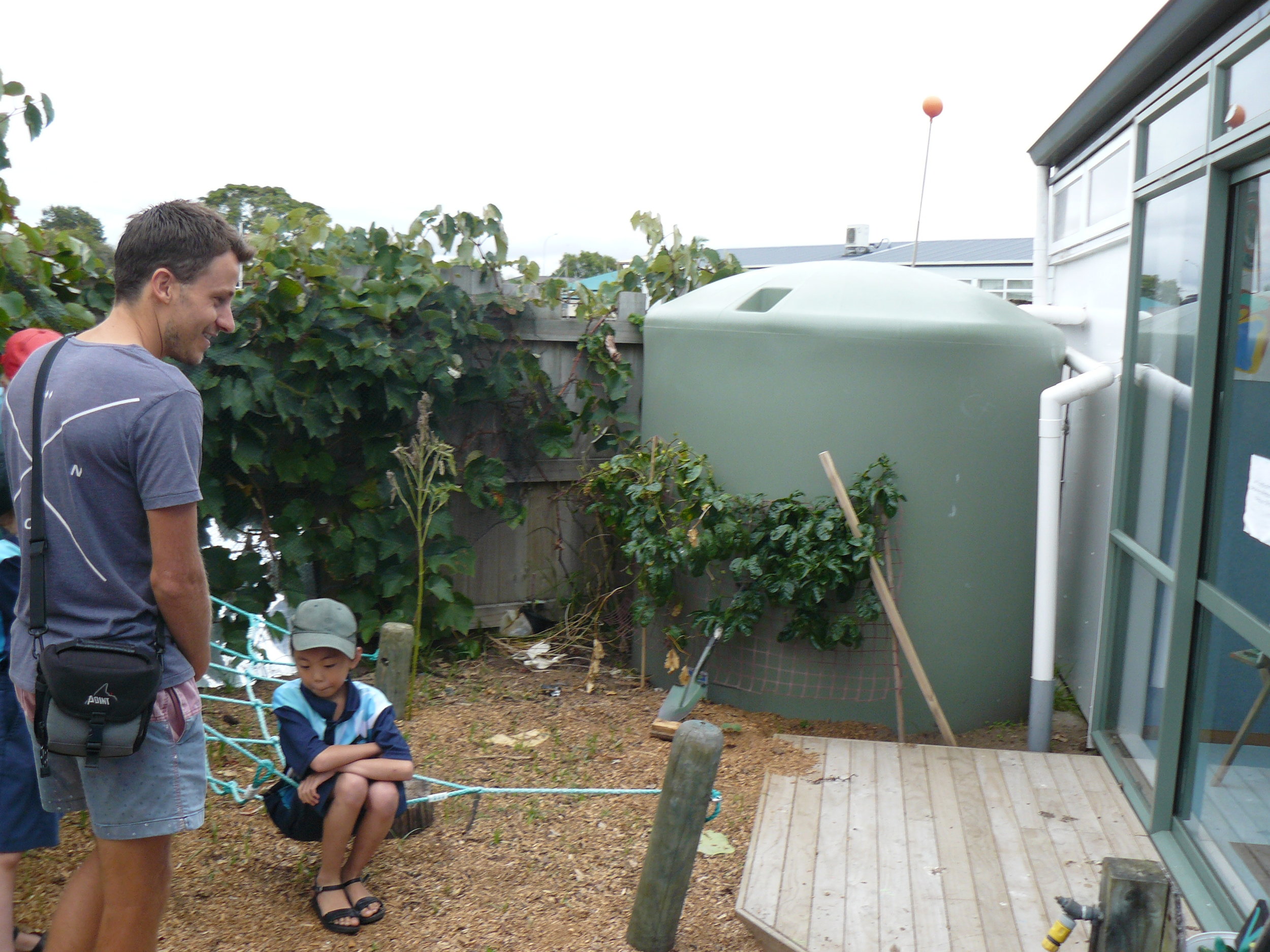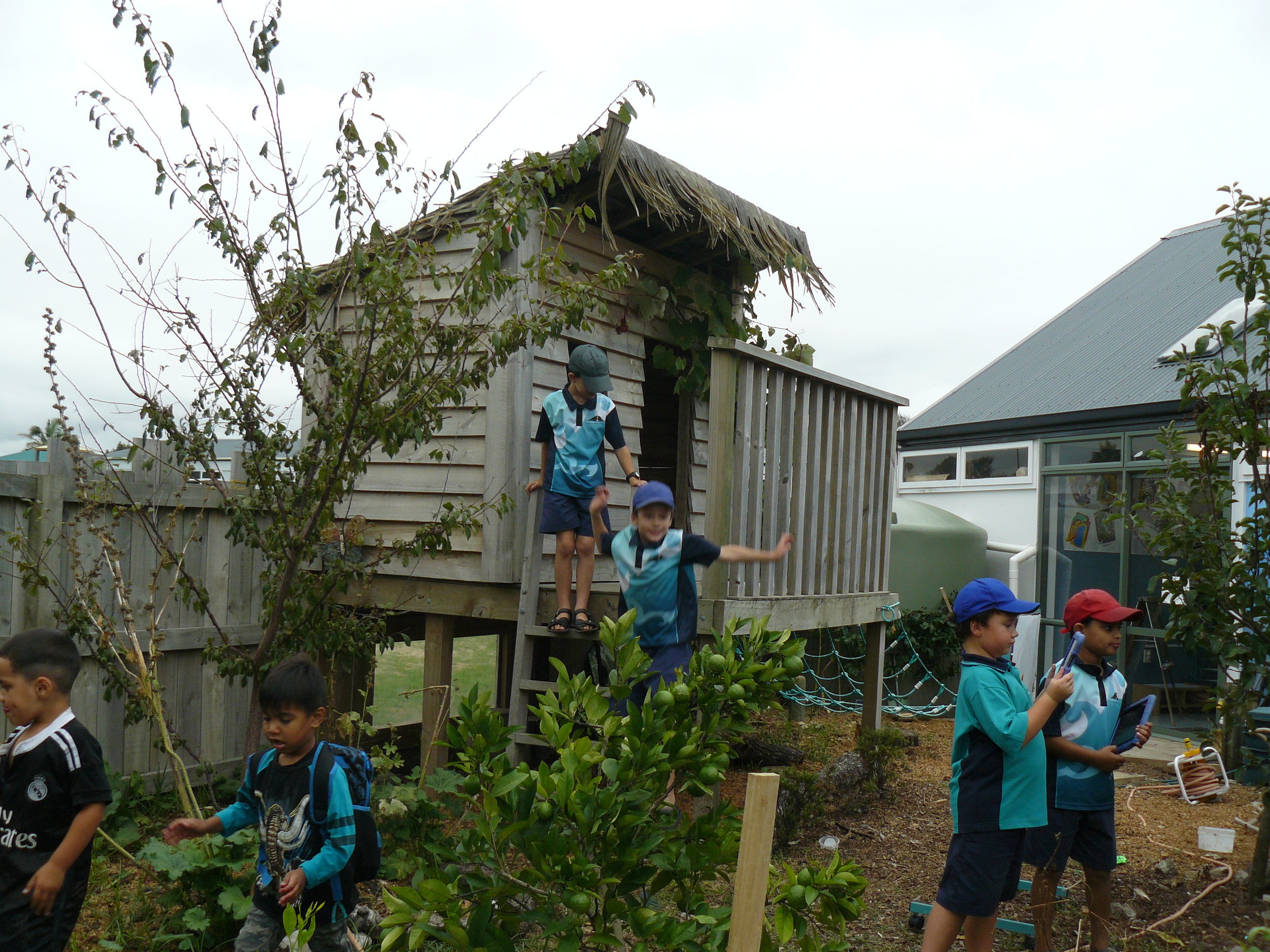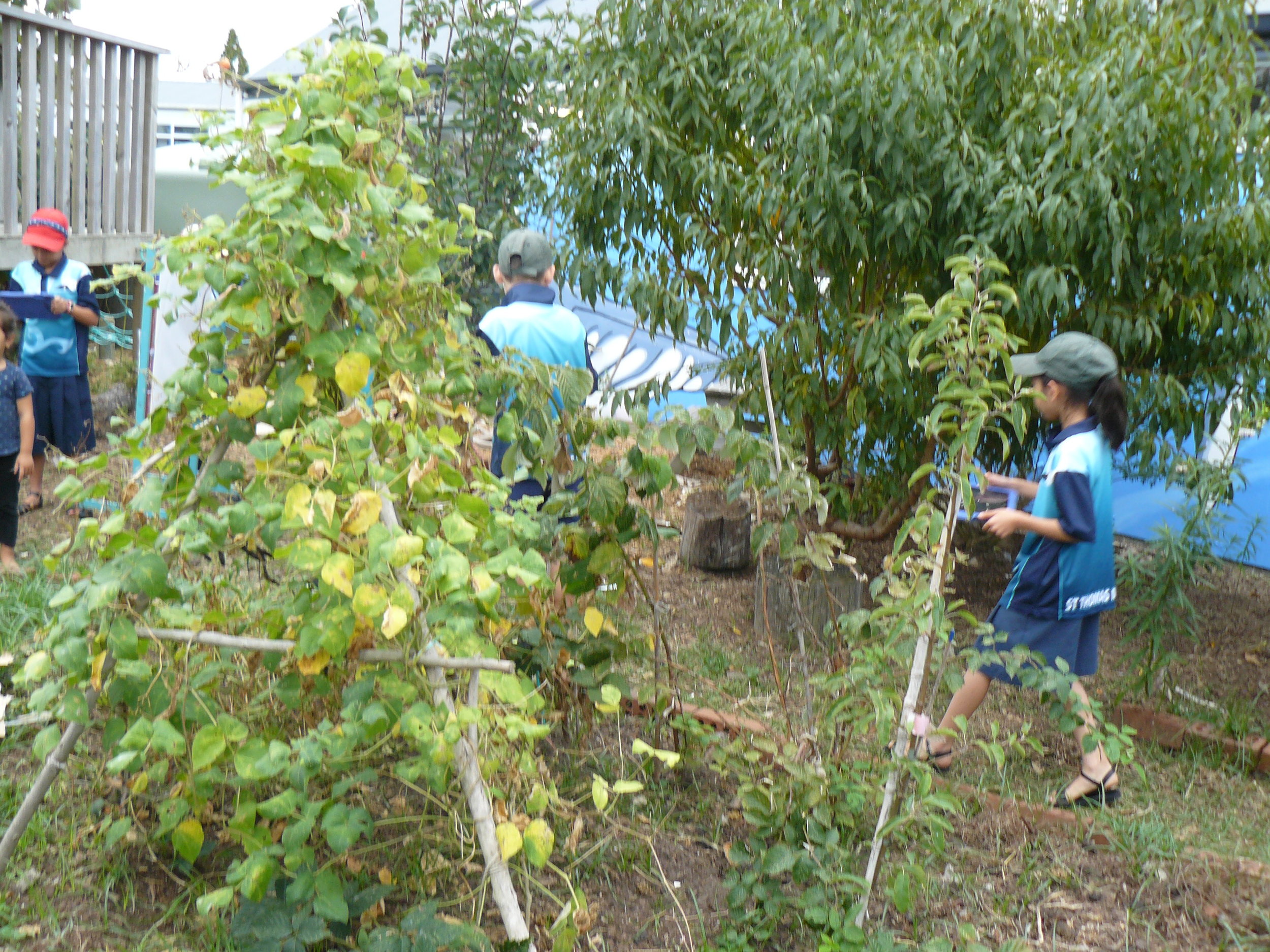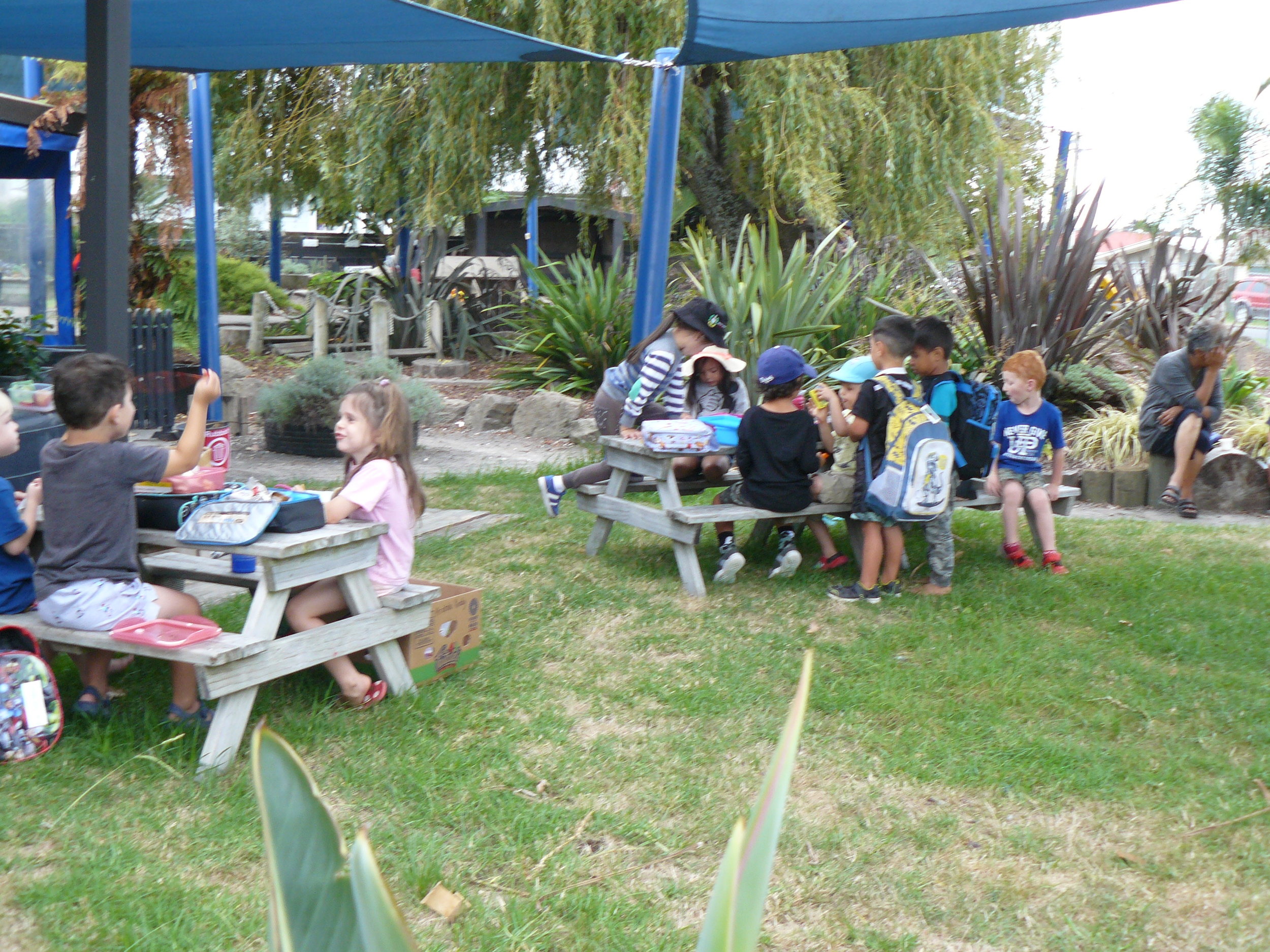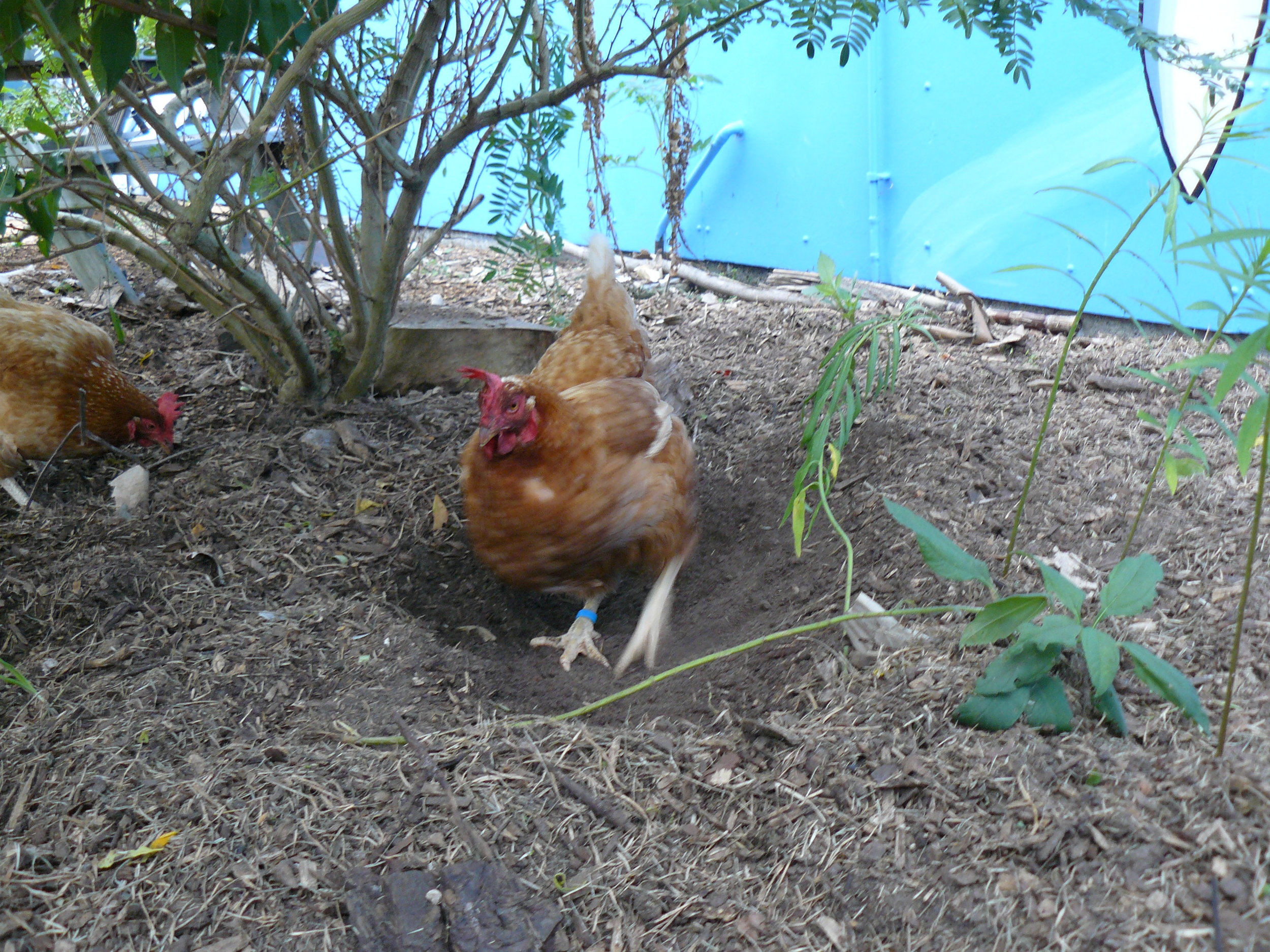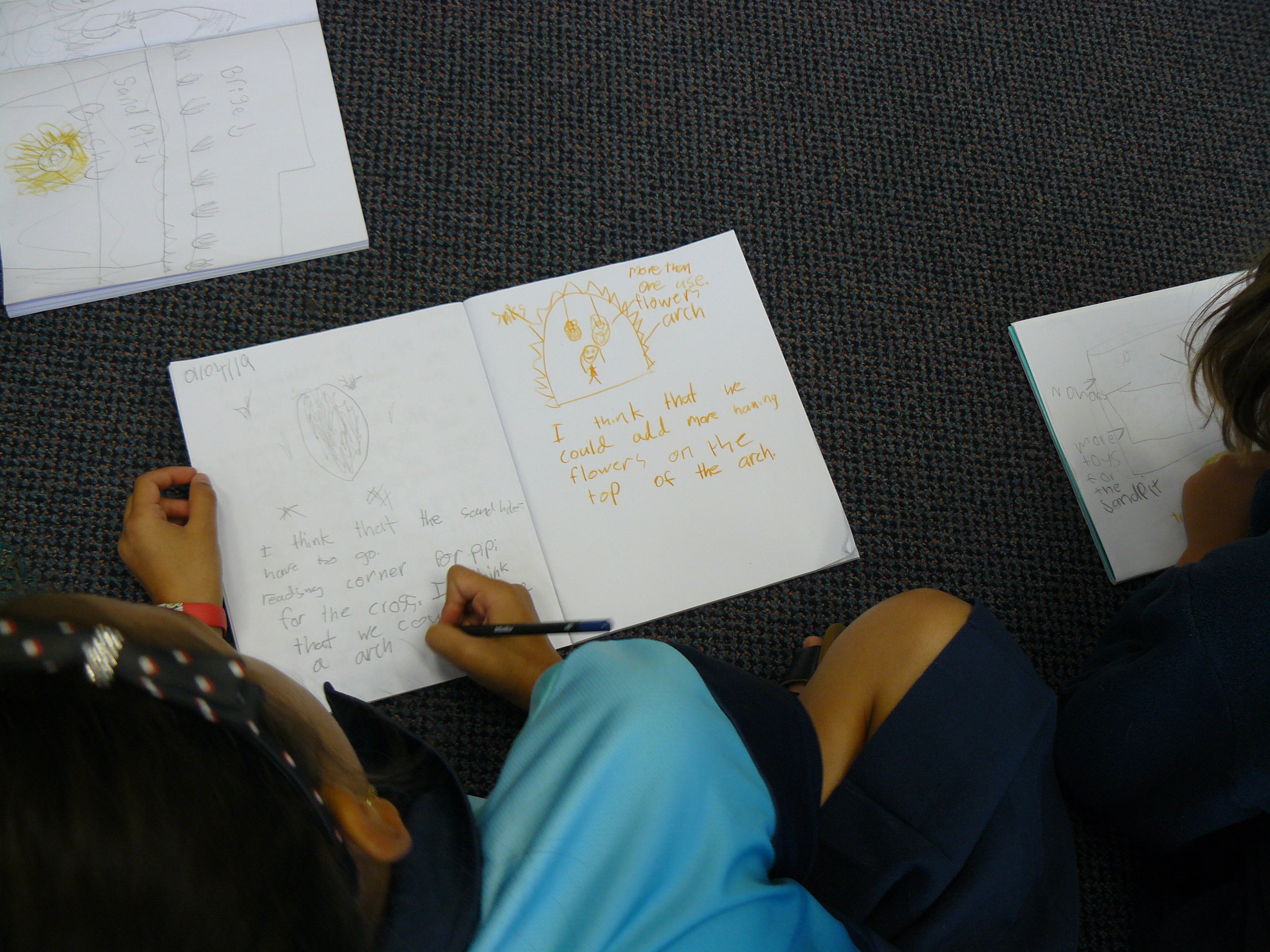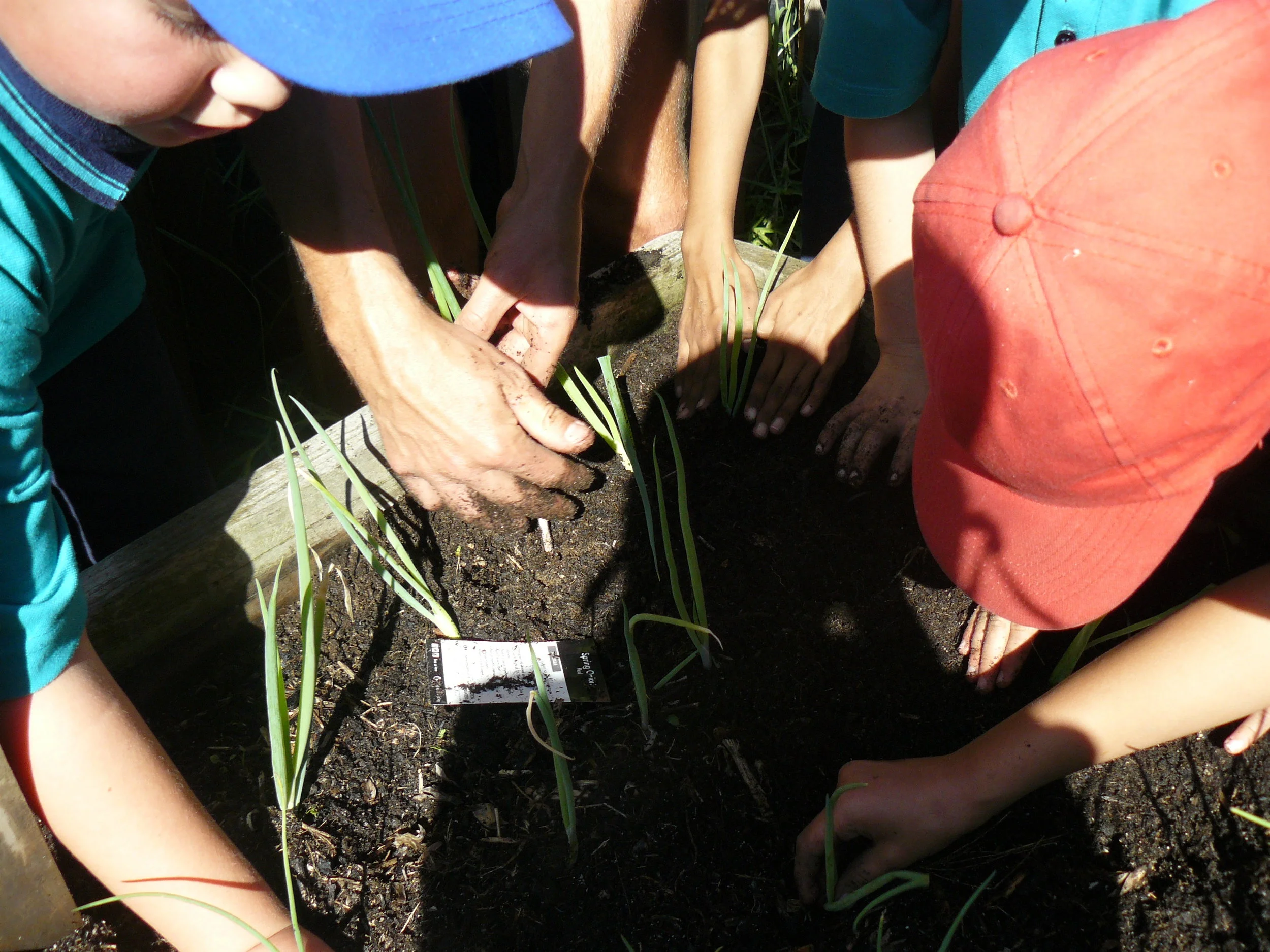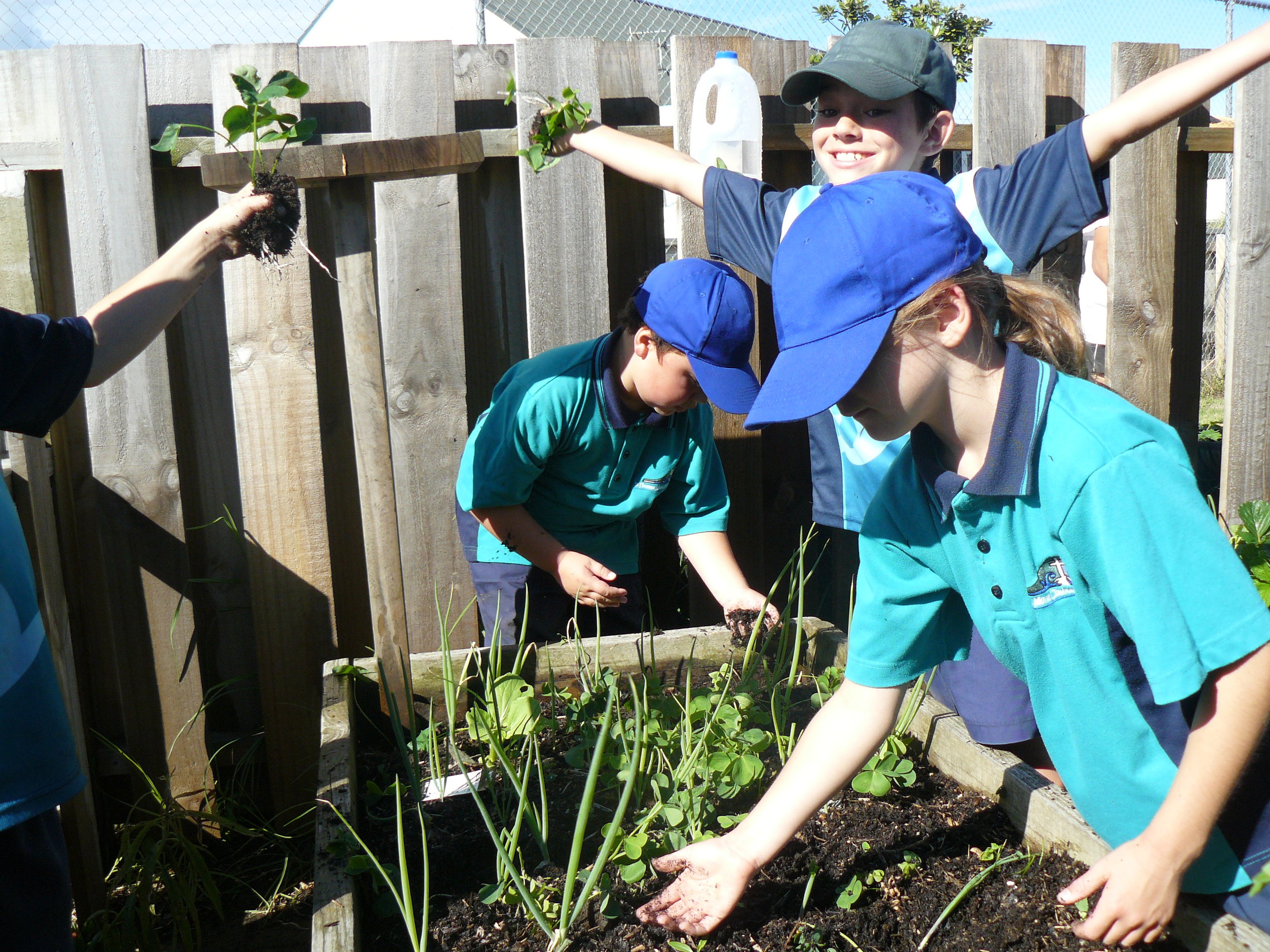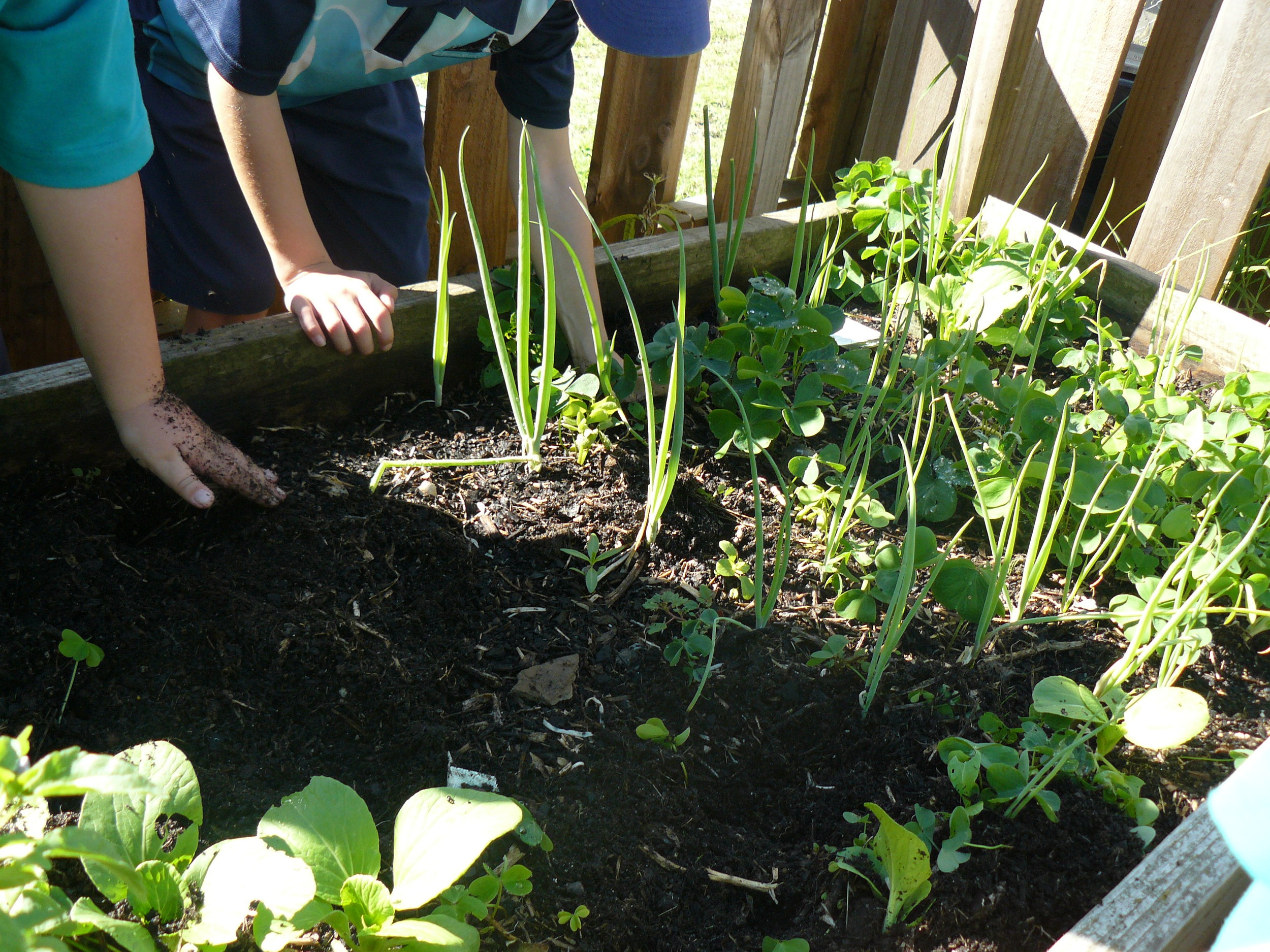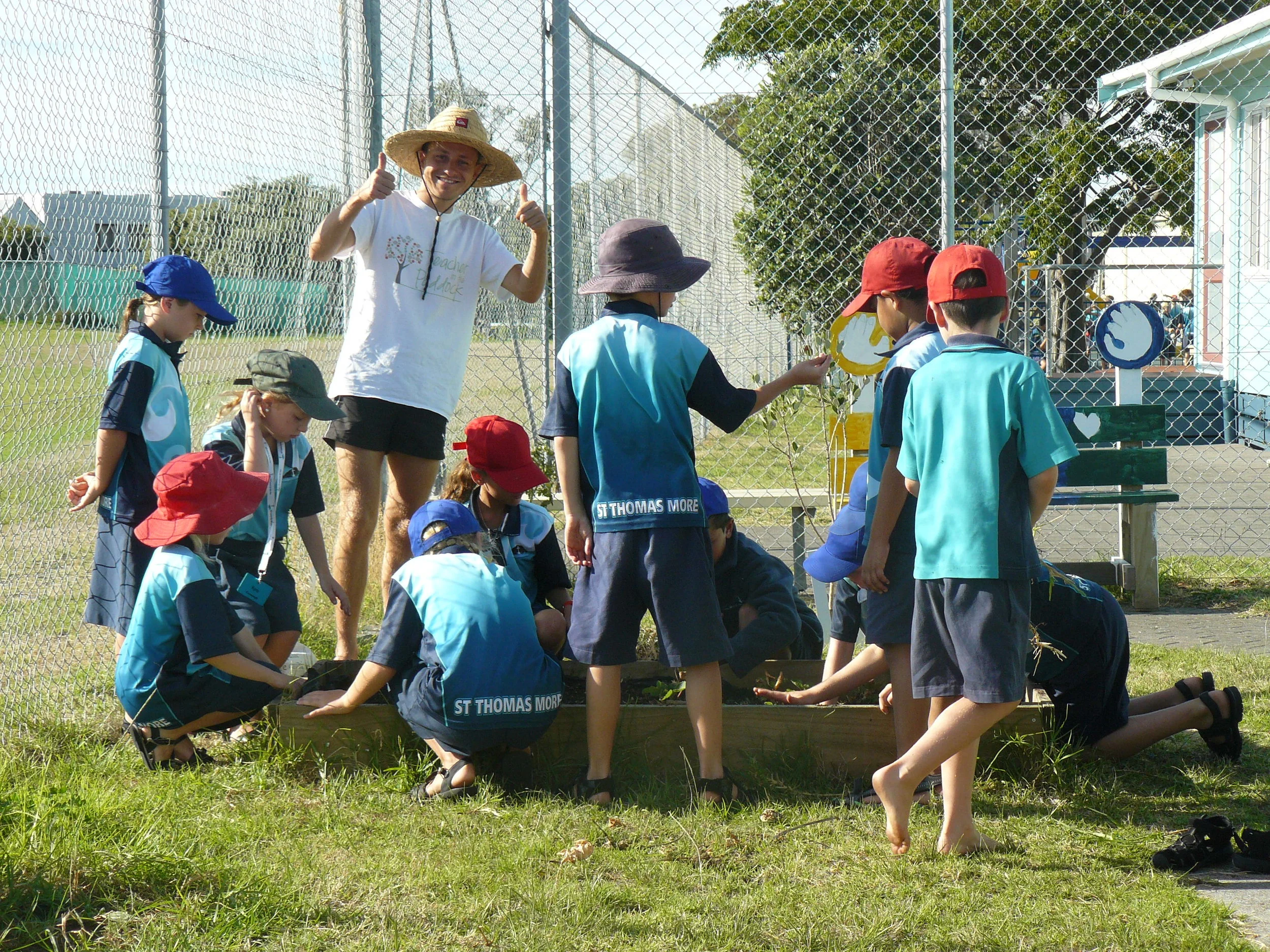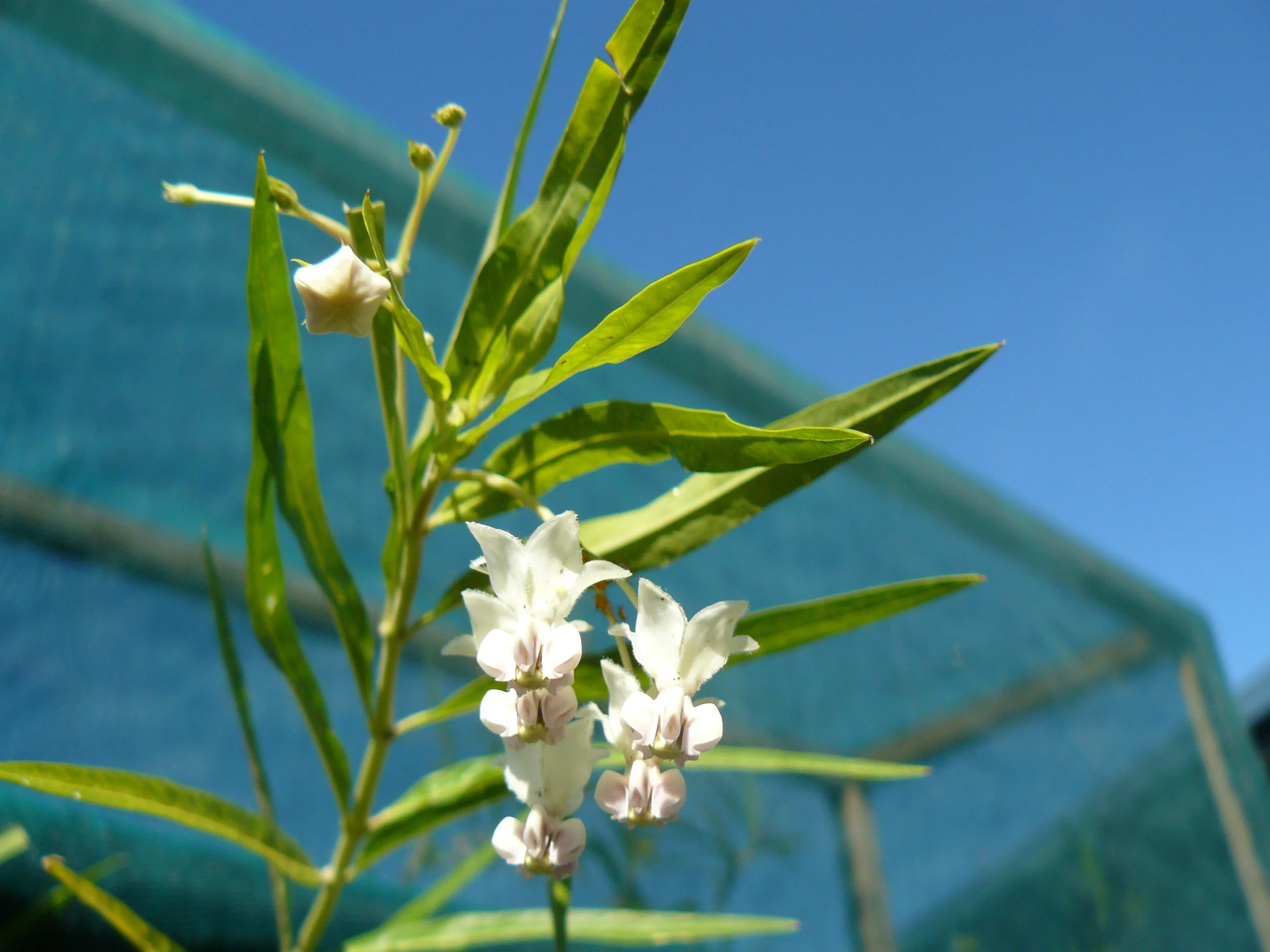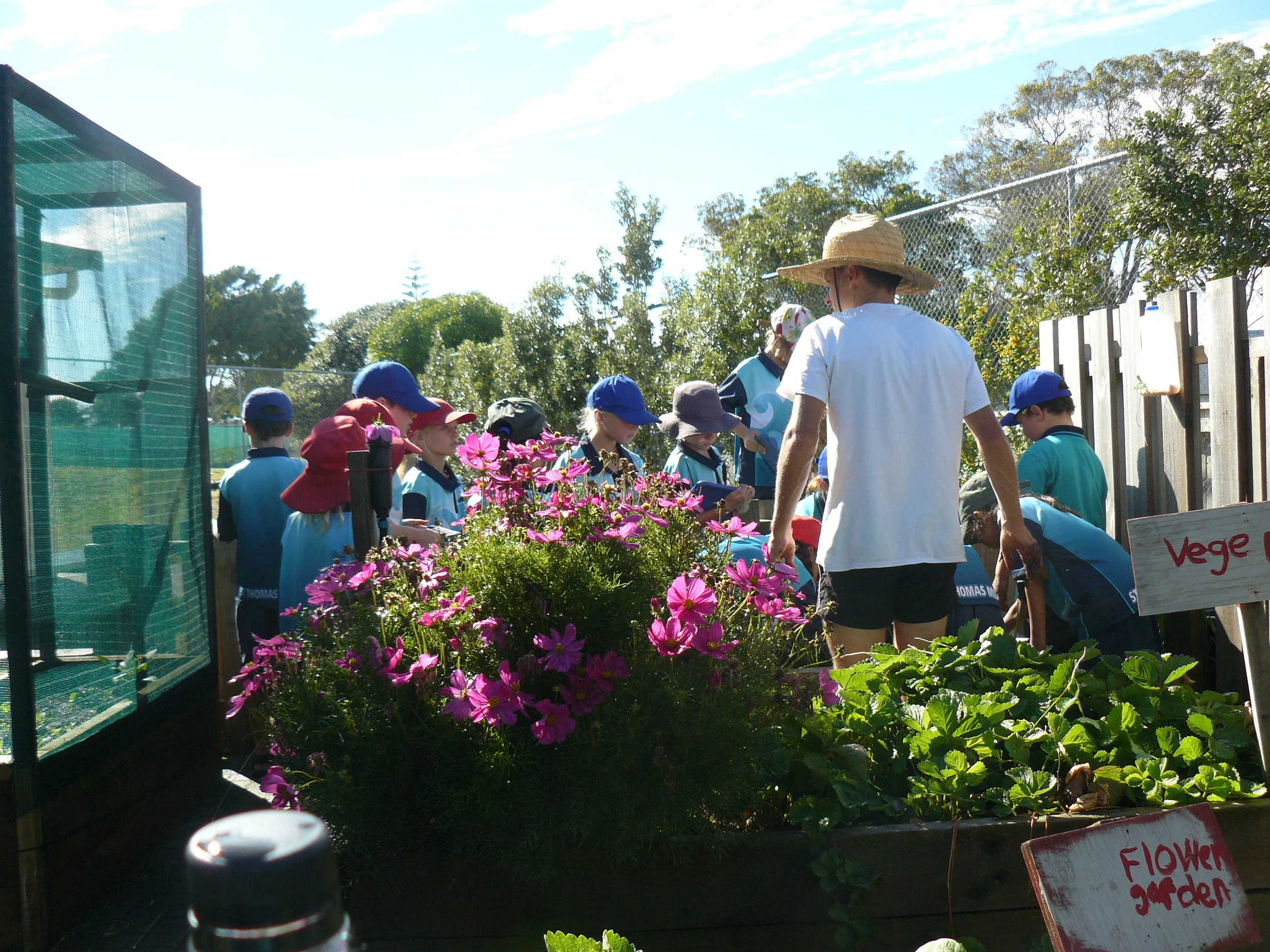August started off with some very interesting learning about propagating plants! Before we started cutting up the plants, we used our senses to try and guess what the plant were. We smelt old favourites like mint, rosemary and lavender, then worked into new plant smells and looks like citronella, salvia and pineapple sage. We learnt all about taking cuttings to create the exact genetic replica of a plant – its like making a clone! These plants need to photosynthesize which means to each sunshine and stay moist with good airflow. We learnt all about nodes and buds and where you need to cut the plant to give it the best shot at growing roots. We then dipped it into the organic rooting hormone and place it into the cutting mix – fingers crossed they take and form some roots! We finished off the lesson looking at some bugs we found under the microscope! They looked very creepy and some had even created their own nest!
The following week we got stuck back into weeding the garden but most importantly, planting our new seeds to get ready for spring! We learnt how to use the website gardengrow.co.nz and all about seasons and when to plant what. Did you know that most plants that produce a fruit - like a tomato, cucumber, capsicum or rock melon - only grow in really warm conditions? We then had to choose our own seeds to plant out by ourselves and wrote down a ‘Wishlist’ of seeds for Laura to get for next time.
We finished off the month, helping our community by planting special dune plants. The two types of plants we planted were Spinifex and Pingao. Chris from Coast Care explained to us why we need the dunes, what the plants do and how we can protect them. He showed us photos of how the Mount main strip use to look before they started planting the dunes to how it looks now. Did you know, that the dunes help hold the sand and keep the beach formed? We saw photos of LOTS of sand that would always be swept into the Mount main strip. The dunes protect the land from erosion and are also home to many wonderful, New Zealand native birds and insects. To keep the dunes alive, it is best not to walk on them, so please stick to the paths when you visit the beach!
It was a wild, windy and rainy day but that didn’t stop us from getting our mahi done. We restored some dunes that were burnt last year and learnt that if you dig a very deep hole for the plants, they have a much higher survival rate. We then added a small scoop of fertiliser and tucked the plants into bed. Thank you very much Chris for all of your passion and education around protecting our dunes! We are very grateful for the knowledge and experience you shared with us.








